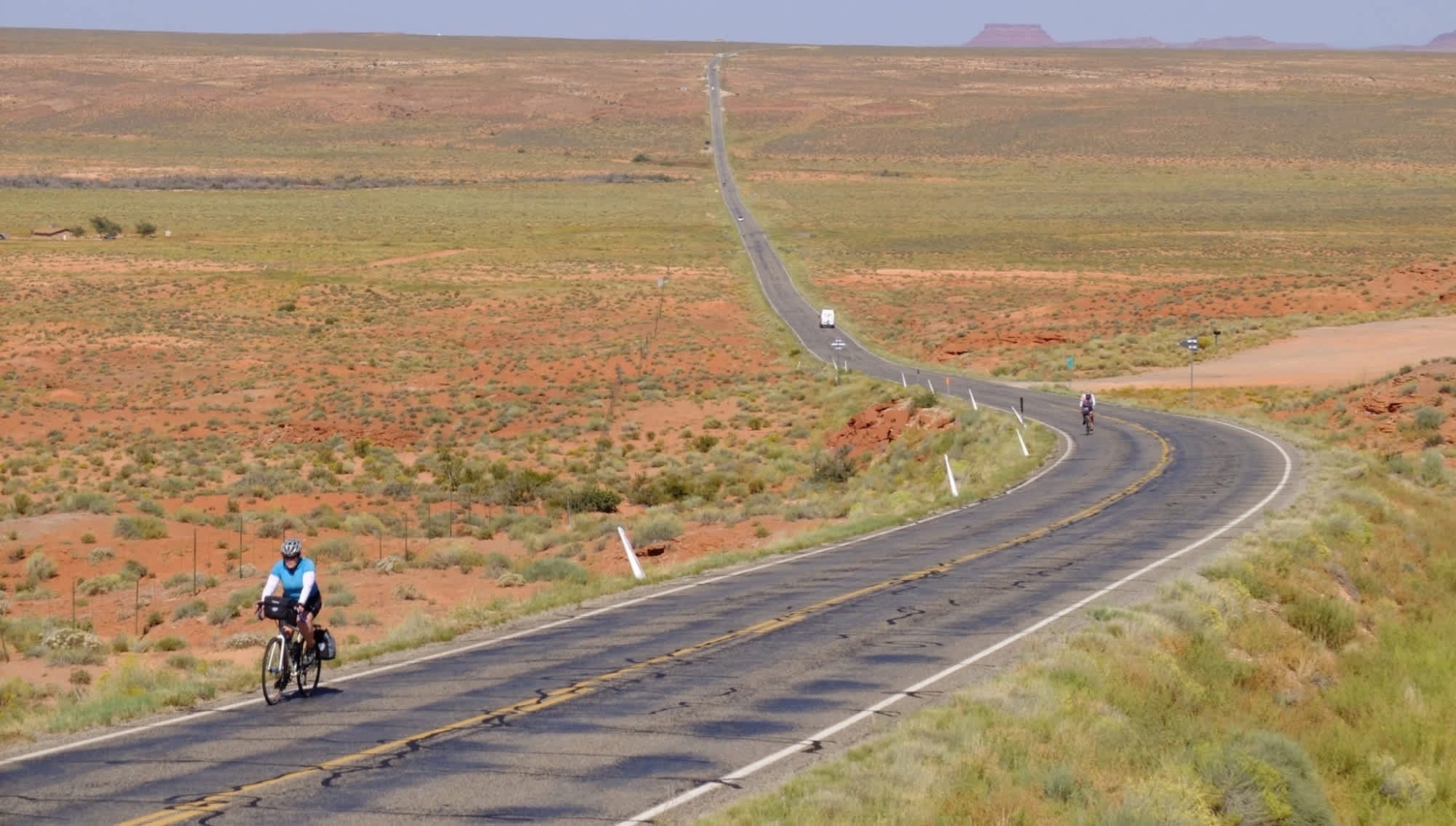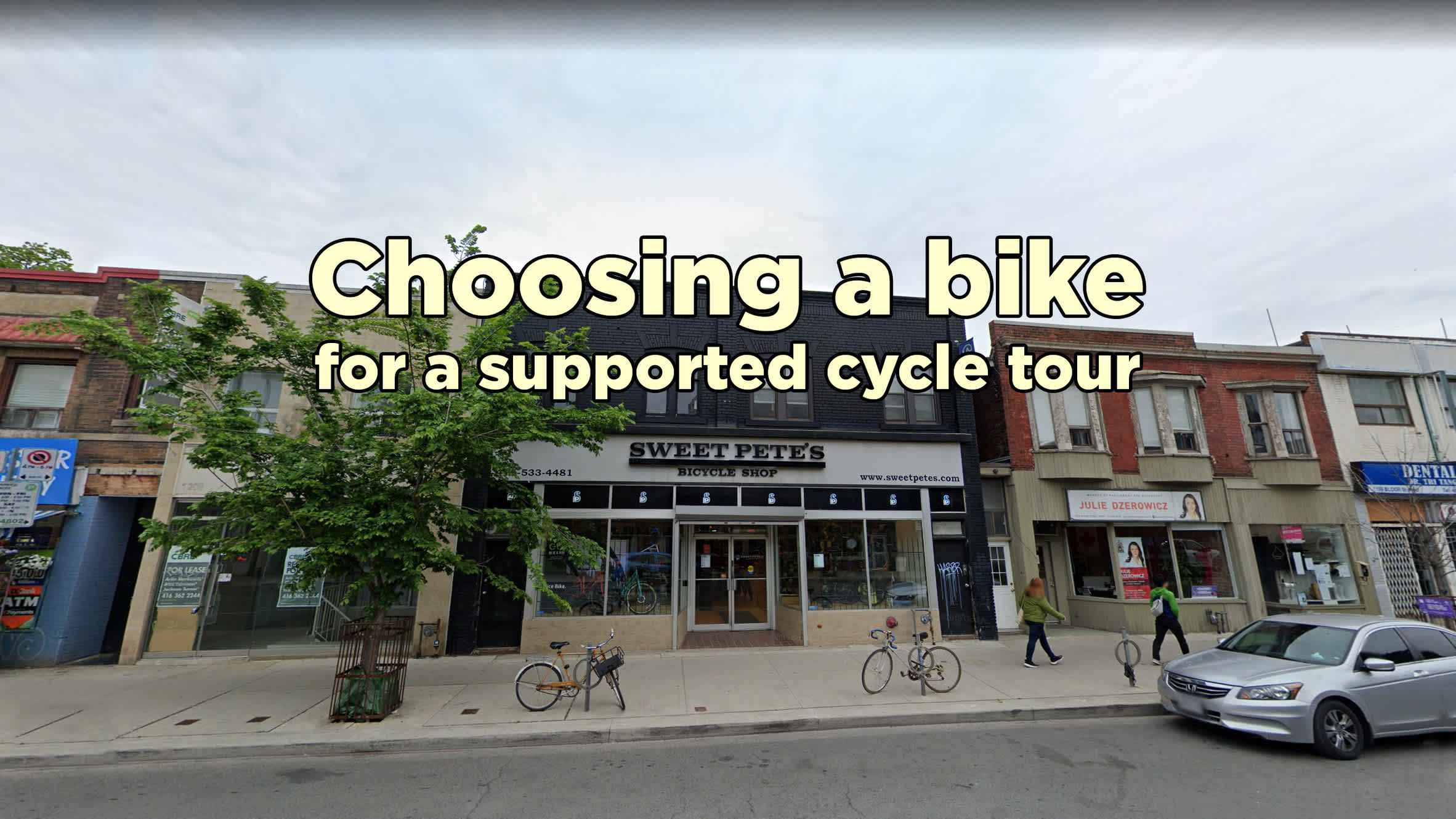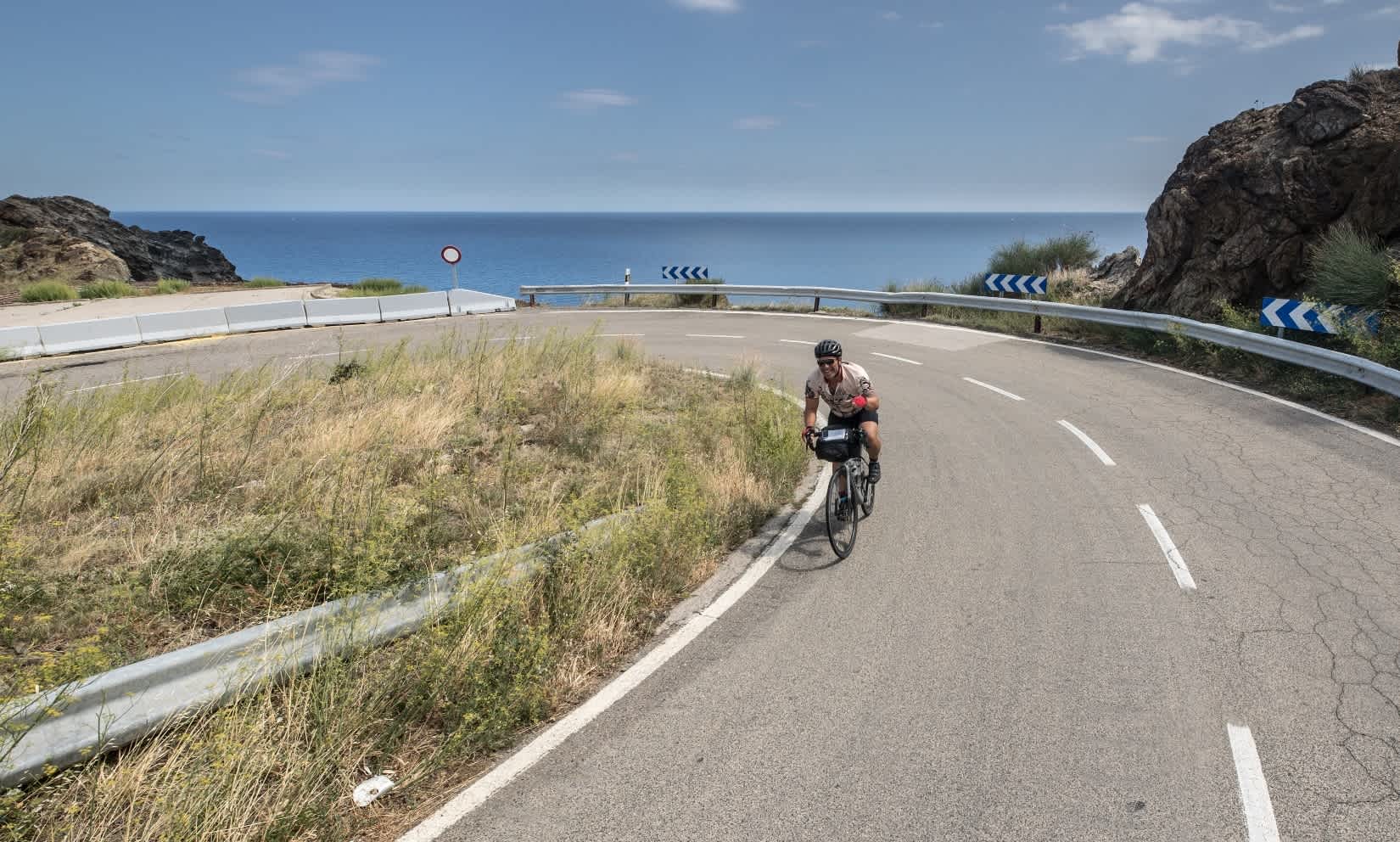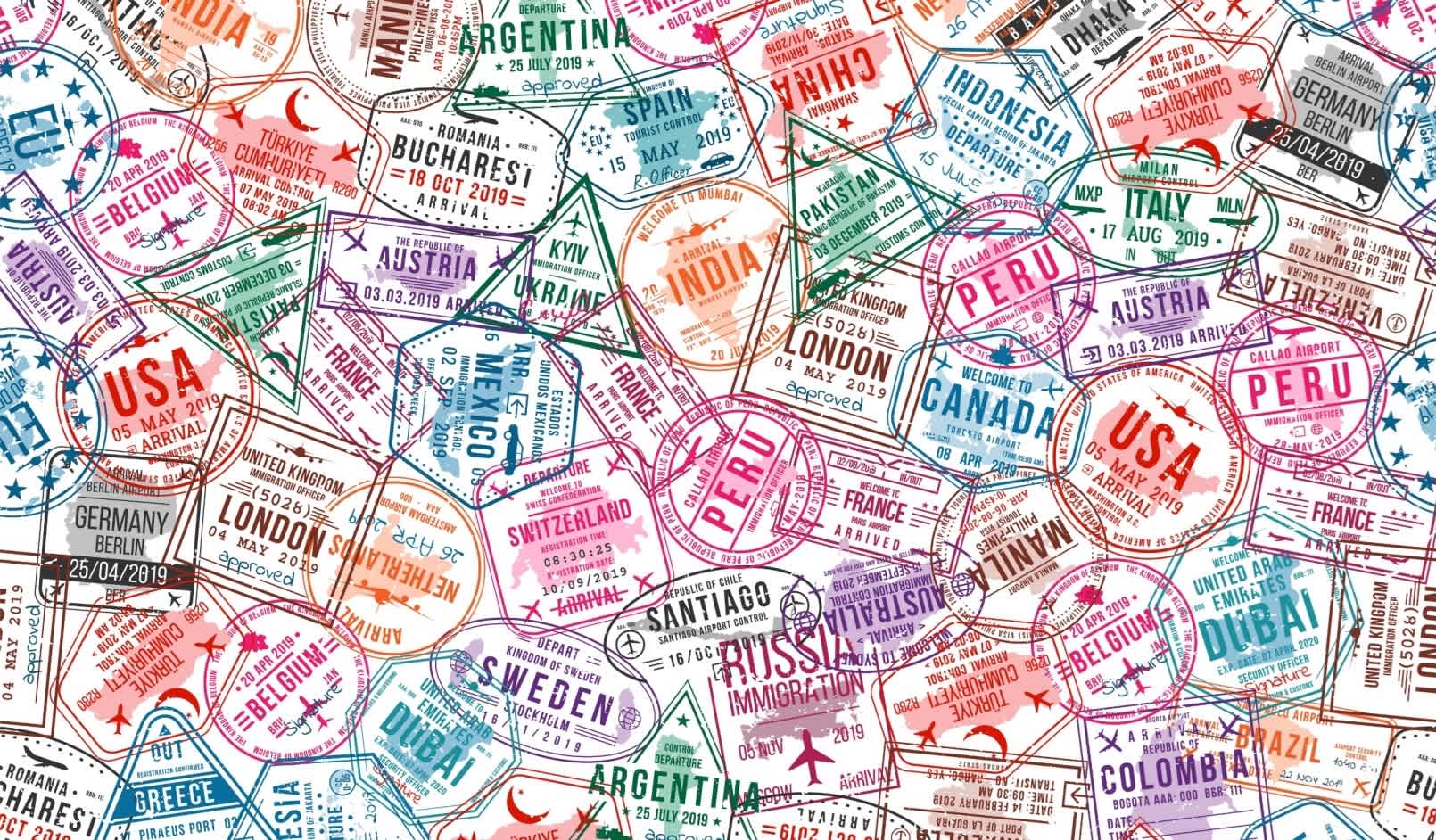As a tour gets going and the weeks roll by, the cyclists on our tours become more fit. With stronger legs, minds can be freed to be deep in thought or to not have any thoughts at all. Our inquisitive content creators often pull participants aside and ask them about what cycle touring means to them. Previously, I wrote on how time is perceived while riding – this has always been a popular topic. Another common theme we have seen is the idea that cycle touring is a kind of meditation.
As Mimi Jones said earlier this year while on the Journey to the East “when we enter through these heavenly forests – sun filtering through the trees, birds chirping – it’s really a meditative process.” In another inspiring piece shot on the The Odyssey tour this spring, Anne Thompson shared that “on the one hand you can kind of day dream, but on the other hand, you’re focused, moment by moment.” Please take a moment to watch these insightful riders share more of what they are thinking and meditating on while cycle touring.
“I try not to think of anything. I clear my mind. It’s almost like a soul cleansing experience… you’re part of nature and it makes you feel alive.”
“The bike ride is a moving mediation…You get better acquainted with yourself, flaws and all, but you can also forget about yourself in the letting go of things.”
“Most of the time I’m just looking around and letting my mind wonder…The miles just sort of fly by” said Lenore partway through our Cairo to Cape Town expedition. As for mediation she says “here [on a tour], I can do that all day long on the bike and I can still want more of it.”
Her fellow rider Vik Patel shared that “I’ve never felt more in the present then when I’m on a bike on this kind of a tour… you get on your bike and everything goes away. That’s freedom, for me anyways.”
I hope you enjoy these videos as much as I did.
]]>
“I discovered it was Saturday today. Who knows. Who cares.”
These were David’s words from the first video below. Having just returned from an incredible month of cycling on the Ruta Maya, I can definitely relate. Time can be a tricky thing when you are in the midst of adventure and physical activity. I had excruciating moments where time slowed down as the rainforest heat and humidity made the steep climb I was on seem endless – my legs burning, my shirt soaked with sweat. On the other hand, I had other zen-like moments where my pedal strokes were strong, my mind was clear and I could have stayed like that endlessly, or so it felt.
Time seemed to expand just for me. Or maybe I stopped caring about time or feeling hemmed in by it. I guess this is the kairos time that Randy describes below. It’s one of the great joys of cycle touring – we feel a distortion in how we perceive time. In the videos below, our insightful cyclists share their own take on the subject of time.
“My mind is largely empty which is a good place to be.” David went on to say that he isn’t filling his head with “the normal crud” of life. When someone is able to loose track of time and to shake off the crap of life, if just for a period of time, that’s probably a sign that they are having a good time and fully embracing the experience.
Shelly Stark, while on The Odyssey earlier this year, shared that “when I’m home…I feel like time is slipping through my fingers. When I travel… time slows down… Anytime anyone gets a chance to [put things in perspective] in their life, they will be lucky and grateful.”
“[In Italy] they have two concept of time… chronos which is wristwatch time… and kairos which is like moments of time… perpetual time. When I cycle, it’s very much kairos not chronos. I am experiencing life on the road…It’s a gift to bike travellers that you really don’t watch time, you are in time.” Randy, while on the 2022 Viva Italia
“There isn’t a future. There isn’t a past. There is… the road. Time loses perspective.” that was Tom on the Tour d’Afrique in 2019. His riding colleague Peter spoke – as David had above – about how days of the week start to loose meaning. “I’ve lost all concept of time. If you asked me what day of the week it was today I wouldn’t be able to tell you. You live very much in the moment of now. How nice is that.”
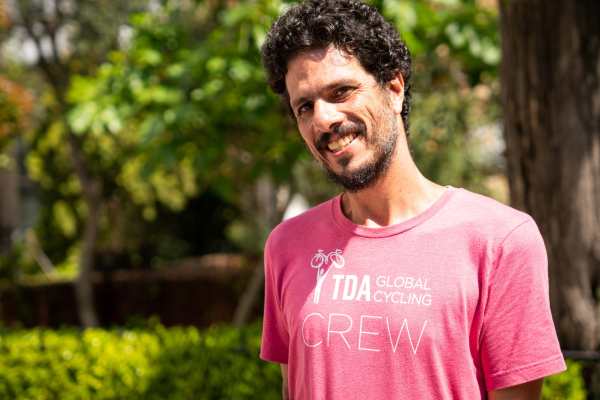 Cristiano Werneck, our head of Latin American operations, recently returned from scouting the entire route of our resurrected 2023 Ruta Maya tour. He and a colleague, Jairo, drove through Costa Rica, Nicaragua, Honduras, Guatemala, Belize and Mexico over the course of 4 weeks in April and May.
Cristiano Werneck, our head of Latin American operations, recently returned from scouting the entire route of our resurrected 2023 Ruta Maya tour. He and a colleague, Jairo, drove through Costa Rica, Nicaragua, Honduras, Guatemala, Belize and Mexico over the course of 4 weeks in April and May.
This is a tour we re-launched earlier this year after a decade of it being ‘on the shelf’. We knew that after such a long time the entire route would need to be reviewed and updated as roads and facilities along route would have inevitably changed – some for the better and some for the worse. Roads get paved, others fall into disrepair or have increased traffic volume. Some hotels are newly built while others have closed.
After reading Cris’ recent blog, I was curious to learn more about the details along the route he drove and what he thought about this tour set to start in November.
How do you scout? What is the general process? What are the key factors you consider when choosing a route (The safest roads? The flattest roads? The most interesting routes and towns?)?
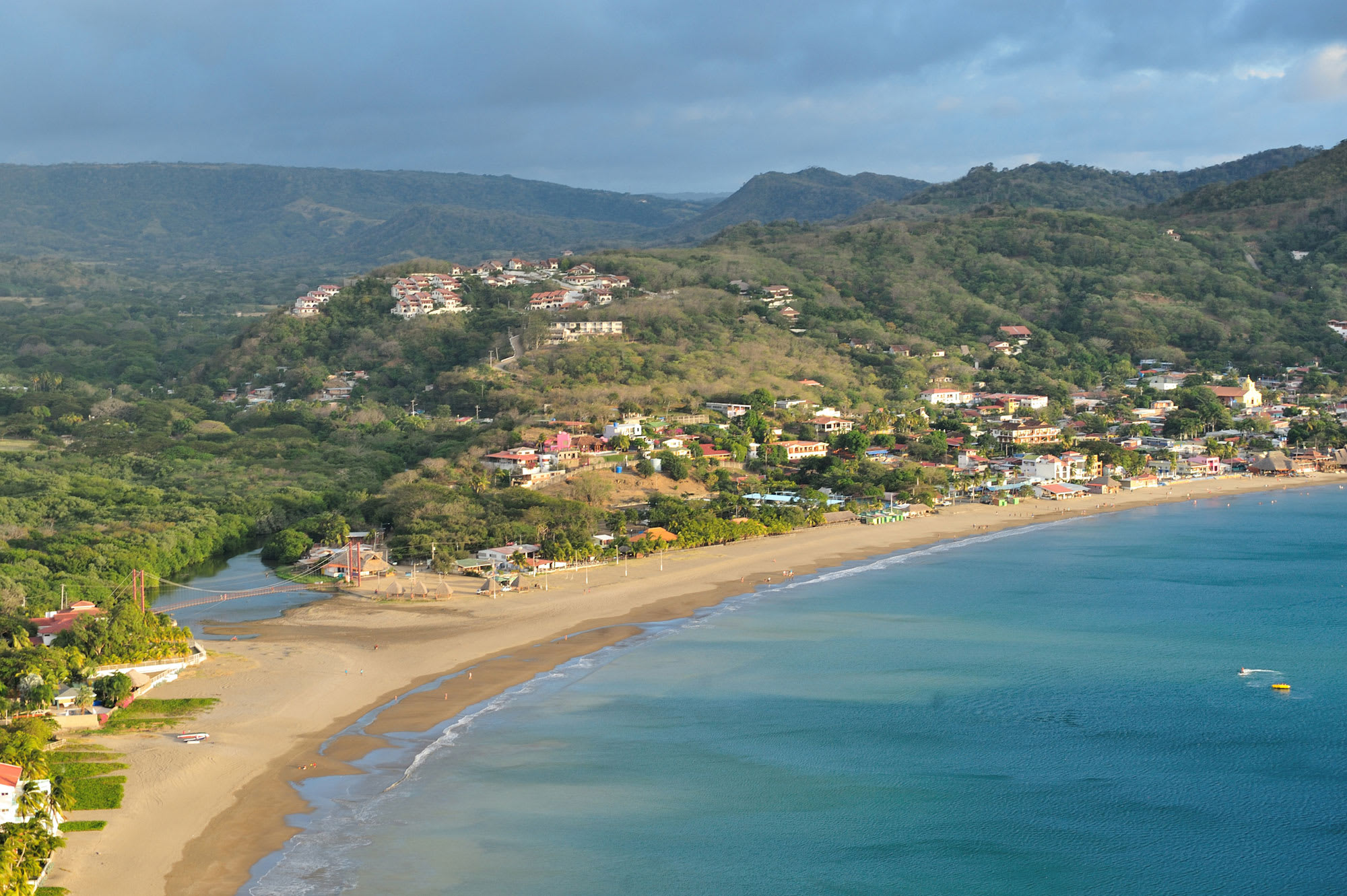
San Juan del Sur, Nicaragua
“This was a bit different than a regular scout, since we had already scouted it twice in the past and have run the tour 3 times previously. Basically, we start with a route draft on a map and some hotel reservations and we take it from there. The first thing we follow is the proposed route but we also tend to check other route options that may have been appealing in the research process. Sometimes it takes a few hundred kilometres on a certain route to realize it doesn’t work or a local suggests a different route. At the end of the scout it is not uncommon to have driven 3 or 4 times the length of the actual route.”
“The ideal route is usually a balance between safety and scenery but also points of interest, road conditions and accommodation options. When the navigation on tour was primarily the white board and flagging tape, the ease of navigation was also an important factor. This is still taken into account but it is way less vital now that everyone has the GPS tracks with them during the ride.”
From the route we originally did in 2012, what has changed (for better or worse)?
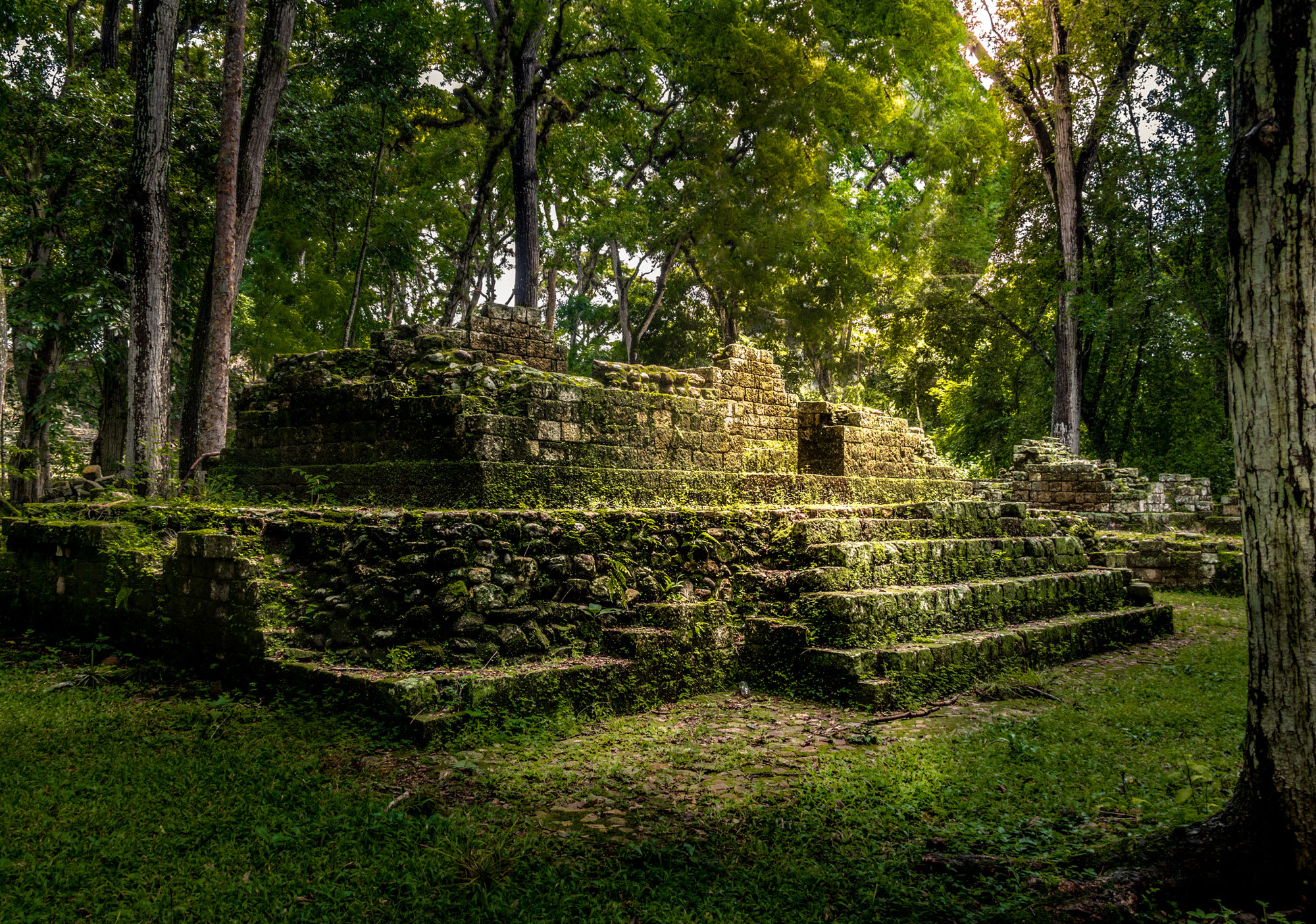
Copan Ruinas, Honduras
“I think the main change is the hotels but we have also made some small route adjustments. We did change a few towns and some entire stages but most of them were a few kilometres here and there – like updated routes into or out of bigger towns and so on. The new way we found to avoid Guatemala City is a good example of time we put in scouting. We spent a full day driving different routes to figure out a secure stretch of 30 or 40 km around the city.”
“Better or worse is really going to be a matter of individual perspective. It is certainly a much more comfortable tour than before. Hotels are better quality and so are some of the roads. But at the end of the day, sometimes I felt a bit nostalgic about some of the previous experiences we will be missing out on. Take for example the drunk owner of a rundown hotel in a small town in Honduras who, in year’s past, we would usually have to wake up on our arrival just to realize nothing was ready for the riders. Sometimes those experiences are the memories we carry with us forever, not the easy and comfortable days.”
Can you describe what the riding will be like on the new portion that extends the tour into Mexico?
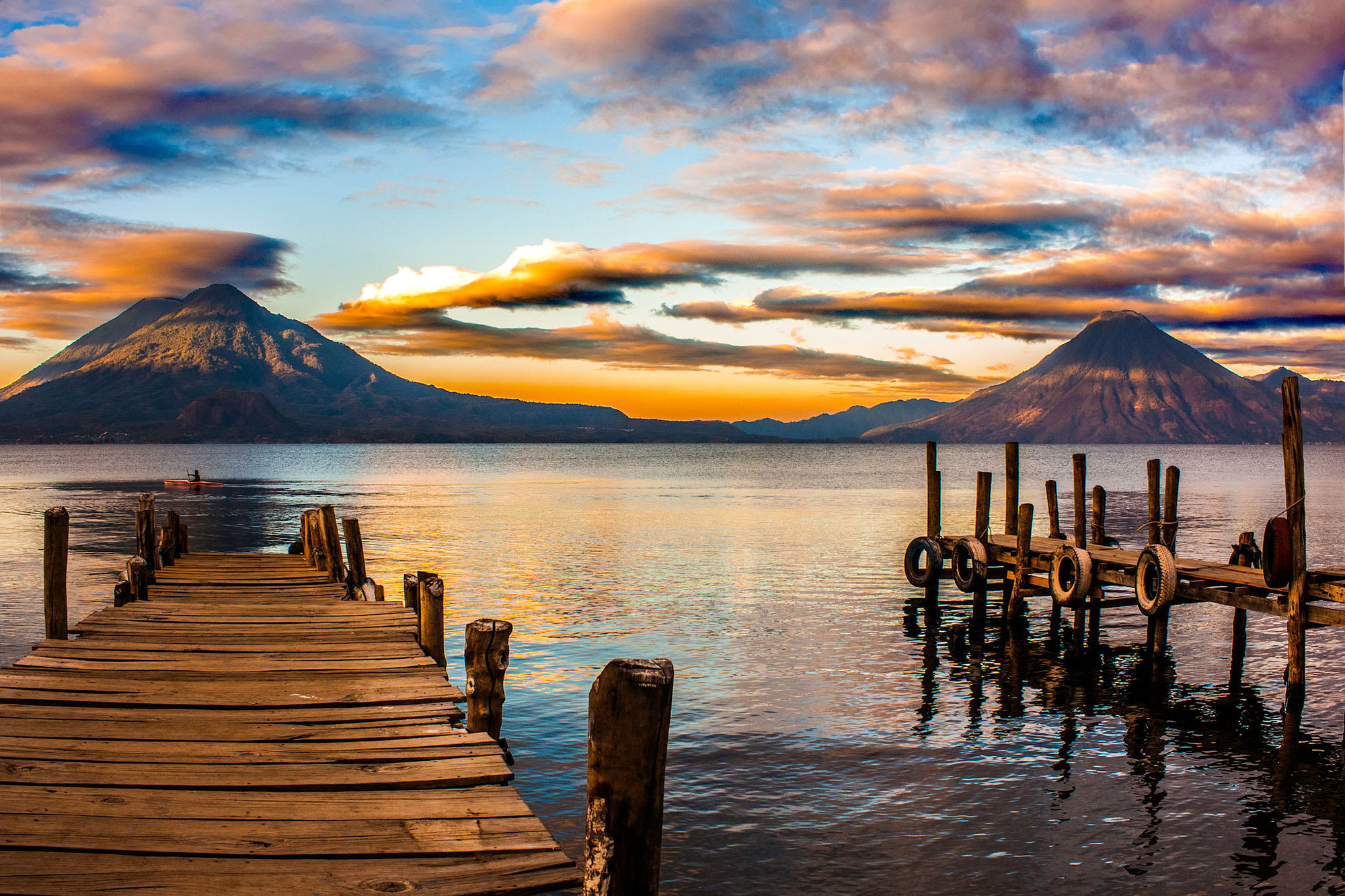
Lake Atitlan, Guatemala
“The new stretch is only a handful of stages, but it is epic. The Mayan culture is really strong, the scenery and the food is superb and the riding… well, let’s start by saying that it is by far the flattest stretch of the tour. In terms of road surface, you get remote rides through reserves that require a permit for riding through and you get a full day on a main road. You get perfect tarmac and you get potholes and even rough gravel roads.”
What do you like about this tour compared to your other TDA route scouting experiences?
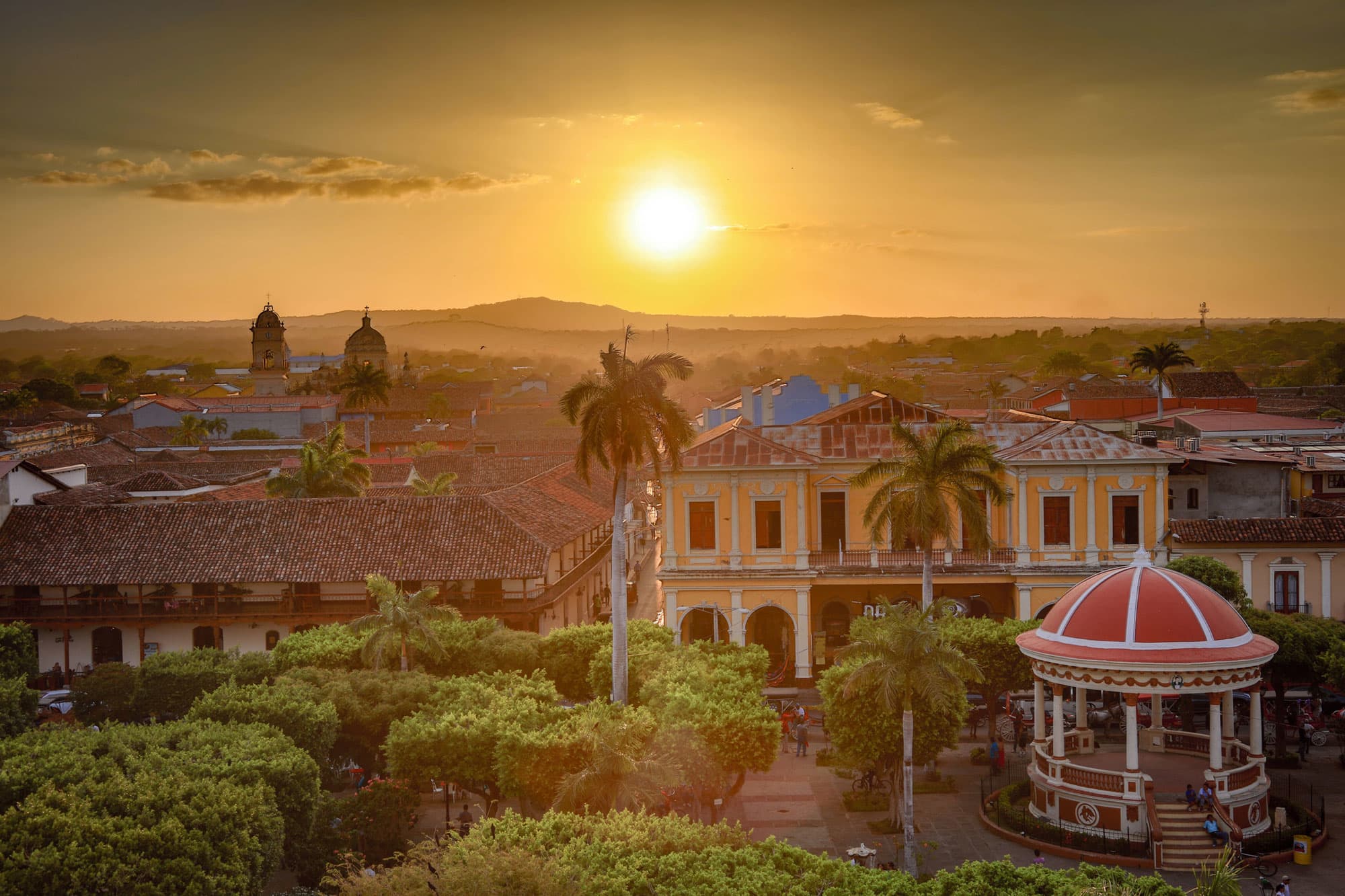
Granada, Nicaragua
“Well, it is not everyday that you get to ride through 6 countries in just over 5 weeks. It is also a route that goes off the main tourist track through Central America while also not missing so many of its highlights. Those are just some of the facts that make this route one that not many people would do on their own.”
Any security concerns in Mexico and Central America?
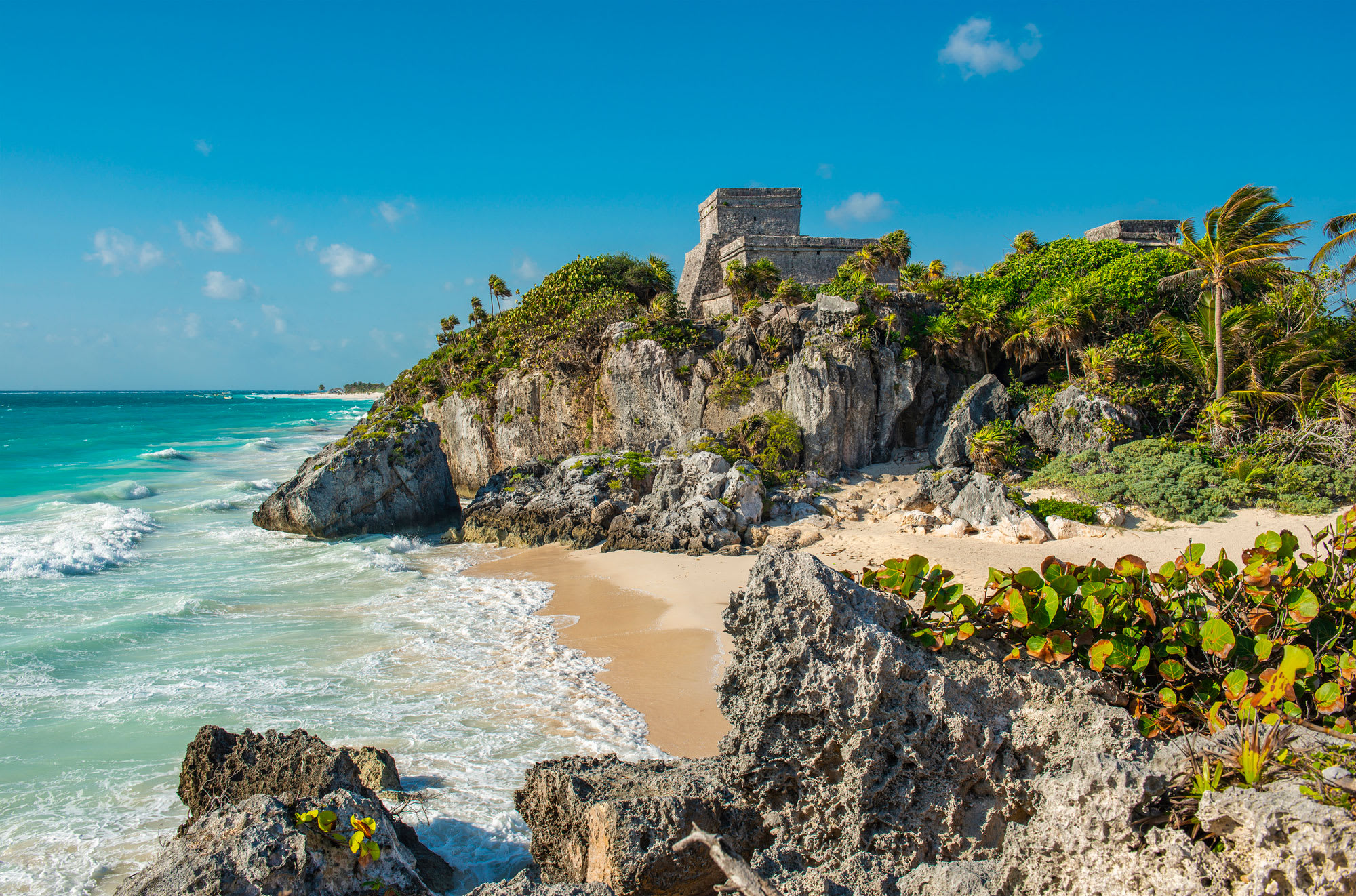
Tulum, Mexico
“Over the last few years Central America has been changing a lot. I felt that it has been developing well although some parts of the route did feel to be struggling more than ever economically but for the most part it did feel like development was moving forward. Digital nomads are everywhere, Bitcoins are being accepted in a lot of places and you see a lot more international tourism. People feel friendlier and happier in general. Because Belize is not part of the North American Epic tour, I hadn’t been there for much longer than the other countries and maybe because of that, it was probably the country where I felt that the most. Quintana Roo in Mexico is one of the safest parts of Mexico for international tourists. Development is happening pretty fast now and if you haven’t been to Tulum in a few years, you wouldn’t recognize it now.”
“So, things can happen anywhere, but as Henry likes to put it, the main risk in any of these tours is always sharing the roads with motorized traffic.”
Can I bring an e-bike on the tour?
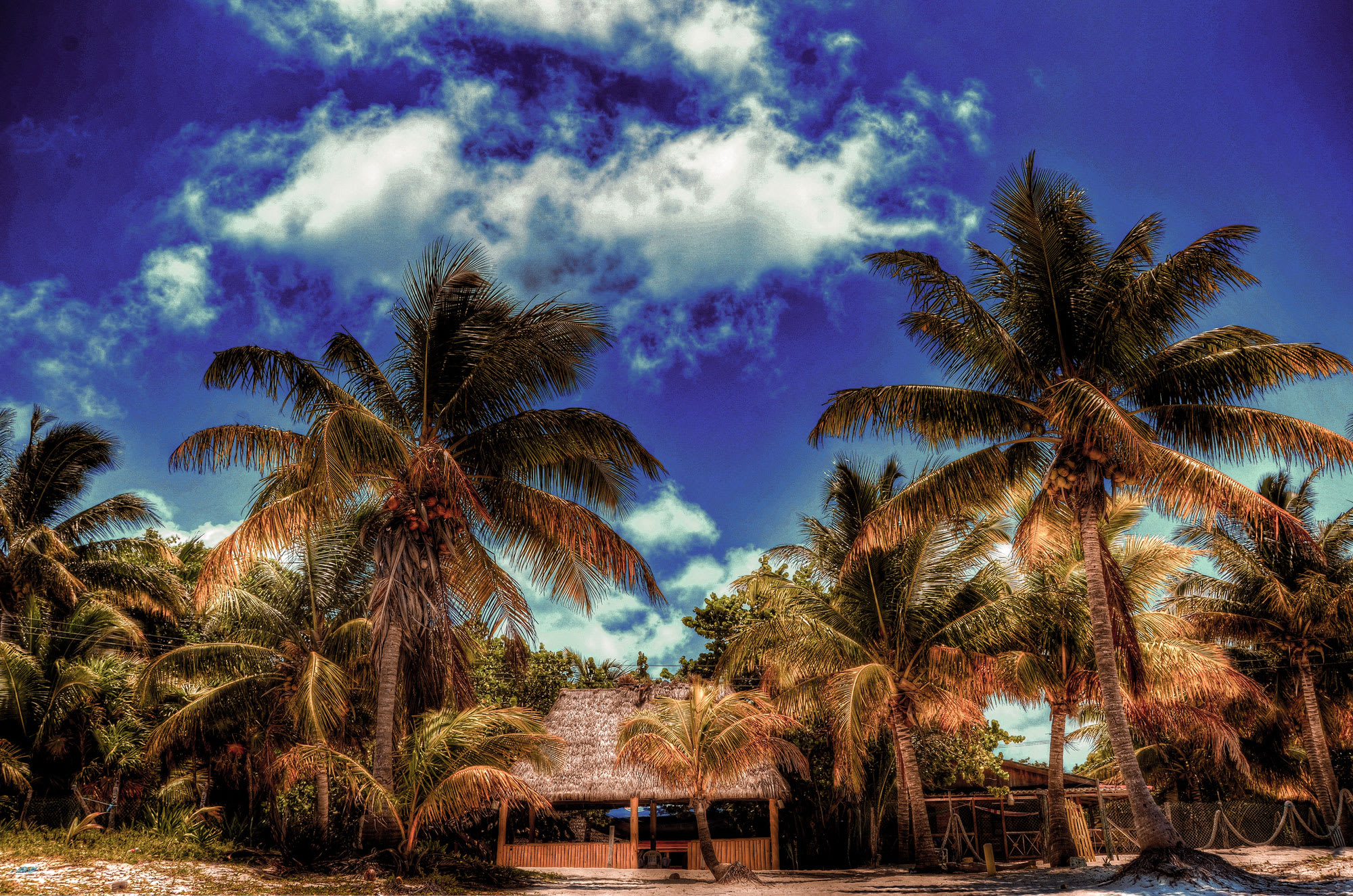
Reserva de la Biósfera Sian Ka’an, Mexico
“Yes, it would be possible to bring an e-bike on this tour as long as they meet our requirements but there are a few things to consider. Our tour support is designed for the speed of non e-bike riders. So, if you want to bring an e-bike to be able to keep up with friends or family who are on regular bikes, that works well. If you are already fit enough to do the tour on a regular bike, and want to go even faster on an e-bike, you may end up being frustrated with the framework of our support system as it is not designed to support you if you are much faster than the rest of the group. You also need to make sure your batteries can withstand the climbing and the distances and that you have enough power for the full day rides. You cannot fly with your batteries, so most likely you would need to buy them in Costa Rica. Although there is a very good bike shop one block from our departure hotel in Costa Rica, you would need to contact them far ahead of time for them to get these batteries in time.”
Spaces are still available on the 2023 Ruta Maya tour which starts November 5 in San Jose, Costa Rica.
RELATED
TOUR
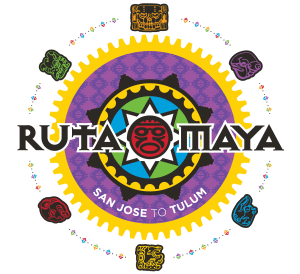
Ruta Maya
This incredible cycling adventure will take riders across Central America, from Costa Rica through Nicaragua, Honduras, Guatemala, Belize and on into...
]]>
I have not spent much time in Italy so while watching these videos I had one of those vicarious experiences where the scenes really drew me in and I imagined myself in those places, struggling up some of those hills. What more could you want in a video?
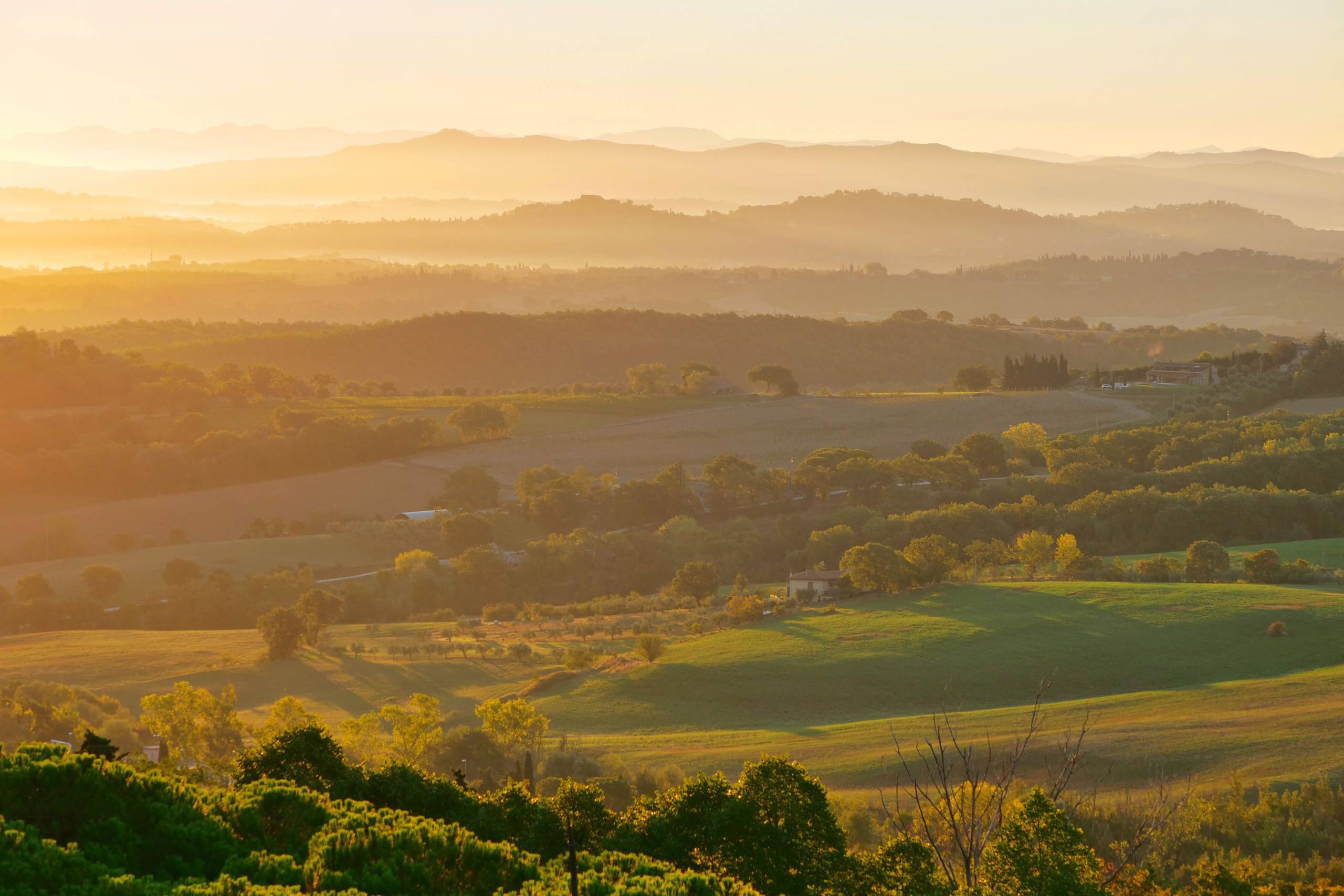
What stands out to me about the Viva Italia videos is the orange glow that permeates these scenes. Italy is blessed with some incredible natural and man-made scenery – towns clustered along hillsides, sunsets and sunrises that seem to hit you differently. You could argue that TDA Global Cycling does things a bit backwards. Italy is one of the original cycle touring destinations, for good reason, and remains one of the world most popular places for bicycle tourists. We had been running cycling tours for about 15 years before finally creating this tour of Italy and, boy, are we glad we did! While it may not hold the intrigue and adventure of crossing Africa or South America, what it has in bucket loads is beauty and charm.
As a Canadian participant noted in the video, “When you think of Italy [you think of] cars, fashion, beauty, the arts. The country is just an amazing country and of course that was just the beginning.” What a true statement that is because these riders were not just regular tourists simply soaking up the warmth and the history. These are the cyclists that struggled up the hills, sweated through the midday heat, and pedalled around a portion of the country unlike what 99% of tourists would ever consider visiting. And in that way, they got to see more than the beauty and the charm and hopefully found some deeper more meaningful things along the way.
Below are the videos for you to enjoy. Registration for the 2024 Viva Italia is now open.
Part 1 – Rome to Cagliari
“My first day… struggle, fatigue, pain… having said that it’s just wonderful seeing the classic Italian terrain.”
The riders set off from Rome early in the morning and headed north through historic towns and olive groves in Tuscany. They took a ferry to Corsica where they pedalled across deserts, along coastlines and through spectacular granite mountains. Another short ferry delivered them to Sardinia, an island littered with mysterious, sculpted rocks, medieval churches and vast cork oak and pine forests.
Part 2 – Palermo to Rome
“Now…the draw of going back to Rome. Much of our ride will be along the coast. I’ve come to appreciate how hilly and mountainous Italy is, which hugely explains its beauty, its challenge.”
Arriving from Sardinia, the cyclists spun along Sicily’s northern coast before they turned inland and headed southeast through Sicily’s timeless and rustic interior. After they rode in the shadow of Europe’s most active volcano, Mt Etna, to Messina they hopped aboard a ferry back to the Italian mainland. The cyclists entered the region of Calabria and followed the coastline north, passing through numerous small fishing villages, their waters filled with ancient shipwrecks, their histories replete with legends and tall tales.
The ride continued north and reached the legendary Amalfi Coast for their final rest day, with its colourful houses delicately perched along sheer cliffs that plunge down into the turquoise sea. Then the journey came to a close as the riders pulled up in front of Rome’s immortal Colosseum.
A special thanks to Coby Werlin (www.cobywerlin.com) for completing this video series. He was also our Content Creator for the North American Epic, The Odyssey and the Pub Ride among others. You can see more of his videos and all our tour videos on our YouTube channel: youtube.com/@tdacycling
RELATED
TOUR

Viva Italia
It has been said that all roads lead to Rome and the Viva Italia cycling tour is simply more proof that this may indeed be the case. Participants will...
I just returned from Southeast Asia where I was able to see the Bamboo Road cyclists as they set off from Hanoi, before I flew to Laos to do some scouting work for next year’s Golden Buddha Ride. If you have been following our blog, you know that the Golden Buddha Ride is a modified version of a tour we originally called The Road to Shangri-la. Instead of continuing north through Laos into China (which continues to have closed borders), we will now head west from Luang Prabang (in Laos) and then south through Thailand and finish in Bangkok – home to the 5.5 ton solid gold Buddha that our tour is now named for.
While Vietnam and part of Laos had already been scouted and finalized as part of our former ‘Shangri-la’ tour planning, I was tasked with flying to Luang Prabang to scout a few cycling stages in Laos and the entire route we will take through Thailand. I posted an album of a few of my photos from the scout on Facebook. You can find those here.
While I have only been back a few days, I wanted to share my initial thoughts on this portion of the Golden Buddha Ride that I was fortunate to be able to experience.
A Mix of Urban and Rural
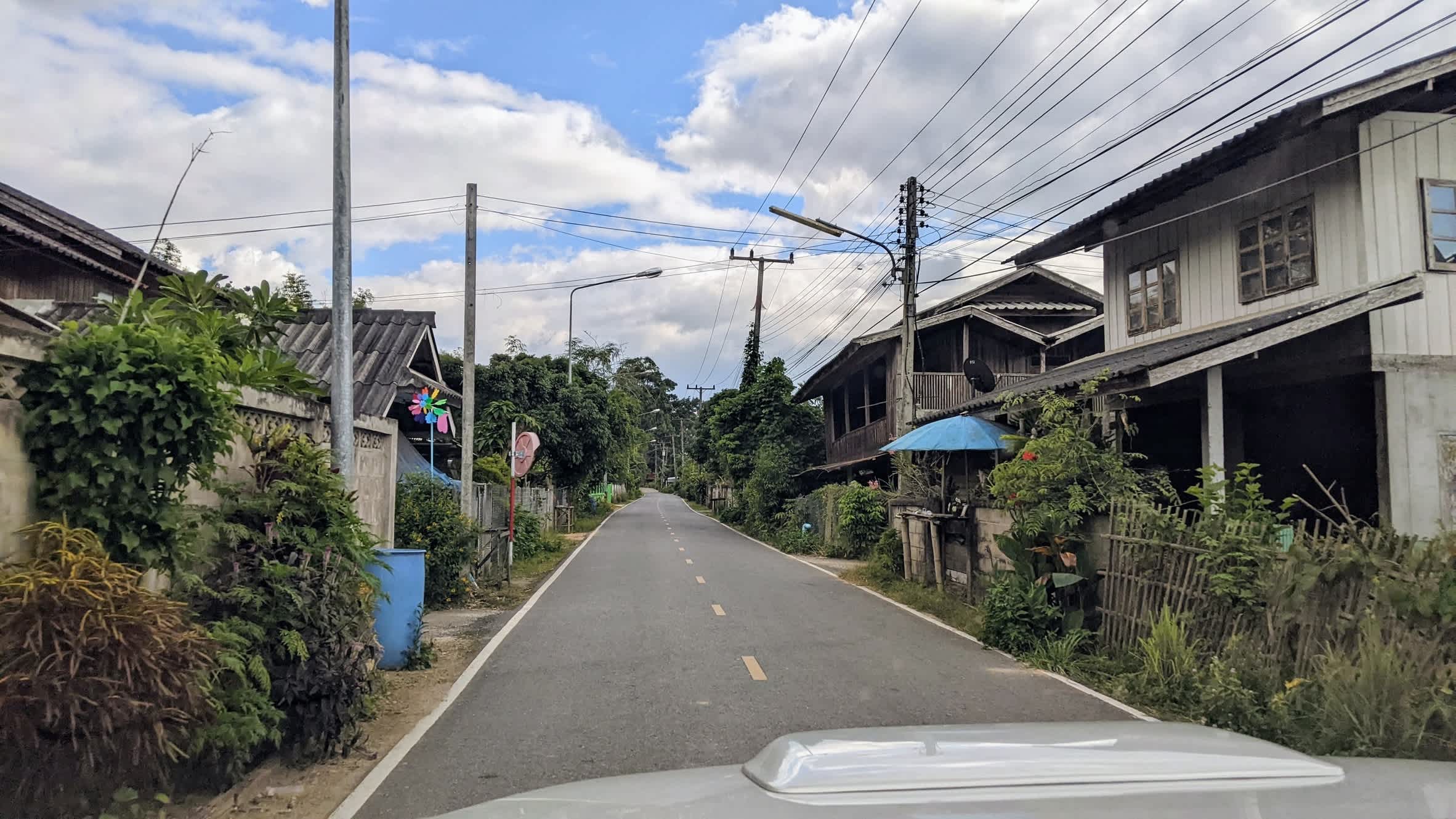
Working alongside our local partners, I was able to find some excellent cycling roads. There are plenty of wide open spaces to immerse yourself in nature. But there are also lots of opportunities to experience the life, the culture and the food of these countries up close as we pedal through villages and towns on smaller streets with limited traffic – avoiding the big and busy highways most of the time.
There were a number of times that I wanted to get out of our scout car and find a bike to experience these wonderful roads myself, but hopefully I’ll be able to join the cyclists next year and experience it on two wheels with them.
Golden Buddha Ride is an Apt Name

Not only is there a 5.5 ton Golden Buddha in Bangkok that I mentioned earlier, the landscape along the route of the GBR is dotted with large and larger Golden Buddha’s. Sitting, walking and reclining – you see Buddhas throughout our time in Thailand.
The Route is Taking Shape and It Should Be Fantastic

While some route decisions are still to be made in Laos, the route is almost fully formed
While some route decisions still need to be made (we may need to run one more scouting mission to Laos), for the most part the Golden Buddha Ride is nearly fully formed at this point. We have accommodations identified in each stopover town, and GPS tracks along the entirety of the route to keep you pointed in the right direction. We managed to find mostly quiet and gorgeous roads – some far out in the lush countryside, some high up in the hills of Laos and Thailand, others passing by rice fields or through narrow village streets.
The road network in Thailand especially is vast and it was almost overwhelming to see the number of routes we could take. We drove many options and found the best of the bunch and having experienced the routes we use all over the world, I can confidently say this will make for some really rewarding, safe and unique riding.
Buddhist Temples Make Great Roadside Lunch Spots
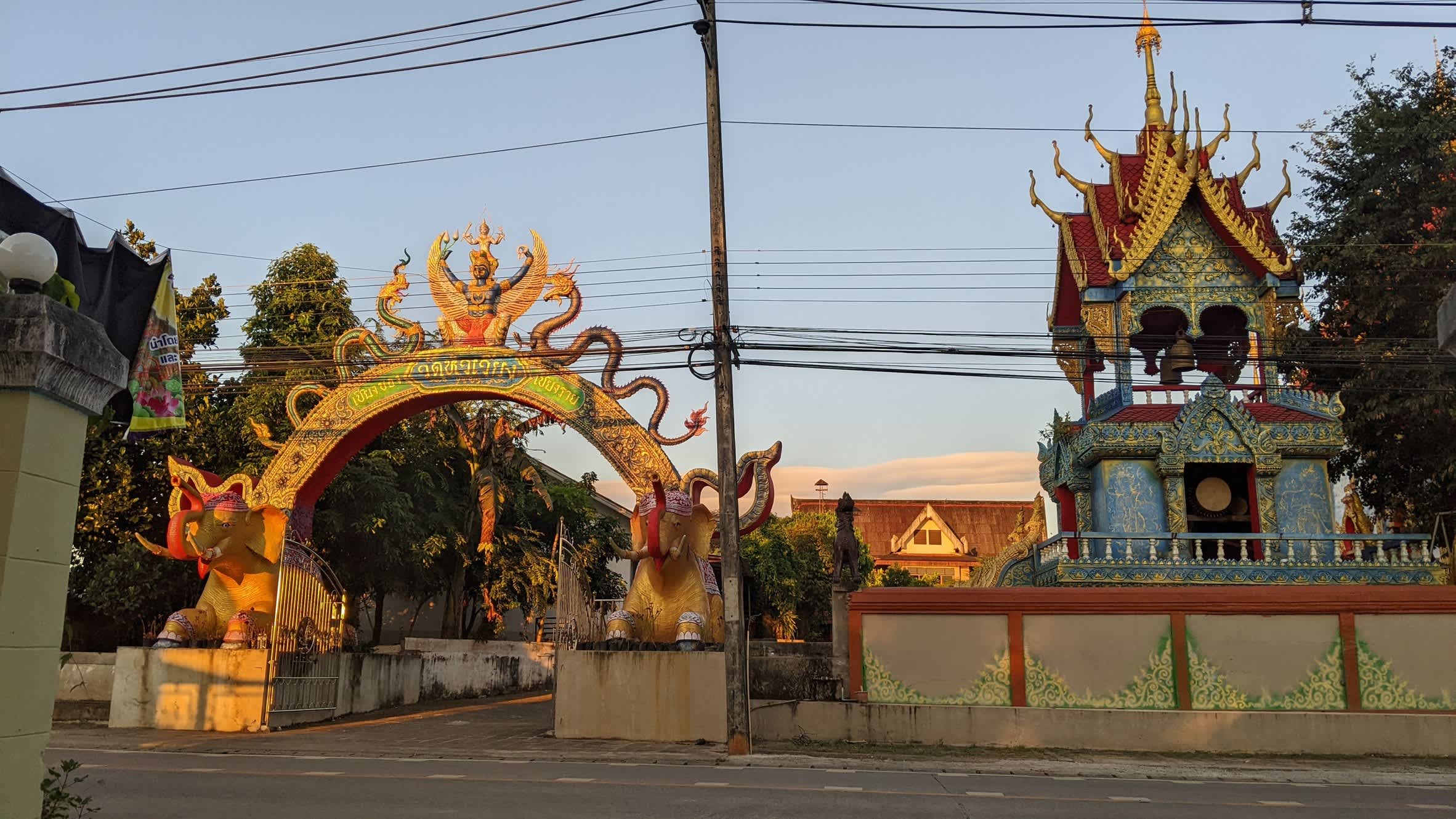
One of the many advantages to scouting with a knowledgeable local guide (big thanks to Chit in Laos and Tick in Thailand) is how much value they add to the scouting – and ultimately, how much better the cycling will be for our cyclists. Normally when I am scouting, I am looking for a flat patch of land next to the road at about the midway point of each riding stage – somewhere to stop our vehicles to set up the roadside lunch for the cyclists. But in Thailand, Tick explained to me how Buddhist temples – which we see in every village across our route there – are very welcoming places and an ideal place to set up our lunch. These roadside temples all have toilets, shade and a bit of peace and quiet inside the compound walls.
With Many Highlights Already, We Added One More – Sukhothai
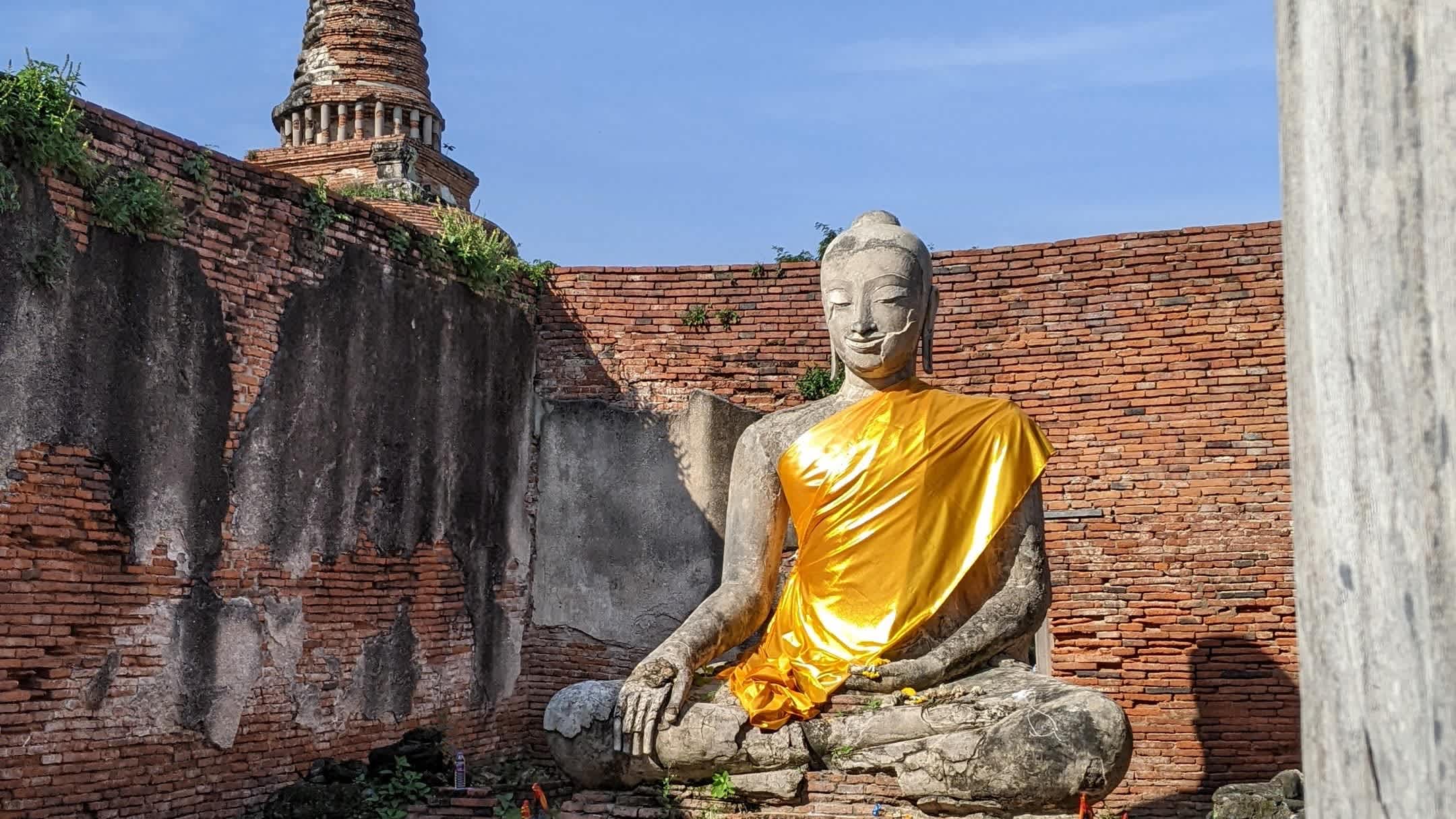
Scouting requires a lot of decision making and hard choices. For example, we decided to remove Lop Buri from the route. Known as the ‘Monkey City’ we had promoted this as one of our curious stopover towns, but what we learned while scouting is the town had become overrun with monkeys during the pandemic to the point that it would no longer be enjoyable for anyone involved. But as one highlight gets removed, another fills its place.
In our search for safe and enjoyable roads to take, we found that a stopover in Sukhothai made a lot of sense. This is a UNESCO World Heritage Site and was the first Kingdom of Siam in the 13th and 14th century. We will now pass through the three capitals of Thai history – Sukhothai, Ayutthaya and, of course, modern day Bangkok.
We will cycle straight through Sukhothai Historical Park where many well preserved stupas and temples remain. As described on the UNESCO page, it contains a “number of fine monuments and works of monumental sculpture, illustrating the beginning of Thai architecture and art known as the ‘Sukhothai style.'”
Reach Out! I’m Happy to Help
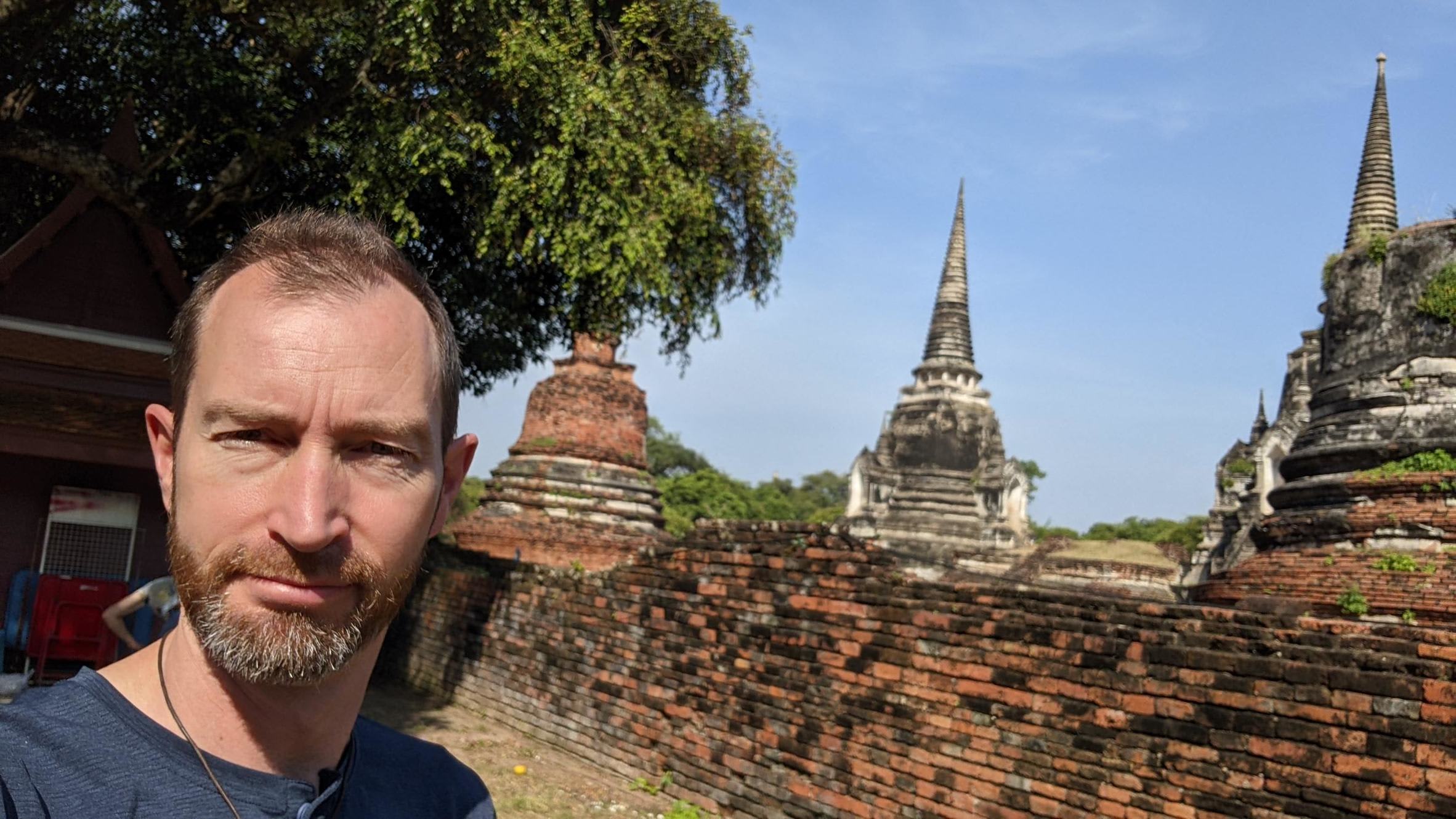
If you are considering joining the Golden Buddha Ride, please reach out to me anytime. I am happy to answer any specific route questions you might have. If you would like to have an updated tour schedule (including all the new elevation data) please let me know ([email protected]) and I can send this to you in a few weeks.
RELATED
TOUR
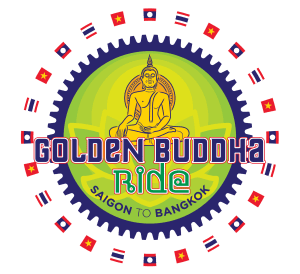
Golden Buddha Ride
Join us on our cycling quest for the fabled Golden Buddha. Our journey begins in the bustling modern city of Saigon and continues up the country's...
Here at TDA Global Cycling we are fortunate to have a growing and involved community of cyclists. Year after year they are kind enough to take a few minutes to share with us some really valuable feedback in our annual rider survey. We understand that people want to contribute their thoughts and have their concerns addressed so each year we closely review the surveys and use the information to keep improving our cycling adventures. We would like to thank everyone for their participation.
This year’s survey takers may have also been motivated by the opportunity to win the draw prize – a $200 gift card to their local bike shop. Congratulations to our 2022 prize winners – Richard from Florida and Renata from Vancouver!
We had almost 800 newsletter subscribers and past participants complete our annual survey and I thought I’d summarize some of the results that really caught my attention.
Where People Want to Travel

The top 5 countries where people want to travel are not surprising choices at all. Italy, France, Canada, New Zealand and Spain are some of the most popular cycling destinations in the world. Rounding out the top 10 were Argentina, Australia, Chile, Croatia & Iceland, with Ireland, Japan, the UK, the US, and Vietnam not far behind.
Almost all of these destinations are part of the tours that we operate in over 80 countries around the world. Check out our tour finder and search by continent to find your next cycling adventure.
For the tours that we run, our survey respondents chose the ones they are most interested in signing up for:
- Tour d’Afrique (22% of the vote)
- Silk Route (9% of the vote)
- Viva Italia (8% of the vote)
- Pub Ride (7% of the vote)
- Orient Express, Trans-Oceania and South American Epic (tied at 6% of the vote)
Other newer tours like Trans-Caucasus and Golden Buddha Ride ranked lower, most likely because they are so new that not enough people have heard of them yet.
Cycle Touring Plans

The percentage of people who told us that, after doing one of our tours, they would be highly likely to recommend us to their friends, family and colleagues has steadily risen over the years and is now well above the industry standard. Over 80% of our past clients also told us that they not only recommend us, but they plan to do another cycling tour with TDA, most of them (nearly 90%) within the next 2 years.
Of the people who have never done a tour with us, but subscribe to our newsletter, fully 61% of respondents said they plan to do a tour with us someday and nearly 50% of those said they plan to do it within the next 2 years. Another 34% say they are still deciding and are going to keep watching our newsletter to see when they will join a tour.
>>RELATED: TDA Global Cycling reviews
When Do You Start Planning?
How many months before a trip do you start planning for your extended travel/adventure activity? This was a new question we asked this year and it appears we have an audience of people that plan well ahead of time for their big adventure.
- 26% start planning more than a year in advance
- 25% start planning 9-12 months in advance
- 23% start planing 6-9 months in advance
- 18% start planning 3-6 months in advance
For a lot of you, the listing of our future tours in 2023 & 2024 on our calendar web page might be something for you to check out so you can start planning your next grand cycling experience.
Our Online Info Sessions
Many people (66%) said that they found the new online info sessions useful but about a quarter of the respondents had never heard of them. If you were one of the latter, please check out this link to our last info session held on May 17 and stay tuned, we usually run 3-4 of these each year.
]]>
I was fortunate to travel in Peru and Bolivia with Cristiano back in 2017. I got to watch Cris navigate the daily challenges of our tour. He smiles a lot, shakes a lot of hands, makes small talk with police and border guards. He fluidly switches between Portuguese, Spanish and English and switches just as fluidly between the nuances and needs of a cycling group and the reality and rules in the places we travel through. Whenever there is scouting to be done anywhere in Latin America Cristiano is the person our Operations Manager sends.
For 2022, we will start our condensed COVID-era version of the South American Epic (announced back in November) with a section from Buenos Aires to Santiago – a route we have not used since 2011. So from his home base in Brazil, Cristiano went to check out the first 16 stages and on his return this week I sent him a few questions about what he found and what the cyclists are in for with this new / old route across South America.
>>Review the dates details and prices
How did you first get involved with our tours in South America? How have things changed over the years for TDA in South America?
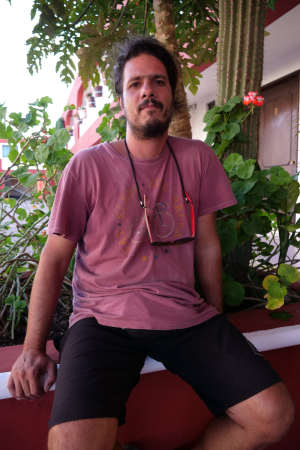 My first contact with a TDA tour was on the Brazilian leg of the Vuelta Sudamericana in 2009 which was also TDA’s first tour in South America. Part of that tour went from Buenos Aires to Santiago. But when designing our current “South American Epic”, we had to leave the east part of the continent out to avoid making a 5 and a half month tour even longer. But a lot has happened since 2009. The world is not the same and we are not the same, and at some point over the last couple of years it just made a lot of sense to try to run a special edition of the tour starting from Buenos Aires again. We feel like celebrating life and Argentina certainly feels like a good place to start a celebration.
My first contact with a TDA tour was on the Brazilian leg of the Vuelta Sudamericana in 2009 which was also TDA’s first tour in South America. Part of that tour went from Buenos Aires to Santiago. But when designing our current “South American Epic”, we had to leave the east part of the continent out to avoid making a 5 and a half month tour even longer. But a lot has happened since 2009. The world is not the same and we are not the same, and at some point over the last couple of years it just made a lot of sense to try to run a special edition of the tour starting from Buenos Aires again. We feel like celebrating life and Argentina certainly feels like a good place to start a celebration.
Tell us about your trip? What do you think of the route?
I scouted 16 stages, from Buenos Aires to Uspallata, which is one stage after Mendoza. By the time I returned my little rental car in Buenos Aires, I had driven 6,000 km. I also ended up running 15 km and riding just over 100 km while checking bike paths. Those 16 stages add up to 1800 km of the cycling route, out of which 450 km are unpaved. That goes from hard packed smooth surfaces all the way to gravel and sand. The paved roads vary from perfectly smooth tarmac to some rare paving stones to potholes on the asphalt. We will ride on larger highways here and there and we ride on some very remote roads with very little traffic. Because the beginning of the route follows the Parana River and the river is used for cargo transportation, we do occasionally end up on a road with lots of trucks but then you disappear on a super quiet road for the rest of the day.
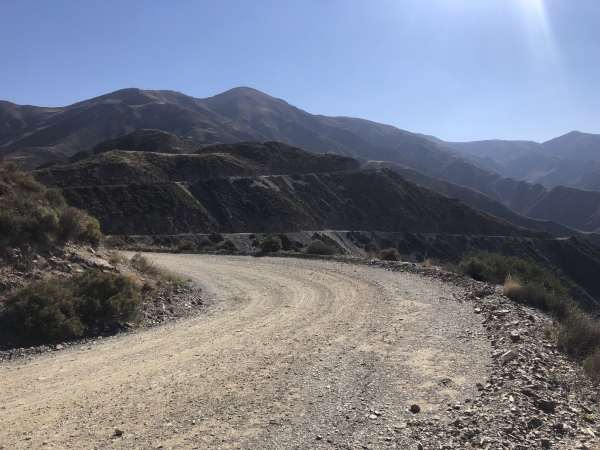
We wanted to be able to celebrate it properly, so although we do ride through a lot of nature, we also go through Argentina’s four largest cities. I was happy to see how Buenos Aires and Rosario have invested in cycling infrastructure and to see Cordoba and Mendoza starting to shift their mentality in that direction as well. But above it all, I was happy to see the country celebrating life. Parks are booming, everyone is out skating, roller blading, jogging, kite surfing, cycling, doing yoga and meditation. Wine tasting is full on, museums are full, and although “siesta” time is still the same and sometimes it can be hard to get even a snack in the afternoon, you can see people are now using that free time to go picnicking with their families or going on an MTB ride.
Has anything changed to the route or schedule because of what you found?
I ended up adding a day to the tour. The tour will now start one day earlier on Sunday October 2 and be able to take advantage of the quieter weekend traffic leaving Buenos Aires. This extra day has allowed us to break up some longer stages between Buenos Aires and the central Argentinian city of Cordoba.

What type of cyclist would enjoy this route? How would you describe the natural environment, scenery and terrain?
I think that people who want to celebrate the reopening, and being able to travel again and just being alive and healthy will enjoy this ride. People who like history will enjoy it even more. People who like exploring cities, more. People who like to bike in and out of big cities, even more. People who like both a downtown area and a campfire with friends, these people will love it. People who like going fast on a smooth road but can also appreciate the quietness and the beauty of going off those roads and enjoy the silence and sometimes the dust and the gravel, these people will have lots of fun. And then, those who on top of it all also enjoy bonding with new fellow cyclists and also mingling with locals and other tourists while exploring great food and world-famous wine, those should certainly not miss it.
So the route research is now nearing completion and the registered riders will be receiving the GPS tracks for all the stages of the tour in the weeks before the start. Some spaces are still available if you are considering joining Cristiano and the 30 or so cyclists already registered.
RELATED
TOUR
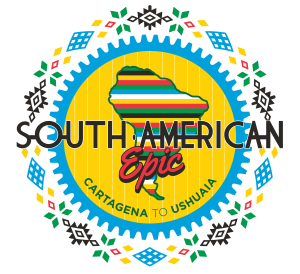
South American Epic
This challenging expedition offers you the best opportunity to explore the vastness and diversity of South America by bike. In keeping with the TDA...
We are now halfway through the release of our four part video series – Cycling the Great American Roadtrip. This is our first video series from the road in over two years and it’s been so satisfying to share these again, after such a long hiatus. This is a perfect opportunity to watch and learn about the route before signing up to be part of the second edition of TDA’s Great American Roadtrip scheduled to start March 2023.
You can watch Part 1 & 2 below. To be the first to see Parts 3 and 4, sign up to our monthly newsletter. Part 3 comes out at the end of this month and Part 4 at the end of April.
Videographer Coby Werlin on the Video Making Process During TDA’s Great American Roadtrip
I sent Coby a few questions about his experiences on this project. This was his third assignment with TDA – his first was filming in Europe on the 2019 The Odyssey and his second was while tagging along on the 2019 North American Epic.
What did you think this would be like when you started filming in Santa Monica?
“Well, there was definitely one part of me that wasn’t sure if the tour would run, let alone finish. The other part of me wanted this video series to be a real, in-depth look at riders as they re-engaged with the world after so much time spent in lockdown.”
“Thankfully, we didn’t have any Covid cases, and so not only did the ride finish, but it was a very positive experience to film overall, which is not to say that it was an easy experience. There was a large sense of gratitude throughout the entire crew about being back out on tour, and it was a rather palpable feeling that everyone shared, something that I hope comes through in the video series.”
What were the biggest challenges and surprises?
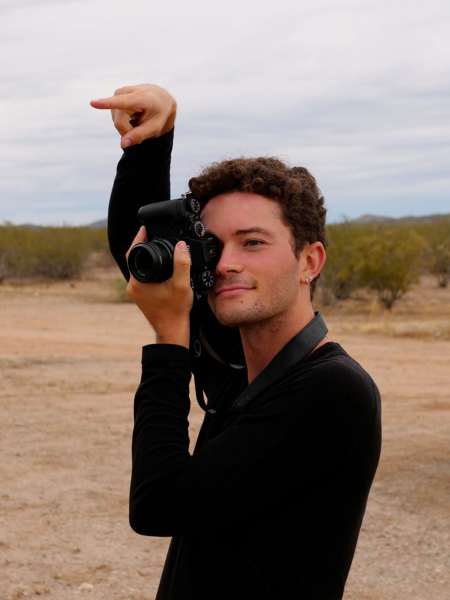 “One of my biggest challenges in documenting any TDA ride is how to pull out a story, rather than just creating a montage of bicycles riding through scenic landscapes. Some of those shots are nice, but with this project I tried to find other aspects of life on tour to focus on. With this tour in particular, the riders and staff all had a lot of great things to say, including what brought them to sign on to this tour, and what lessons or experiences they were taking away from it. Those kinds of responses are always the ones that give me the most inspiration and direction to make a compelling video series.”
“One of my biggest challenges in documenting any TDA ride is how to pull out a story, rather than just creating a montage of bicycles riding through scenic landscapes. Some of those shots are nice, but with this project I tried to find other aspects of life on tour to focus on. With this tour in particular, the riders and staff all had a lot of great things to say, including what brought them to sign on to this tour, and what lessons or experiences they were taking away from it. Those kinds of responses are always the ones that give me the most inspiration and direction to make a compelling video series.”
“I think when prospective riders watch a video series about a ride, they of course want to see it visually to know what they’d be in for, but to also understand some of the deeper reasons and satisfactions that bring people to TDA, and those explanations only surface when they are genuinely felt by the riders, so I was happily surprised to hear them on this ride.”
“From a technical standpoint, the weather seemed to keep getting in the way for me — my gear would overheat from the high temperatures of eastern California, or the rainstorms in Texas and Florida would dissuade me from pulling out my camera, but primarily the intensity of the wind we experienced from about Arizona to Texas made it really difficult to get good sound during interviews, on top of the fact that it tired out most of the riders so much so that they had no energy left at the end of the day for an interview anyway. My camera even took a tumble to the pavement during New Mexico’s powerful windstorms as I was shooting a time lapse of the mountains (I even caught the fall on camera), luckily it was minimal damage.”
What is your favourite memory from the tour? What did you learn?
“Well, it’s always the not-so-fun memories that feel the most poignant, and invoke the most growth, especially once you’ve moved past them and can reflect back. I’ll remember the 4 a.m. wake up call to pack bikes and make it through Joshua Tree National Park to beat the 104°F heat, or the spectacularly terrifying early morning thunderstorm that hit us just outside of Austin, TX, or the penultimate day of the tour when I accidentally chopped off the top bit of my thumb while slicing some Georgia peaches before dinner, and all the riders and staff made me feel so well taken care of (it’s healing very well). All of these instances stick out to me because they were moments of adversity that tested the entire group – riders and staff alike – to act as one, for the sake of the whole.”
“On a lighter, more concrete note, I was really happy to explore Louisiana as it was a part of my own country that I hadn’t yet explored, and was full of beauty and warmth and great seafood.”
RELATED
TOUR
With the successful conclusion on our first two pandemic-era tours, I reached out to our tour leaders and TDA’s Operations Manager to get their thoughts on how they made it work. Early feedback is showing that people not only felt safe (both tours were covid-free from start to finish) but that sense of freedom and discovery – so integral to our tours before covid – still exists even with a few necessary new protocols.
“The staff were vigilant but calm and gentle with reminders. They followed protocols consistently themselves. Balazs was particularly careful with the lunch and dinner services. Additionally, when one of the riders was ill, they cared for him and also got him tested promptly.”
“The fact TDA thought about it thoroughly, put together a practical program of action and followed through was quite effective in my view. And the staff leading by example helped”
 Emily Currie from South Africa led the riders across the southern US in our first-ever Great American Roadtrip. In an email as she was furiously preparing for her next assignment – leading the Pura Vida in Costa Rica – Emily explained what was (or wasn’t) different this time from all the trips she has led in the past. “Surprisingly, not much! Pre–tour I was quite nervous as I thought that everything would be different and that we would have a hard time getting riders to comply with all the ‘new rules’, however I was pleasantly surprised with how effortless it all happened.” Emily said there were a couple occasions where staff did COVID-19 tests on a participant but they came back negative each time. For those still a bit nervous Emily pointed out that “the airports, airlines and countries themselves have quite rigorous safety procedures and once you join the tour you will be in a group that have all agreed to adhere to TDA’s own safety measures.”
Emily Currie from South Africa led the riders across the southern US in our first-ever Great American Roadtrip. In an email as she was furiously preparing for her next assignment – leading the Pura Vida in Costa Rica – Emily explained what was (or wasn’t) different this time from all the trips she has led in the past. “Surprisingly, not much! Pre–tour I was quite nervous as I thought that everything would be different and that we would have a hard time getting riders to comply with all the ‘new rules’, however I was pleasantly surprised with how effortless it all happened.” Emily said there were a couple occasions where staff did COVID-19 tests on a participant but they came back negative each time. For those still a bit nervous Emily pointed out that “the airports, airlines and countries themselves have quite rigorous safety procedures and once you join the tour you will be in a group that have all agreed to adhere to TDA’s own safety measures.”
 Gergo Szanyi from Hungary is our longest serving tour leader and I think he might have been able to lead the Trans-Europa with his eyes closed if he wanted to. But he kept them wide open this September and October leading our first European trip in over two years. “We are (and always were) strict about hand washing protocol at lunch, and this time we rearranged the table layout to give somewhat more space for the riders.” And did anyone get COVID-19 during the tour, I asked? “Luckily no! Not one person in the group. On a few occasions we did rapid antigen tests when somebody developed related (respiratory) symptoms, but the results were all negative. Coughing, sneezing and sore throat were probably caused by the cold mornings, and not by the new virus.”
Gergo Szanyi from Hungary is our longest serving tour leader and I think he might have been able to lead the Trans-Europa with his eyes closed if he wanted to. But he kept them wide open this September and October leading our first European trip in over two years. “We are (and always were) strict about hand washing protocol at lunch, and this time we rearranged the table layout to give somewhat more space for the riders.” And did anyone get COVID-19 during the tour, I asked? “Luckily no! Not one person in the group. On a few occasions we did rapid antigen tests when somebody developed related (respiratory) symptoms, but the results were all negative. Coughing, sneezing and sore throat were probably caused by the cold mornings, and not by the new virus.”
Gergo shared these final thoughts for people still considering a trip but feeling unsure when it’s safe to jump in and register. “[W]e are just riding our bikes all day long, enjoying the scenery and the daily ride. We only launch a tour if we truly believe it can be completed during these times. If you are cool about to travel, just follow the recommended protocols. If they ask to wear a mask, do so. It’s easy as that! Oh, and and enjoy the ride! :-)”
 Finally, I asked TDA’s Operations Manager Miles MacDonald how the protocols were created. How do you balance safety with the freedom to enjoy the ride? He said it was a long process. “It started essentially in March 2020…As each month went by we learned more about COVID transmission, and during early 2021 learned more about the vaccines available and their effectiveness. The first decision was making COVID vaccination mandatory for all participants and staff. This was a key element of reducing the risk of severe health outcomes for everyone on tour, and reducing the risk of transmission to local populations. From there we learned from our local health authorities the key elements of reducing transmission. Wearing masks while in indoor public settings or while in our tour vehicles and in addition a strong focus on hand hygiene.”
Finally, I asked TDA’s Operations Manager Miles MacDonald how the protocols were created. How do you balance safety with the freedom to enjoy the ride? He said it was a long process. “It started essentially in March 2020…As each month went by we learned more about COVID transmission, and during early 2021 learned more about the vaccines available and their effectiveness. The first decision was making COVID vaccination mandatory for all participants and staff. This was a key element of reducing the risk of severe health outcomes for everyone on tour, and reducing the risk of transmission to local populations. From there we learned from our local health authorities the key elements of reducing transmission. Wearing masks while in indoor public settings or while in our tour vehicles and in addition a strong focus on hand hygiene.”
Miles also shared his advice for those contemplating their first covid-era tour. “It is normal to feel anxious about travelling during this time. As the organizers we definitely experience anxiety in the build up to the tours, as we think through every conceivable outcome, both positive and negative that could transpire. However once you are fully vaccinated, and participating on a bicycle tour that takes place mostly outdoors, enjoying the incredible freedom of travel, even while following COVID protocols during the tour, it does not feel as overwhelming or scary. Risks due exist, but we all work together to minimize these.”
So with COVID-19 being addressed with simple protocols, riders on the tours were able to get back to just enjoying the open road. Here are a few comments we got from Trans-Europa riders in their post-tour feedback…
“The Trans Europe tour was everything I expected and more. I expected quaint towns, interesting cities and a safe riding route and the Trans Europe was all of that…Every member of the TdA staff treated each of us with kindness, consideration and attention to whatever it was that we needed. I have done other tours with other companies and nothing in my experience compares with the quality of the tour they provided.”
“It was so great to be on the bike again, and experiencing a TDA road trip: great scenery, great food, and the best support staff. There is nothing that beats getting on the bike every day and knowing everything is taken care of and all you have to do is enjoy the ride!”
]]>
The COP26 climate conference starts today in Glasgow and we thought this was a good moment to share some data we recently compiled on the approximate carbon footprint of a TDA tour. We know in general cycling is a good and an environmentally sustainable form of transportation. Cycling tours are inherently a low carbon activity and long distance tours, such as those that we specialize in, are increasingly seen as the way to go – longer human powered trips, with less vehicle or air transfers along the route. This is the style we have employed since 2003.
But our cyclists are increasingly taking their carbon footprint into account when planning their travels. “For others, like Donna…slow travel is about reducing their environmental impact…In addition to amortizing her carbon footprint and seeing a place in depth, the long trip offers connection.” (from a New York Times article quoting one of our cyclists)
When we asked our past participants in a recent survey whether TDA should take action to reduce its carbon footprint, a majority of people said yes. On the question of whether they would be willing to pay to offset their carbon emissions for their tour, 53% said yes they would. But people also made it clear that it should be voluntary and not built into the price of the tours. So as a result, we did some calculations to help people understand what their TDA carbon footprint is, and how they can offset that if they choose to do so.
The Carbon Footprint for Your TDA Cycling Tour
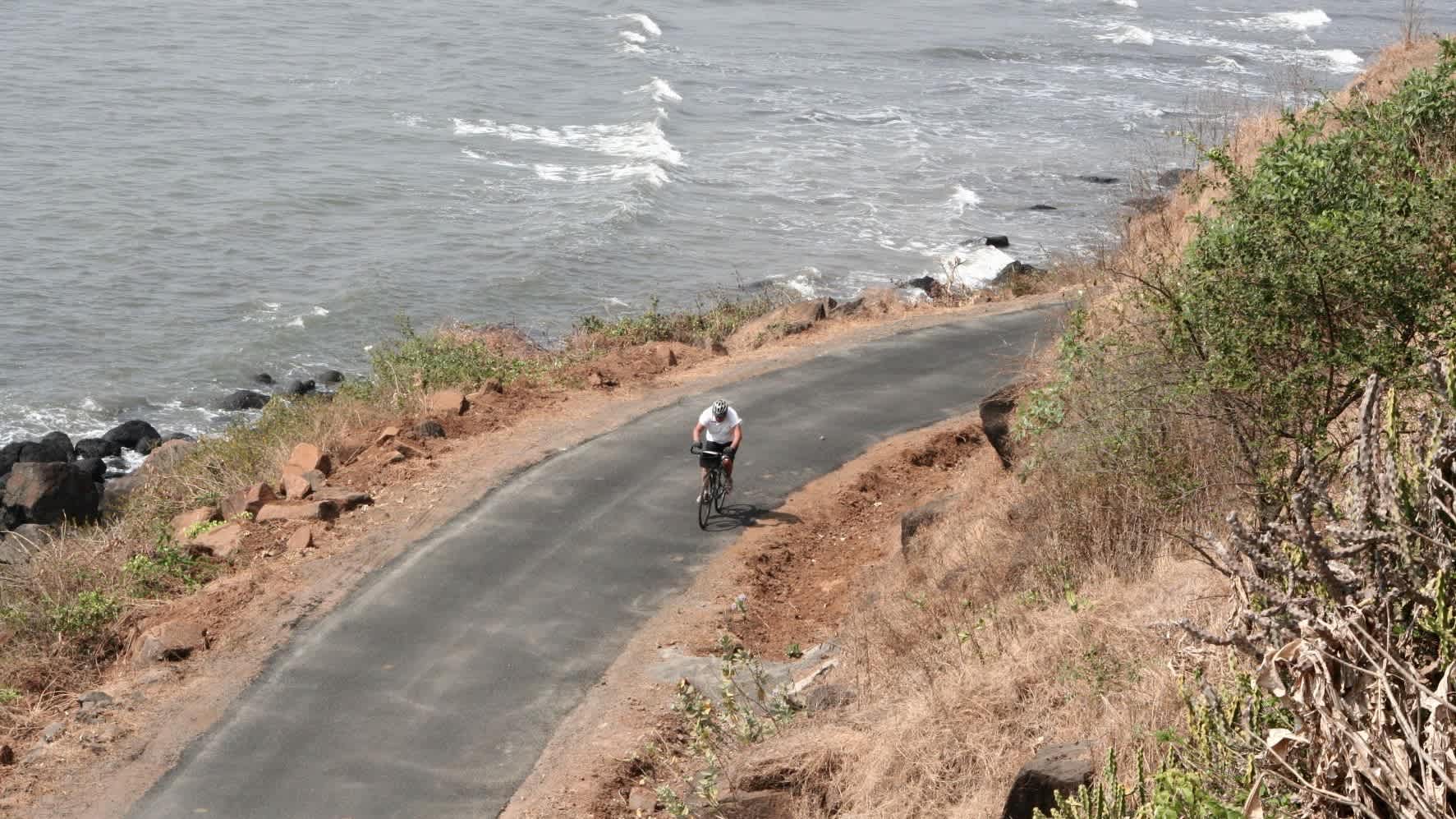
WARNING! This part of the blog gets a bit technical.
The carbon emissions on average for our tours is between 0.5 and 1 tonne of C02 per person for one month on one of our tours. Compare this to the average per capita carbon emissions in Europe of about 1 tonne per month and in US, Canada and Australia it is around 2 tonnes per month (based on Word Bank Data shared here). So take for example the Tour d’Afrique which we estimated has a total of 69.4 tonnes of C02 emissions for a group of 30 cyclists for the full four month long tour from Cairo to Cape Town. This figure considers all the services that are included in the entry fee you pay – so emissions related to the food eaten, electricity for the accommodations, flights for staff, and the diesel burned in our support vehicles and so on. Notably, this number does not include the flight you take to get to the starting point and back home afterwards – just the emissions while on the tour itself.
So if you used a Gold Standard carbon offset (these are the ones considered the most reputable, that truly offset the emissions) your cost to offset your share of the Tour d’Afrique emissions would be about $46 USD for 2.3 tonnes of emissions for the full four month tour. Add to this the emissions from your flight (which can be as much or more than the entire emissions of your trip!) are anywhere from 1 to 4 tonnes depending where you are flying from and how many connections you have.
This brings your total cost to offset the emissions for the Tour d’Afrique to approximately $126 USD.
For comparison, our three month Bamboo Road cycling tour would be closer to $150 USD (including your flight) as you stay in hotels each night which use electricity compared to Tour d’Afrique which is primarily camping. This adds up to more carbon emissions per person.
There are some built in carbon offsets to a cycling tour to consider also. One long haul flight might have less impact than regular short haul commuter and business flights. After the flight, you are cycling everyday and a group of 30 people are supported by two vehicles typically. This is likely less than driving to and from work everyday over the same time period. Also, the food you eat on tour may or may not be less processed and sourced locally moreso than when you shop in a grocery store at home. These are all hard to quantify, but worth noting all the same.
Carbon Offsets are Only Part of the Solution
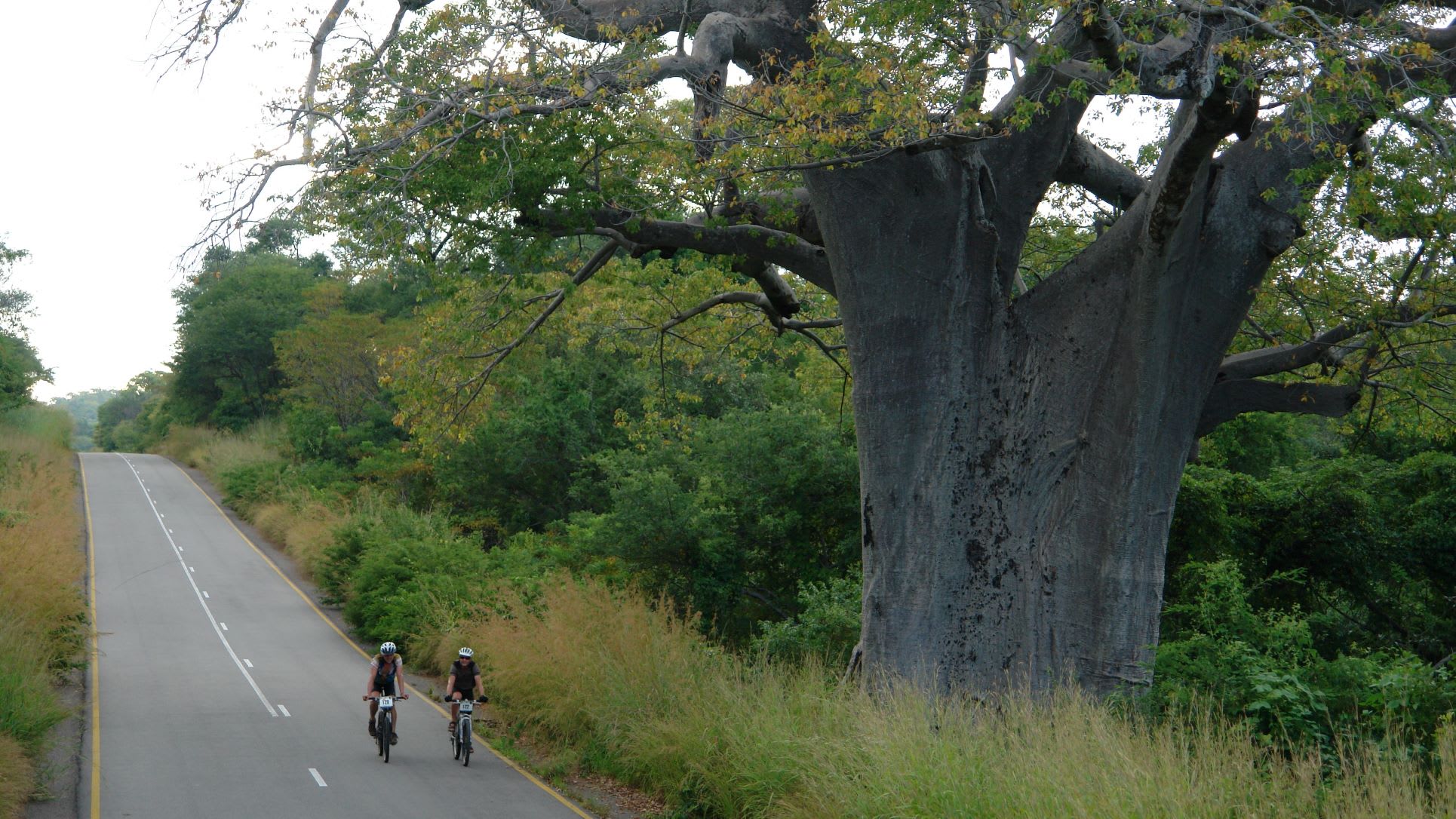
Most experts now agree that reducing our individual (and small business) carbon emissions, while meaningful, is not going to get us out of this mess. As a researcher at Stanford put it “As long as fossil fuels are the basis for the energy system, you could never have a sustainable carbon footprint. You simply can’t do it.” (from Mashable’s Social Good Series)
When I asked this question to one of our past participants Stephen Warren, a professor of atmospheric science, he responded that “Voluntary actions to reduce CO2 emissions are fine…but I think they’re not really quantitatively effective. What we need is a tax on carbon emissions [which] makes it more profitable to use less energy.” and so Stephen still tries to reduce his carbon emissions by choosing to live in a small house, commuting by bike, having a vegetarian diet and so on, but he loves travel and thinks personal travel is worthwhile even if we are producing emissions with our flights and activities abroad. As he says, travel gives us “an appreciation of geography, landscapes, and climates, and exposure to foreign cultures, languages, and ideas.”
In Popular Science, the experts agree… “the impacts of most individuals are microscopic compared to the impacts of energy companies and other large corporations. Unless countries get serious about making steep emissions reductions, our individual offsets are probably not going to avert disastrous climate change.” but they go on to say offsetting your emissions isn’t a waste of time either. “in this time of impending climate crisis, O’Rourke says that every little bit counts…’I think [carbon offsetting is] good because it’s an engagement in really understanding how to make a more sustainable world and feel like you contribute to that,’ says O’Rourke. ‘I think most people could, if they calculated it, afford to actually buy the offsets if they wanted to.'”
So what do you think of carbon offsets for travel? What suggestions do you have for reducing your carbon footprint? Please share your thoughts and insights below in the comments.
Further Reading
Guide to Buying Carbon Offsets by the David Suzuki Foundation
How Green is Cycling? from Bike Radar
Guide to Not Killing the Planet When you Travel by CN Traveller
11 Smart Ways to Reduce your Travel Footprint by Huffington Post
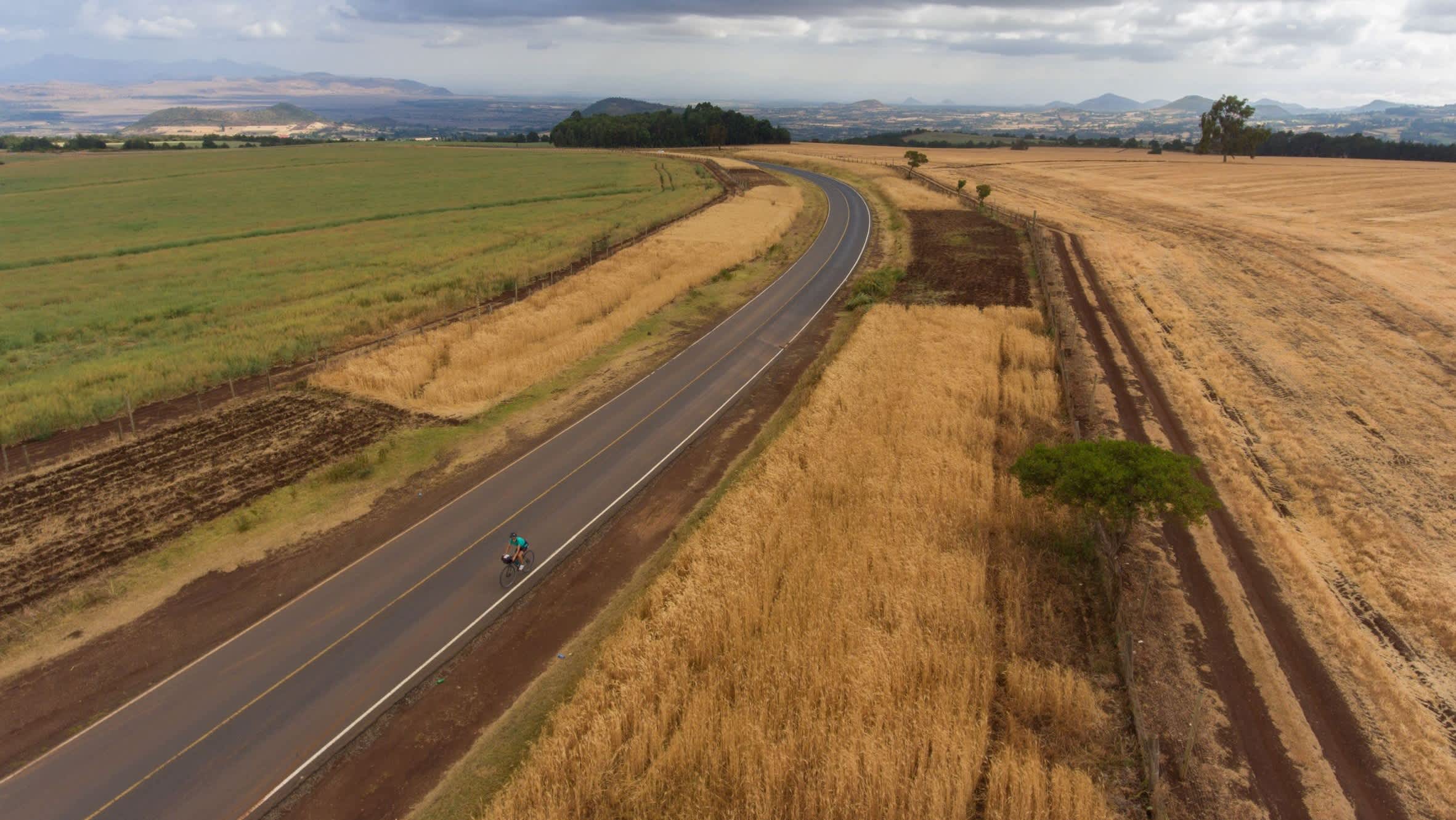
You may have missed it. While we were busy getting our first pandemic-era tours underway in Europe and the southern US, we quietly posted a new and exciting tour called Trans-Caucasus. Now that we have had time to catch our breath, I wanted to tell you a bit about this new adventure along an old route of ours.
>>Find the Trans-Caucasus dates, details and pricing here
We used this route in 2007 for our very first Silk Route cycling adventure that took cyclists east through Georgia, Azerbaijan and across the Caspian Sea (instead of our current routing via Iran). Since we aren’t able to run the entire Silk Route next year (we have postponed that to 2023 – see our updated calendar) we thought this was an excellent opportunity to return to a beloved route.
I personally have some of my fondest (and most exhausted) memories of cycling remote mountain roads in eastern Turkey, and experiencing the wonderful food, wine and scenery of the two Caucasus countries of Azerbaijan and Georgia. So here are a few more things you might not know about this fascinating route.
1. Qobustan Rock Art, Azerbaijan
At the end of our first day of riding we will reach the town of Qobustan and for those who still have some energy left, you can arrange a trip into the Gobustan Rock Art Cultural Landscape. Listed as a UNESCO World Heritage Site, you can walk around this incredible site and ponder the long history of humans in the area…
“Gobustan Rock Art Cultural Landscape covers three areas of a plateau of rocky boulders rising out of the semi-desert of central Azerbaijan, with an outstanding collection of more than 6,000 rock engravings bearing testimony to 40,000 years of rock art. The site also features the remains of inhabited caves, settlements and burials, all reflecting an intensive human use by the inhabitants of the area during the wet period that followed the last Ice Age.” from UNESCO.
For those that don’t want to risk missing this site after a day of cycling, tours can also be arranged pre-tour from Baku.
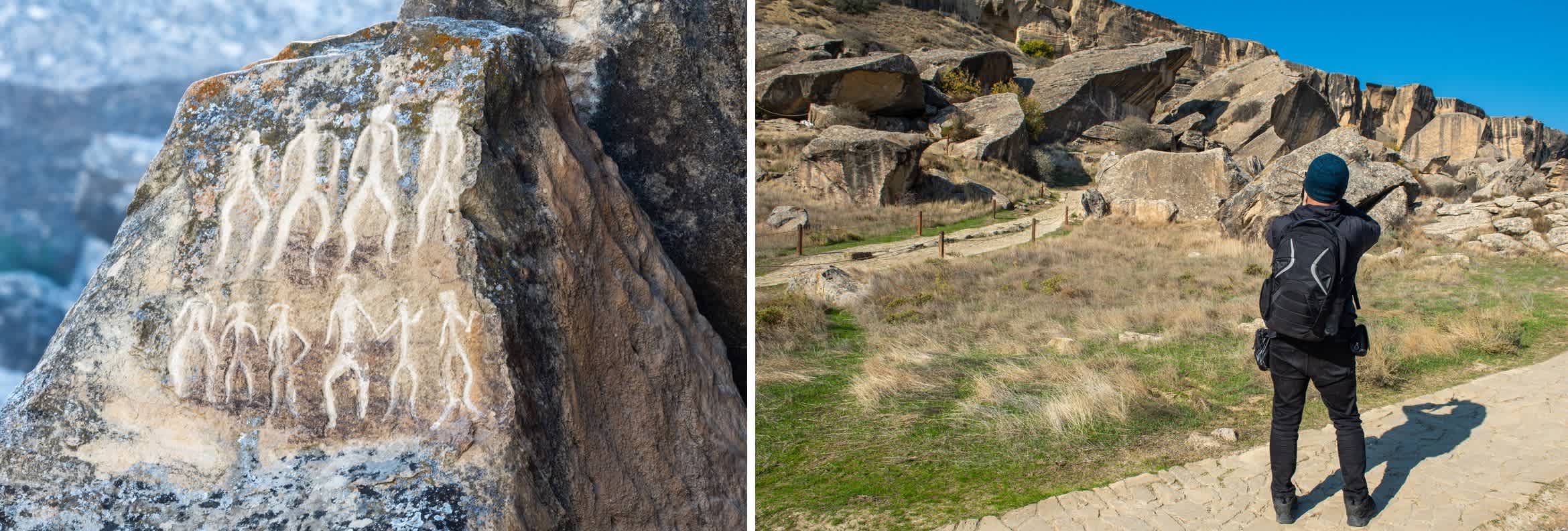
2. Sheki Caravanserai, Azerbaijan
One of the coolest places we stayed on the Silk Route back in 2007 was the caravanserai in Sheki. This is not a luxury stay by any means. It’s a step up from bush camping as there are basic toilets and showers, but the rooms are sparse and what you are really getting is a chance to step back in time.
“A caravanserai was a roadside inn where travelers could rest and recover from the day’s journey. Caravanserais supported the flow of commerce, information and people across the network of trade routes covering Asia, North Africa and Southeast Europe, most notably the Silk Road.” from Wikipedia.
For traders heading to or coming from Europe through the Caucasus, the caravanserai was their motel to rest and hitch their animals for the night before continuing on their arduous journey. So our cyclists will be no different – hitching their bikes and getting some rest before continuing their cycling adventures.
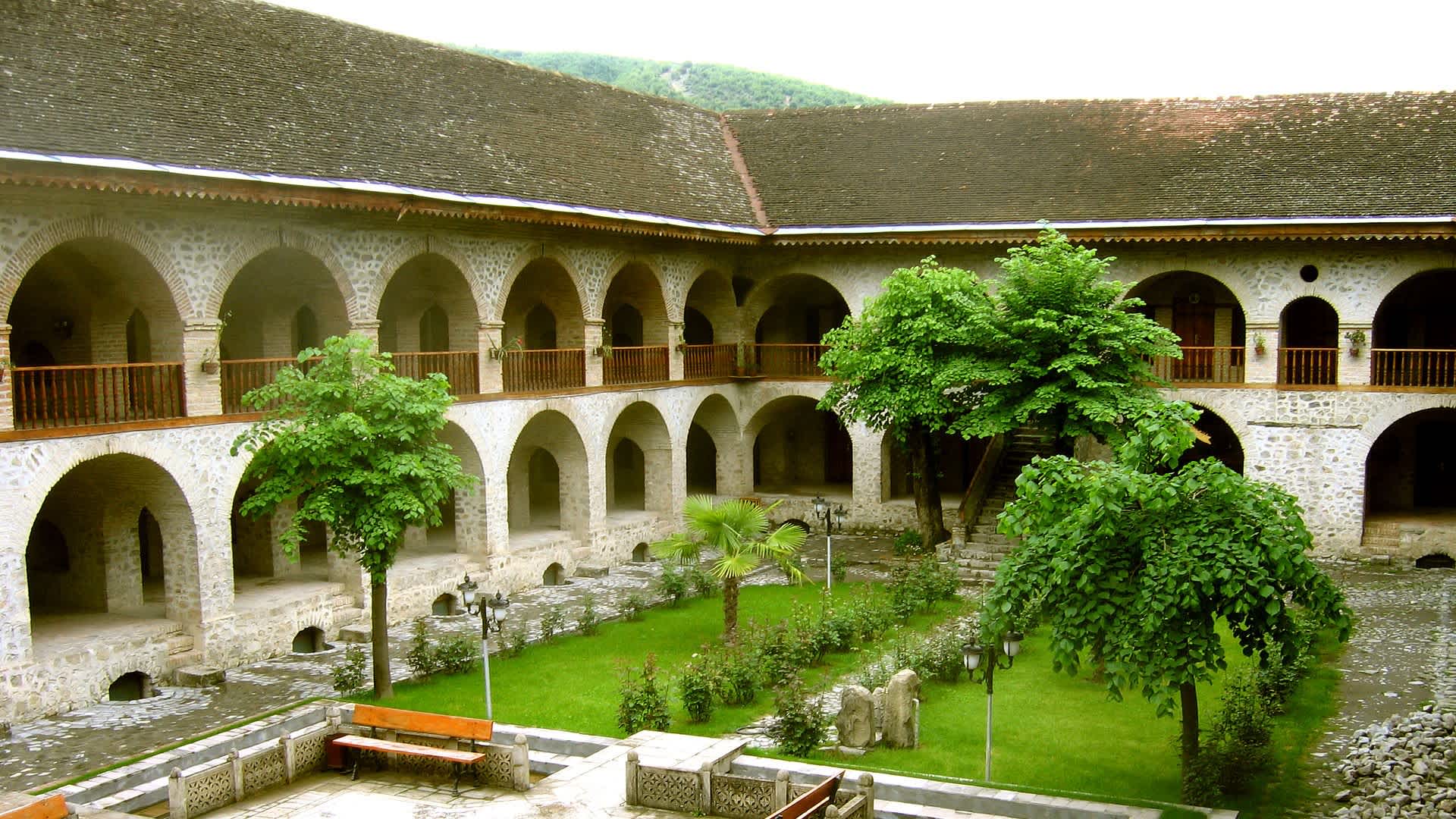
photo credit: Caravanserai Hotel by Gilad Rom under Creative Commons CC BY 2.5
3. In the Foothills of the Greater Caucasus
The Greater Caucasus are our constant companion sitting to the right of our route over the first couple weeks of the tour from Baku and through Azerbaijan and most of Georgia. We cross the lesser Caucasus to enter Turkey. The Greater Caucasus certainly make for challenging riding with lots of elevation gain and some steep ascents with rewarding views and screaming downhills on the other side.
“Spectacular mountain scenery, wonderful walks and picturesque old villages with strange defensive towers are all part of a trip to the southern side of Europe’s highest mountain range.” from Lonely Planet.
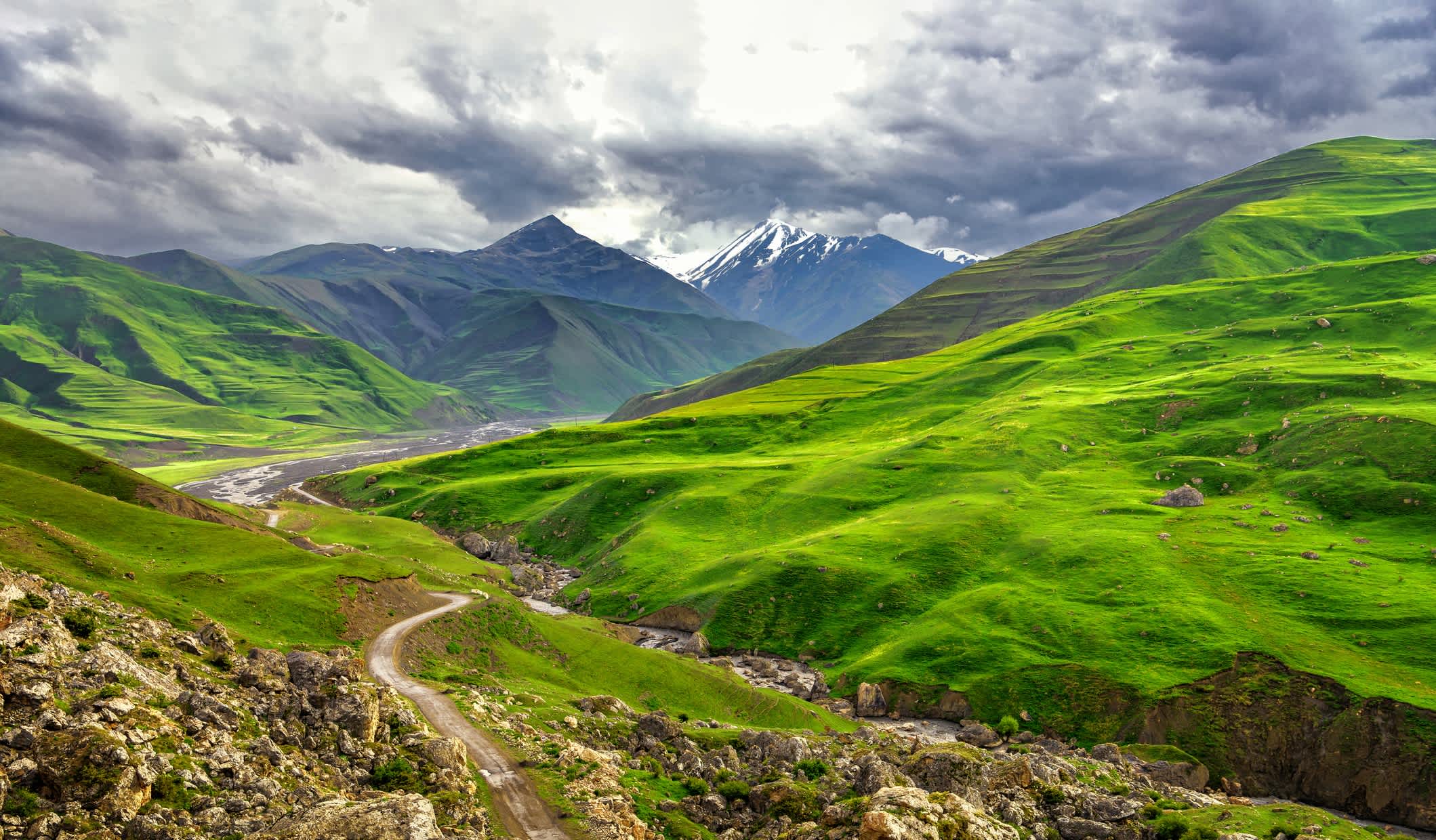
4. Lagodekhi Nature Reserve
Our first stop in Georgia is Lagodekhi – one of the countries natural treasures.
“Lagodekhi National Park, is one of the most unique and diverse national parks in Georgia. Located in the eastern part of the country, on the borders of Dagestan (Russia) and Azerbaijan, the park has a sub-tropical climate that most travelers would never have expected to find in this part of the world…a place for intrepid travelers and curious locals looking for challenging adventures with beautiful rewards.” from Meanwhile in Georgia.
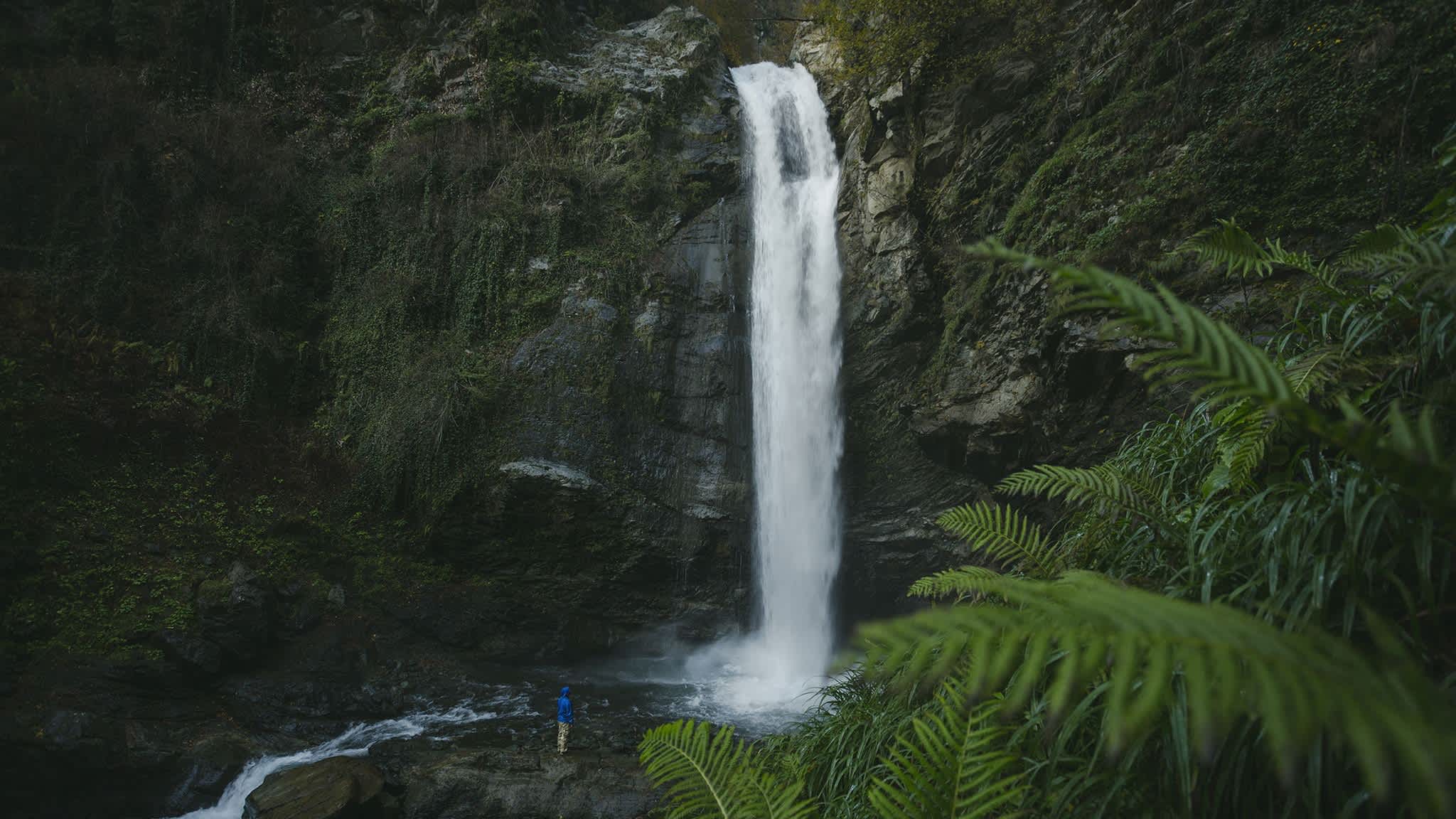
Ninoskhevi Waterfall
5. Fortresses of Georgia
I remember turning a bend in the road and this magnificent castle loomed high above me. Khertvisi Fortress – which we pass towards the end of day 8 – is one of several fortresses that are spread across the Georgian landscape. According to Wikipedia “There are over 100 castles and forts in Georgia, which were constructed between the years 800 and 1700 by various provincial kings.”
“Khertvisi fortress – Middle age castle is located in village Khertvisi, on the estuary of rivers Paravani and Mtkvari, on a tall rocky mountain…was an active fortress during feudal ages…The fortress consists of the citadel and a wall. Citadel stands on a narrow, rocky edge of the mountain, it is not approachable from the northeastern side. Water was supplied by a tunnel on a northwestern side.” from Georgia Travel Guide.
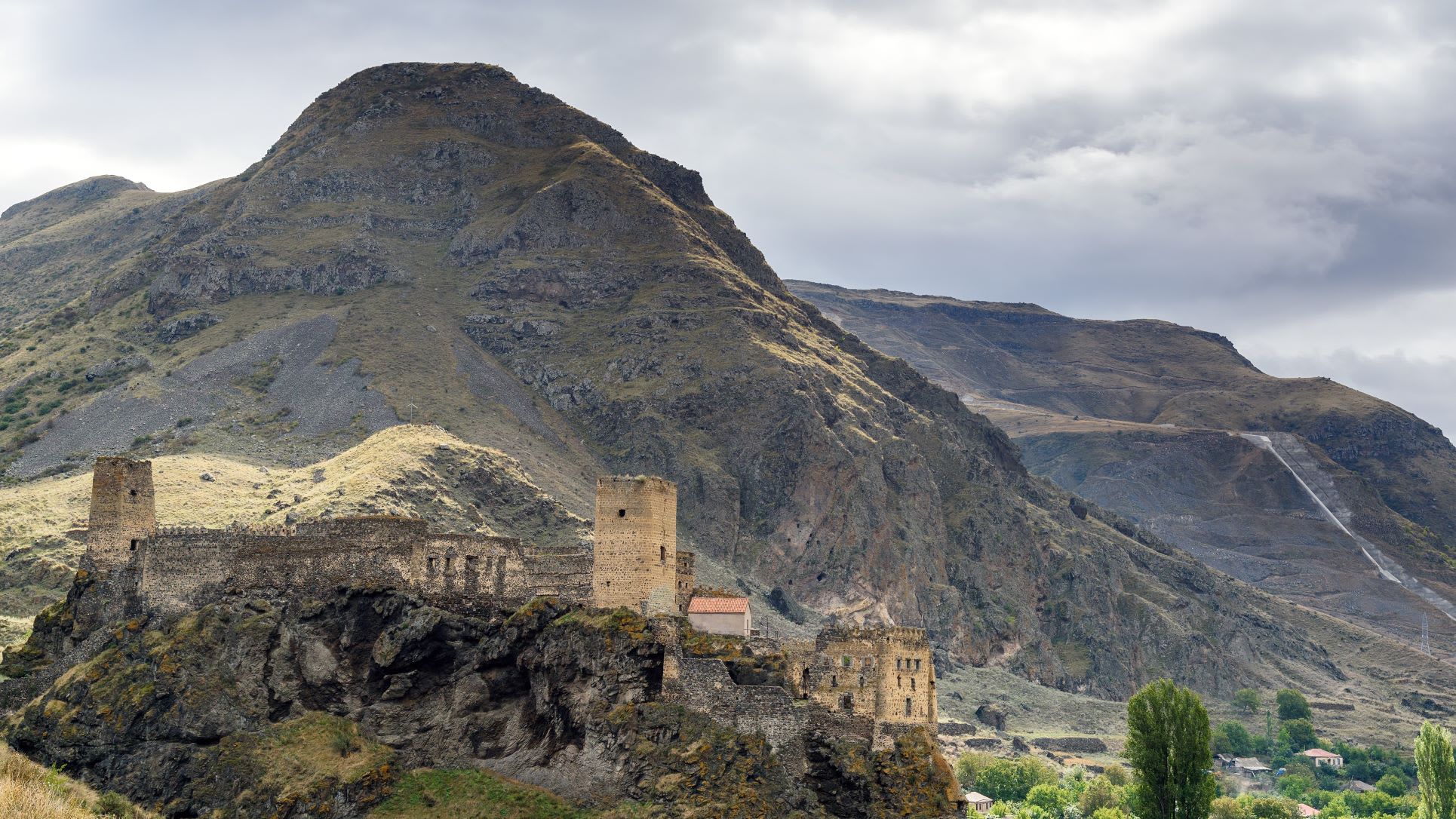
Khertvisi Fortress
6. Flavours of Georgia
I love cycling in this part of the world and a big reason for that is the surprising variety of flavours I didn’t expect to find. I couldn’t agree more with how Georgian cuisine was described here…
“…it’s hard to find dishes anywhere that so deftly intermingle Eastern and Western techniques: platters of soup dumplings, called khinkali, are as big an attraction in Tbilisi as they are in Shanghai, while Georgia’s supple flatbreads parallel India’s best naan, puffed and scorched on the inner walls of traditional clay toné ovens. The similarities aren’t coincidental. Sitting at the midpoint of ancient East–West trade routes, Georgians had the advantage of being able to cherry-pick the best of what the Greeks, Mongols, Turks, and Arabs were cooking along the Silk Road. When Russian poet Alexander Pushkin asserted that “every Georgian dish is a poem,” I like to think he wasn’t referring just to flavor and artful presentation but also to the coalescence of cultures on the plate.” from Serious Eats.

7. Kakheti Wine Region Georgia
On our way to Tbilisi, we cycle straight through the heart of Kakheti. Many of the wineries still employ an ancient technique in wine making using a ‘kvevri’…
“Kvevri (also known as churi in Western Georgia) are large earthenware vessels used for the fermentation, storage and ageing of traditional Georgian wine. Resembling large, egg-shaped amphorae without handles, they are either buried below ground or set into the floors of large wine cellars. Kvevris vary in size: volumes range from 20 litres to around 10,000.” from Wikipedia
I found an old entry on our blog from back in 2007 that brings me back to my experiences in Kakheti…
“Some rolling hills and a decent climb were followed by a fun downhill (nice, winding, fast and offering some great views)…situated in some of Georgia’s wine and cheese producing areas. There were vineyards and castles to view and large blocks of cheese and delicious fresh bread available on the side of the road to sample.” from our blog in 2007.

8. Tbilisi, Georgia’s Capital
Besides Istanbul, Tbilisi is perhaps the most culturally rich and diverse city along the entire route. With its variety of restaurants, museums and galleries Tbilisi definitely has a European flavour to it.
“With its dramatic valley setting, picturesque Old Town, eclectic architecture and superb eating and drinking opportunities, Tbilisi is the vibrant, beating heart of Georgia and home to more than one in three of its citizens…Tbilisi is confidently sealing its reputation as the South Caucasus’ most cosmopolitan city.” from Lonely Planet

9. Yusufeli, eastern Turkey
Among the challenging climbs of eastern Turkey you find this gorgeous town nestled in a river valley. It takes a great deal of pedal power to reach this place, but I remember clearly how much we all enjoyed our rest in Yusufeli. As a first stop in Turkey it is a great introduction to a culture that is warm and welcoming and a glass of tea or a snack are never far away with vendors and shops scattered across town.
“This beautiful small town is set in the valley of the Barhal Cayi river beneath towering rocky faces and pinnacles. For the hungry cyclist it offers a feast of local dishes on a terrace overlooking the river at the Hacioglu Cag Doner restaurant and a leisurely stroll through its colorful streets and alleys.” from our blog in 2012.
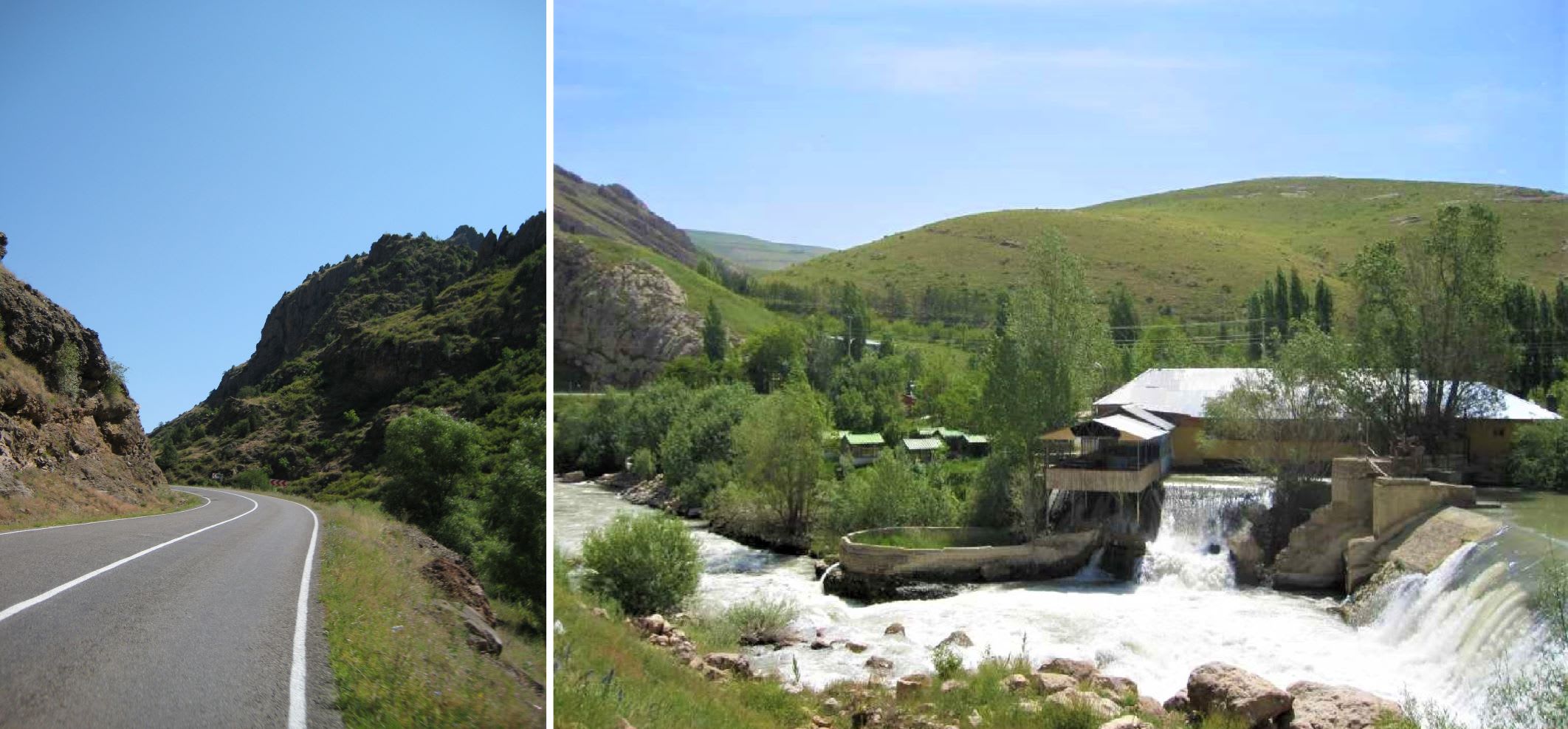
10. Safranbolu
Safranbolu is a gorgeous place that really gives you a feel of times past. It is named for (you guessed it) saffron – the precious spice that is still grown in the area. But it is also recognized for other reasons too…
“Its Ottoman architecture includes the old Çarşı district, with hundreds of preserved, red-roofed Ottoman houses on cobblestone streets. Cinci Han is a 17th-century caravansary with rooftop views over town. Nearby, Tarihi Cinci Hamam is a restored 17th-century bathhouse, still in operation.” from UNESCO.
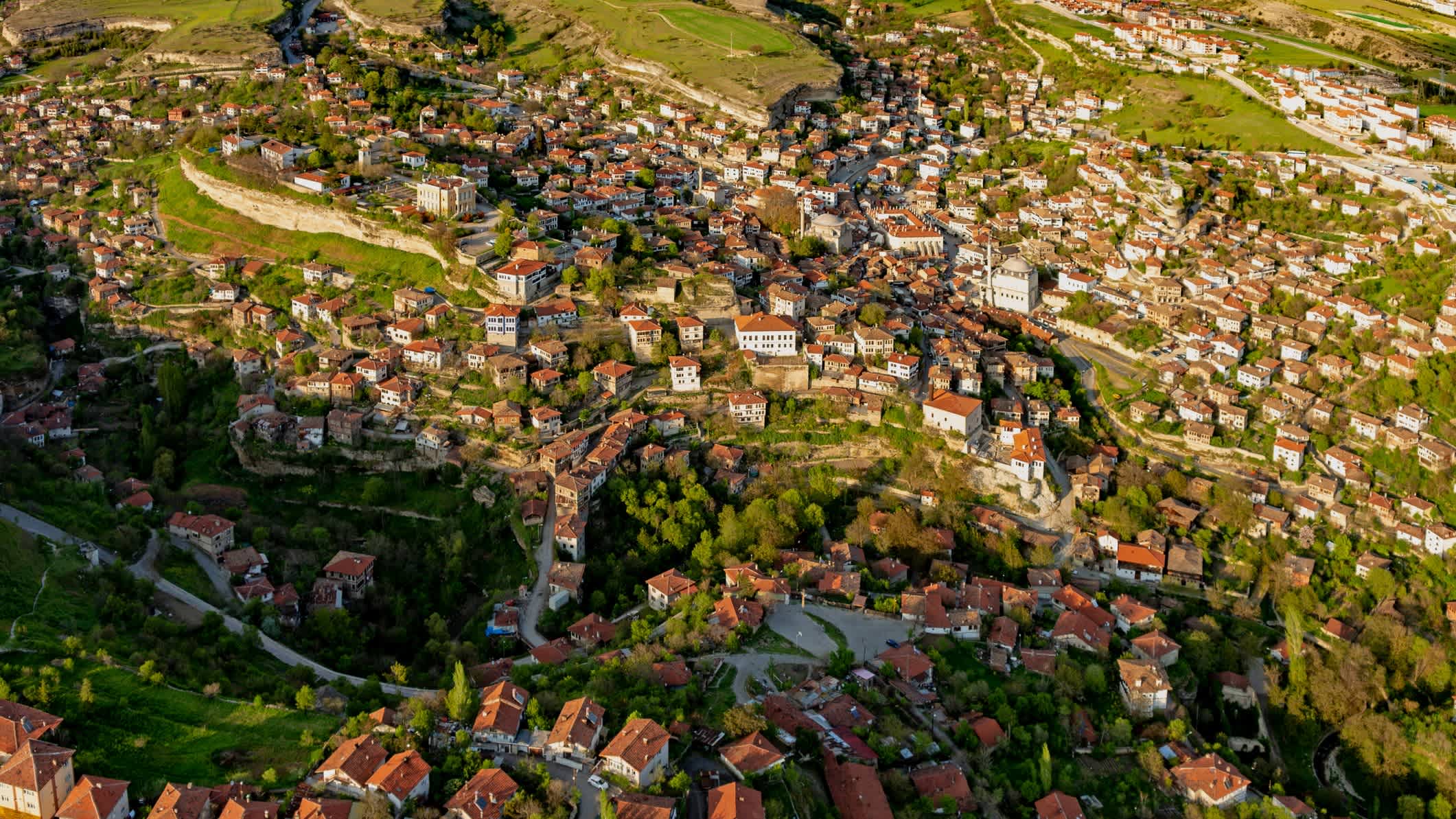
These are a few of the many surprises I found while cycling in this region. It is currently open for travel and I am eagerly anticipating a return to a region I have really enjoyed cycling. I think you will too.
RELATED
TOUR
It was 4 degrees Celsius when we woke up. There we all stood, shivering in a nondescript Super 8 parking lot in Flagstaff, Arizona at the end of the first section of the Great American Roadtrip (known as Riders of the Purple Sage). The riders were getting a quick briefing before they set out onto isolated roads for a 7 day stretch of riding. This, after a single day’s rest following an incredibly difficult start with heat and hills and adversity galore.
As I looked around, however, all I saw were smiling faces and a lot of laughter. Tour leader Emily was cracking jokes with riders who laughed and dished it back in equal measure. What a group! What a strange collection of adventurers who had chosen to ride their bikes and expand their world again after 18 months of living smaller. Now, I’m no rookie and I know there has been (and will be) much adversity and moments of frustration and disappointment on the road to Savannah, but it sure was great to see this resilient group getting out into the world and eager to take on the challenges that lay ahead of them.
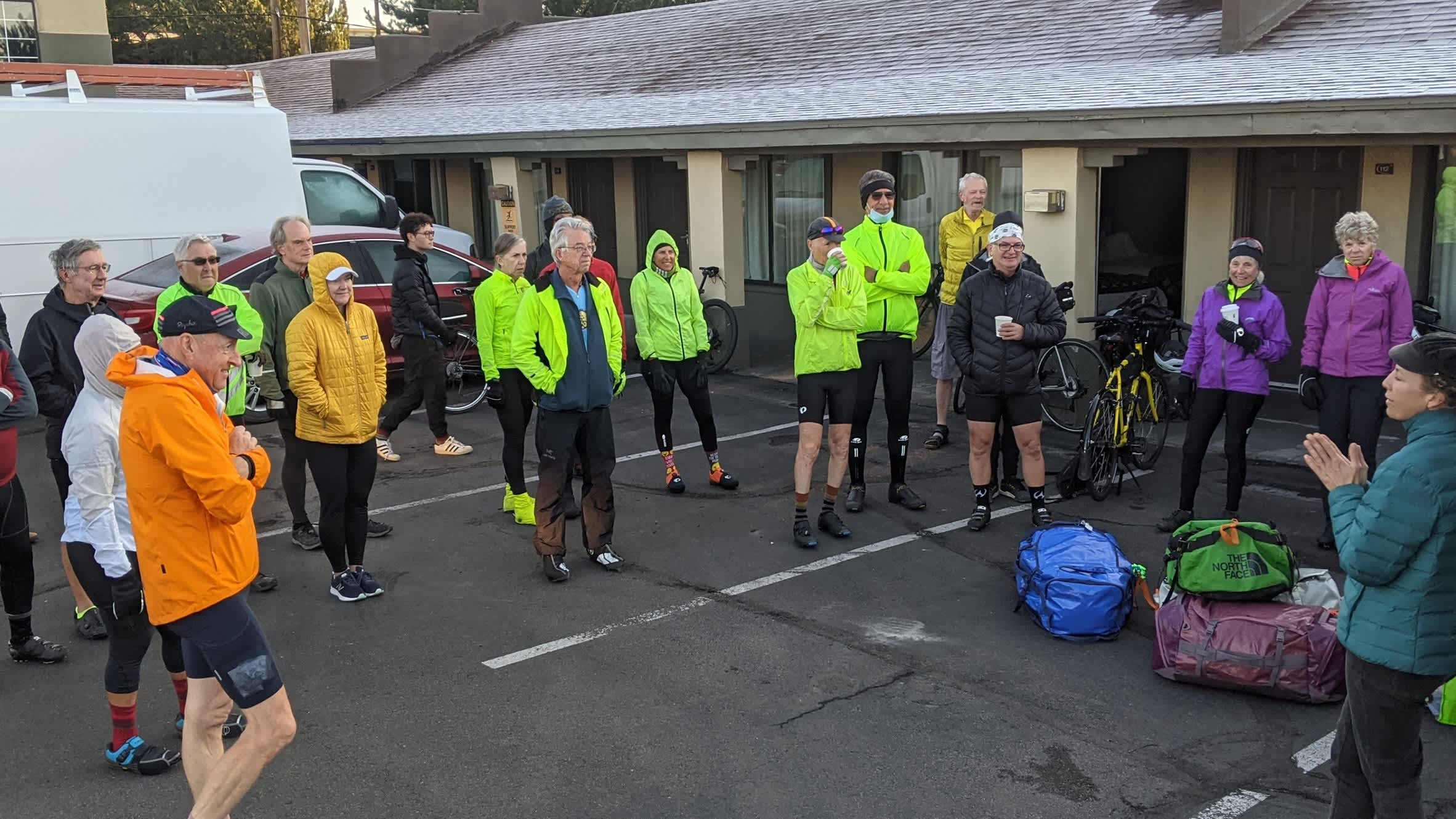
We had warned everyone that this – our first of two tours during COVID – was not a return to normal. COVID-19 is still here and we should be prepared for disruptions to our cycling plans. But on this particular morning, the mood felt buoyant and what more could we ask for after the times we have all been through – some happy moments, some oatmeal and a destination to pedal towards.
 From Santa Monica, we changed the route for the first four stages as our original route had been closed as a precaution due high risk of wild fires. Our staff pulled a new plan together within days through enormous effort and with a bit of luck. The route initially took us through communities that were part of the greater Los Angeles sprawl, I suppose, but pleasant places all the same – Pasadena and San Bernardino amongst others. We carried on southeast to Palm Springs where bike lanes doubled as golf cart lanes. From there, we had the unexpected treat of a ride through Joshua Tree National Park with its iconic trees and rock formations. These first stages saw intense heat, above 40 degrees Celsius for consecutive days. The desert camps were hot and sticky with warnings to beware or scorpions, rattlesnakes and tarantulas – which many of us saw on the roads as we pedalled along. From our rest day in Twentynine Palms we crossed into Arizona where we headed northeast, gaining elevation and seeing temperatures dropping. The climbs were tough but the new landscapes in places like Sedona were spectacular. The cooler temperatures were a pleasant respite but several riders decided to stock up on thermal layers for the colder camps that lay ahead.
From Santa Monica, we changed the route for the first four stages as our original route had been closed as a precaution due high risk of wild fires. Our staff pulled a new plan together within days through enormous effort and with a bit of luck. The route initially took us through communities that were part of the greater Los Angeles sprawl, I suppose, but pleasant places all the same – Pasadena and San Bernardino amongst others. We carried on southeast to Palm Springs where bike lanes doubled as golf cart lanes. From there, we had the unexpected treat of a ride through Joshua Tree National Park with its iconic trees and rock formations. These first stages saw intense heat, above 40 degrees Celsius for consecutive days. The desert camps were hot and sticky with warnings to beware or scorpions, rattlesnakes and tarantulas – which many of us saw on the roads as we pedalled along. From our rest day in Twentynine Palms we crossed into Arizona where we headed northeast, gaining elevation and seeing temperatures dropping. The climbs were tough but the new landscapes in places like Sedona were spectacular. The cooler temperatures were a pleasant respite but several riders decided to stock up on thermal layers for the colder camps that lay ahead.
As I write this, the group is resting at the end of the second section – Truth, Consequences & UFOs – and I am back in Toronto getting TDA ready for more tours coming up this December and early in 2022. The excitement is growing as it seems that the future of cycle touring is bright. While laughter isn’t the cure, it appears to be a pretty good treatment in these times we find ourselves in. Thanks to all the riders and staff who made my time on the tour a great adventure with lots of laughs.
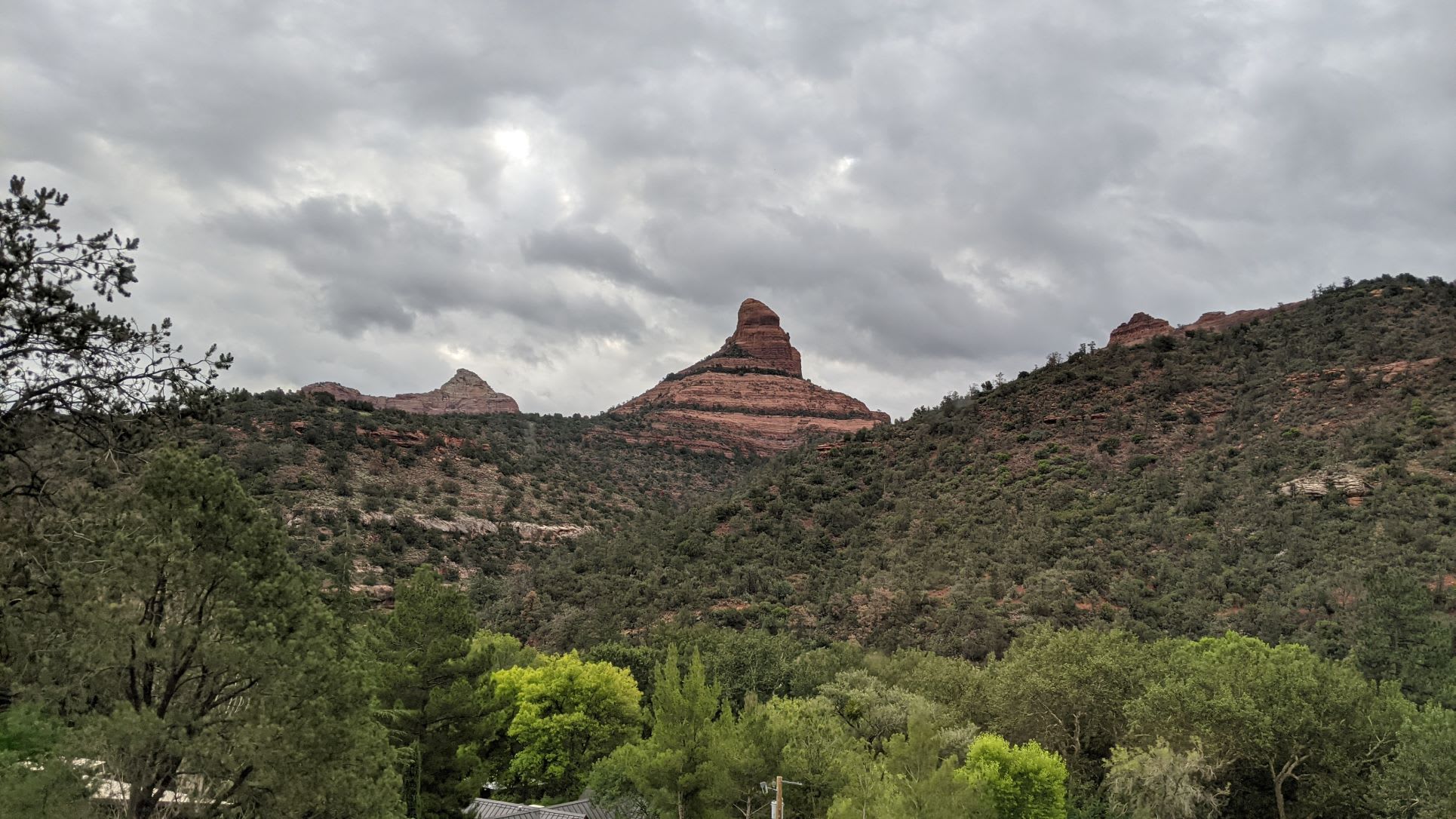
RELATED
TOUR
I recently interviewed Sheelagh Daly – a Holistic Nutritionist who also happens to be an avid cyclist and who has pedalled around Europe. Sheelagh runs a YouTube channel where she provides advice on both nutrition and cycle touring. Check out this video where she discusses the best nutrition tips for all of us cyclists out there. Watch the video and then keep reading as we expand a bit on her advice.
1. Eat Enough Food
On a bike tour you are gonna get hungry. Very hungry! You will be surprised at how much more food you need to replenish your body’s energy stores.
As Sheelagh says in the video “The biggest thing is just to eat enough. When we’re exercising our digestion slows down… it’s diverting that energy to our muscles… so we might not get the same hunger cues but our body is burning through fuel.”
So check in with yourself throughout your ride (a couple times every hour) to make sure you are snacking enough. On our fully supported tours we supply your roadside lunches so take the time to stop and fuel up. Even if your riding buddy is eager to get back on the road, grab a banana or an extra sandwich so you have a snack for the afternoon ride. At the end of the day on our tours, we gather together for a big nutritious meal.
2. Drink Lots Of Water
“Your body is using up so much water keeping you moving, and it needs hydration!.. A good rule of thumb is to take a couple big sips… every 15 minutes… and increase that if you’re still getting thirsty.”
On our tours we supply drinking water in our camps (and at our hotels if it’s a hotel tour) and at our roadside lunch stops. There is always enough water for everyone so be sure to fill your bottles when you can and keep sipping water before and after your ride.
A good way to monitor yourself to know if you are becoming dehydrated is to see what colour your urine is. It should be a pale yellow and never too dark. Darker (or brighter) yellow could indicate you haven’t had enough water. This would be a good reason to increase your intake and to speak to the tour medic (on Expedition level tours) if this persists.
>>Related Video: Eva’s 2 minute Tips – Hydration & Snacks
3. Replenish Your Salts
“Salt is crucial for the activity of our muscles as well as the circulation of our blood. Ever felt that saltiness on your skin after an intense ride? That’s your body burning through electrolytes. Electrolytes are minerals like sodium, potassium, calcium and magnesium.”
Many people like electrolyte drink mixes or salt pills or other sports products to help replenish their salts. We supply energy drink mixes on our Expedition level tours but some people forget that you are also replenishing your salts through the foods you eat – so add some salt to your dinner! It might sound strange but simply adding some salt to your Coca-Cola or water or juice also works.
It’s a good idea on a bike tour to carry with you some salty snacks. Pick them up along your ride, or on an off day, so you always have something to snack on to help replenish your salts.
4. Eat A Lot Of Whole Foods
“Try to consume as wide a variety of whole foods as you can, especially fruits and vegetables, .. it’s just gonna help you feel and ride your best.”
Getting your macronutrients (carbohydrates, proteins and fats) and micronutrients (minerals and vitamins) by eating lots of whole foods is ideal. Whole foods have not been processed at all. Eating a banana or an avocado (for example) is a great way to get these nutrients into your body when you have burned through a lot of them while cycling and exerting yourself.
On our tours, we always have fruit (and often fresh vegetables) at our lunch stops and we shop in markets and stores for fresh ingredients for our camp meals as much as possible.
Sheelagh has an excellent downloadable guide to nutrition that summarizes the keys to good nutrition and gives examples of foods you can eat to make sure you are getting all the nutrients your body needs. You can find it here.
]]>
We want to thank everyone who attended the live event online on July 6. This was the first in what we hope will be a series of events open to anyone with pressing questions about our upcoming tours. We had a large turnout and lots of really good questions. Please watch the video or scroll down to read a selection of the questions and answers along with some relevant links to find out more information. As always we look forward to hearing from you and stay tuned for more online info sessions later in the year.
Are safety vests mandatory?
No, but we highly recommend them due to the increased visibility and safety they provide. There are also a few countries on our tours in Europe where high visibility vests are required on certain roads.
Our TDA Starter Kit is an excellent resource with loads of info on what to pack.
What bike should I choose?
This blog and video is a thorough answer to that popular question. Eva also answers the question in this video too.
What if it rains or gets very cold?
We ride rain or shine and try to keep to our schedule, but there is always the option to catch a ride in our support vehicles if you need to. This is space dependent and we give priority to sick or injured riders but there is usually opportunities to get a lift on a typical day. We also provide a detailed set of recommendations on what clothing to pack so you are prepared for the elements.
How hard is it to complete the daily distances?
Most able bodied adults are capable of covering 100 km in a day even if they have never done that sort of distance before. We have a great blog about this here. If you are having a hard time completing a particular stage, we can transport you to (or from) the midway roadside lunch stop, or all the way ahead to the next camp or hotel. We always encourage people, if they are feeling healthy, to attempt to ride at least half the day’s distance. In time, everyone will build up the fitness to be able to cover the full day’s distance.
Will Silk Route and Tour d’Afrique run again? And when?
Yes, we are committed to running these tours when it is safe and logistically possible to do so. Currently they are both scheduled to run in 2022. For the Tour d’Afrique there is a high likelihood that some changes will be necessary in order to make it possible to run. We will be announcing those changes soon. For the Silk Route, changes are also very likely but it’s too early to say for sure.
Why are the luggage rules so restrictive?
This is to ensure that everyone is treated equally, that we have enough space, and that our staff aren’t overly burdened carrying heavy bags. Our experienced returning riders know that ‘less is more’ and they learn quickly that there is enough space for everything within the bag limits we set. We also send out a packing list in an email bulletin to registered riders closer to the tour which explains what you do and don’t need.
This is a great video on how to pack.
Travel Insurance: Can I still get insurance post-Covid?
The short answer is yes. More and more insurance options do exist that cover covid-related medical costs while abroad. These policies do have limitations in terms of what sort of trip interruption / cancelation insurance they include.
Further reading: Travel Insurance for Cyclists in the Time of COVID-19
What is the Morocco tour that you mentioned?
This will be approximately one month long starting spring 2022, and will be a loop starting and ending in Casablanca. It will cover many of the highlights of this country: Fez, Tangiers, Atlas Mountains, Agadir and more. It will be a combination of gravel and paved roads, and we will be camping with hotels on the rest days. The announcement for this is expected sometime this summer. Stay tuned.
Do people ride in groups?
This is entirely up to you. We have a support system in place but there is lots of freedom built in for you to ride at your own pace, with others, or by yourself.
Will I be the slowest rider?
This is often a big concern. We have people with a wide variety of fitness levels and endurance. You are likely not going to be the slowest but we do have a ‘sweep’ rider who rides at the end so no one is left behind and no one will feel pressure to try and keep up.
Further reading: A Day in the Life on Our Supported Cycling Tours
We hope you found some answers to questions that were on your mind. We are here to help if you have more to ask. If you are already registered for a tour and have some questions please contact Michael Coo, our registered rider support person, or contact Eva Hoekstra if you are new to the company or thinking about a tour but have some questions before you register.
]]>
As we prepare for our company’s first ever bikepacking experience, we have been having some interesting discussions with people who have a variety of opinions about bikepacking, cycle touring and everything in between. We also learned in our annual survey (we summarized the results here) that almost 80% of people that follow us have either bikepacked or are curious to try it.
So what is bikepacking? Cycling Weekly described it as “a multi-day tour by bike, completed on mixed terrain or entirely off-road with the rider carrying their equipment on their bike.”
Bikepacking.com – one of the best resources for finding routes, learning about gear and being part of the larger bikepacking community – explains the sport in The Rise of Bikepacking, A Manifesto:
“While bicycle touring has existed since time immemorial, bikepacking has come to define a style of travel favoring routes that are predominantly off-pavement, sometimes featuring significant components of singletrack. Routes that by their nature tend to demand lighter weight setups than the traditional four-pannier bike touring setup — at least to be enjoyed to the fullest…Ultimately, we’re fans of bike touring in all its many incarnations and tribes, so we’re the first to acknowledge that there’s often a lot of overlap and shared stoke, however you choose to camp out on a bike, and whatever bike and setup you choose.”
How We Define Guided Bikepacking
So that leads us to the question of what exactly is a guided bikepacking trip? Well, it’s everything that people love about bikepacking but with some backup and guidance. That means you can expect:
- Small groups led by an experienced guide
- Challenging routes deep in the bush
- Carrying all your own gear but with emergency vehicle on standby
- Navigating along a GPS track provided by us
- Sourcing and carrying food along the route
Craig Dalton and Ben Shillington (our guide for our first bikepacking trip) also discussed this on The Gravel Ride podcast…
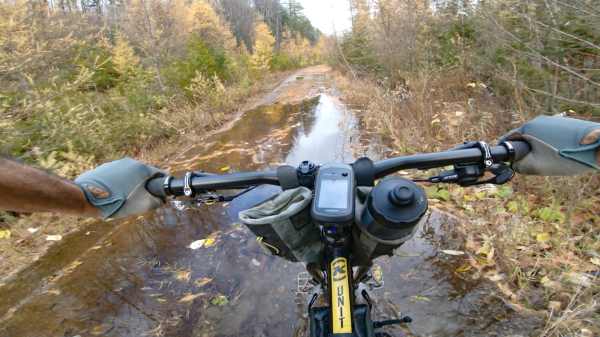 Many bikepacking purists will see the guided aspect as a bit controversial. Should companies like ours be making packaged bikepacking tours? Does this take away from bikepacking culture or enhance it?
Many bikepacking purists will see the guided aspect as a bit controversial. Should companies like ours be making packaged bikepacking tours? Does this take away from bikepacking culture or enhance it?
Our opinion is that a guided trip opens up bikepacking to a wider range of people who may feel too intimidated to plan and execute their own trip – making the experience more inclusive and welcoming to all. Bikepacking stories continue to captivate all of us. Our first trip through Quebec will try to stay true to the idea of bikepacking by getting deeper into the wild, away from public roads and car traffic, being self-sufficient, and experiencing the joy of discovery.
Just as there are guided kayaking and skiing expeditions, we hope this new offering allows more and more people to try their first bikepacking trip. As we develop this new idea, the structure and support may change over time as we learn what works best and what creates the most enriching experience for all participants.
Our annual calendar of tours will still consist largely of supported cycling tours on public roads but we hope that these new bikepacking experiences can get even more people to try a big bike adventure – traveling further and longer then they might have in the past or on their own. Part of our mission has always been to enable regular people to take on big memorable trips that enhance their lives – and guided bikepacking trips are another way we can achieve that.
What are your thoughts? Do you consider yourself a bikepacking enthusiast or a cycle tourist or neither? Do guided trips appeal to you or should bikepacking remain as a independent / do-it-yourself culture? We would love to hear your thoughts. Leave us a comment below.
If you are interested in participating in our first-ever guided bikepacking tour and pioneering a new kind of group bike travel, come join us in Quebec this August. Details here.
RELATED
TOUR
In March we sent out our annual survey and our generous community responded en masse – over 300 of our past participants and nearly 700 of our newsletter subscribers took the time to provide important feedback on a number of questions and topics on our minds.
Thank you to everyone who contributed. We go through the results in detail and we listen to your feedback and try our best to improve the information we share and the tours we run every single year… but especially in a pandemic year.
>>RELATED: Cycle Touring and COVID-19: Survey Results (2020)
We thought that some of the information we gathered would be of interest to our expanding community of cyclists around the world. Here is a summary of the results.
Who Completed the Survey?

The majority of our followers and past participants are from North America, Europe, New Zealand and Australia. The vast majority of our followers are 46 years old and up. We tend to get more younger people on our Expedition-level tours. Among our newsletter list 30% are female, but we have a growing number of female riders on our tours. This year’s survey to past participants showed that 35% are female. We hope to see the balance between male and female participants continue to equalize.
Participating in Supported Cycling Tours

More than 50% of our newsletter subscribers have already participated in some kind of supported / group tour in the past (but not yet with TDA) and an incredible 58% plan to do a tour with us and most of those plan to do one of our tours within the next two years!
That is extremely encouraging and we hope to help as many people as possible started on the path to their first long distance supported tour experience. We’ve developed great online resources, and our staff are on stand-by to answer all your questions and address your concerns and reservations.
Travelling After the Pandemic
There were some very encouraging signs for the future of cycle touring. Over 80% of our followers expect to be fully vaccinated by the end of September. With the vast majority of our audience in Europe, North America and other wealthy, developed nations we should all feel very privileged at the speed at which we are able to access these highly important and effective vaccines and begin to return to adventure travel activities abroad.
Only 6% said they expect to travel less and for shorter periods of time after the pandemic whereas 51% said they would travel the same as before and 23% said they expect to travel more and for longer periods of time. For many, they believe they must now seize the opportunities they have, and not wait for a day far in the future to have experiences that can last a lifetime.
It does seem that people do plan to travel closer to home – within their home country, continent or region – at least initially. Over time, as the situation improves globally, we expect people to expand their travel choices.
One interesting point – when we asked if people thought our information on our website was adequate concerning COVID-19, 48% said yes, but a huge portion (51%) had not yet seen it. So if you were one of those, check it out here.
Things That People Like
Most people found our How to Prepare series useful, but about 25% hadn’t heard of it, so here it is – a great resource for anyone contemplating their first group / supported cycling tour.
The same was true for the two video series we are producing: TDA Talks and Two Minute Tips. Both were enjoyed, but many people had not yet discovered them.
We also asked people about bikepacking. We had some mixed results here: 9% said they only do supported cycle touring, and 14% prefer cycling on public roads. But almost 80% of people either have bikepacked or are curious to try it. So we hope that we’ll be able to offer more bikepacking style trips in the future.
Lots of Great Ideas for Our Newsletter
Most subscribers to our newsletter want to learn more about our company and our tours in hopes to one day participate themselves. But a lot of people also subscribe to read inspiring and informative blogs, or watch videos from our tours or to read profiles of some of the past participants. People also want to hear about the latest tours we have created as well as commentary on things that affect touring cyclists and the regions we travel in.
People also suggested that we include more behind the scenes stories of what it takes to run these multi-country tours, and who are the types of people (staff and cyclists) that participate. They also want practical information on basic bike maintenance, gear choices, how to stay safe, how to train for these tours, and other ways they can become inspired and motivated to ride their bike with us some day.
Hurdles to Joining a Tour
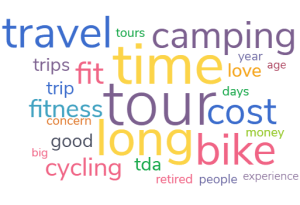 Finding enough time and covering all the costs of our long distance tours continues to be the main hurdles for people who hope to join a tour (this is one of the reasons we now have a bikepacking category too). But many people are also concerned about their fitness levels, camping in rough camps, the fact that they are getting older. People also have family and work commitments, and people worry about safety.
Finding enough time and covering all the costs of our long distance tours continues to be the main hurdles for people who hope to join a tour (this is one of the reasons we now have a bikepacking category too). But many people are also concerned about their fitness levels, camping in rough camps, the fact that they are getting older. People also have family and work commitments, and people worry about safety.
Another thing that people often say is that flying with their bicycle is a big hassle. We wrote about this for our how-to series and we will continue to write about and shoot videos that address some of your most common concerns.
Thanks again to everyone for participating in these surveys that provide us with much important information and that influence our decision making. It’s very much appreciated.
]]>
Our How to Prepare series has covered a wide range of topics to help you plan for a big post-pandemic cycling adventure but it may still feel a little overwhelming. There’s a lot of information and it can be daunting to know where to start. Here are five keys that I’ve identified that I think are the most fundamental things you need to know. Once you have these under control then you can move on to the rest of the topics in the series.
1. Don’t Underestimate The Importance Of Training
It is strange how training for a multi-day or even multi-month cycling adventure somehow ends up at the bottom of many people’s long TO DO list, but it shouldn’t. The truth is that you can cycle your way into shape once you start your tour, but doing so really takes away from the joy of it all. There are a lot of uncomfortable and unexpected things that will happen once the cycling starts, so wouldn’t you rather be in really good shape when you take that wrong turn, or have to outrun a mean looking dog?
We asked 8 of our previous cycling participants – from a variety of our tours in Europe, Africa and Asia – to tell us how they trained. I found it very informative. Read 8 Training Tips from our Long Distance Cyclists.
2. Choose A Bike That You Feel Comfortable On
Unlike training, choosing a bike is typically not something people overlook. I’d argue that sometimes we cycle tourists worry too much about finding the perfect cycle touring machine (hint – no such bike exists). With that said, it is important to choose an appropriate bike (we wrote a highly detailed blog with an accompanying video on this). Choosing good touring tires and an appropriate set of pedals is a big part of this too. Above and beyond the bike and the parts you choose, it is a must to get a proper bike fit (Read Does Your Bike Fit You?). You can spend as much money as you want, but if the bike doesn’t fit properly, you will be setting yourself up for disappointment.
3. Learn The Ins And Outs Of Traveling With A Bike
So you have found a bike and have done your training. Now you have to get yourself and your bike to some far away land to start your adventure. I’ve travelled all over the world with my bicycle. During this COVID imposed travel break, I wanted to share some of my tips on traveling with a bicycle. Sure, it’s a bit of a hassle if you are comparing it to a typical flight you make for work or a flight to start your vacation at a resort. But remember, you are embarking on an adventure and part of that adventure begins at the airport. There is something so cool about swinging your leg over your own bike for the first time in a far away place. You are riding through entirely unfamiliar territory but you are moving through this place on a bicycle you know well and it gives you a bit of confidence to pedal on and keep exploring.
This is a very long post. I tried to fill it with as much detail as I could think of. I cover packing your bike, getting to the airport, checking in, and getting taxis to and from the airports to where you stay. Read Traveling with your Bicycle – Everything you Need to Know.
4. Get Your Travel Paperwork In Order
During my travels, I have filled several passports with colourful visa stamps from all over the world. I have also had to open travel insurance claims many times – a few times for myself and many times for our clients after unfortunate falls or medical issues or theft. So again, I thought I could give back something as a thank you to the travel gods and write a bit about what I have learned and what you need to look out for when choosing and using travel insurance.
Be warned! These are two long and detailed posts so use the headings to jump to the sections and content you need most. Read Getting Visas – Everything you Need to Know and Travel Insurance – Everything you Need to Know.
5. Learn The Basics Of Bike Maintenance
On a supported cycling tour you have the convenience of skillful crew to help fill in some of the gaps in your own technical knowledge but everyone should come on tours knowing how to clean their drivetrain and fix a flat tire. Read How to Fix a Flat Tire on Your Next Bicycle Tour and How to Clean your Bike.
Much of what our How to Prepare series is all about is helping to build your confidence that these adventures are possible and within reach for most people. I hope this was helpful. Got some suggestions of your own? Please leave your comments below and tell us what your keys to preparing for a cycle tour are.
]]>
If you have been following along on social media, you know that today we have, in a virtual sense, a rest day in Nairobi. There has been lots of interest in the progress of our virtual tour and many past participants have generously contributed their photos and stories. We previously wrote about the end of the first section and the iconic stage up the Blue Nile Gorge.
Here is what we have scheduled for our virtual tour for the next 10 days. Make sure to follow along using #tourdafrique on Instagram or Facebook. Leave your comments and enjoy this vicarious cycling adventure through Africa.
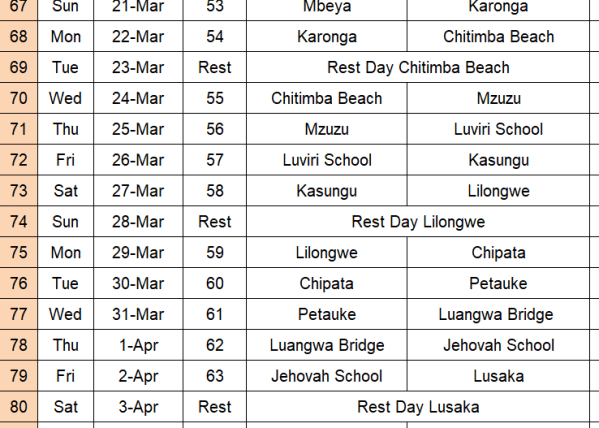
Now at the (nearly) halfway point of the tour, it’s time for another recap on what’s transpired along the route so far. Here are a few of the highlights from the past few weeks of cycling across Africa.
Coffee Break South of Khartoum
View this post on Instagram
Roadside Attractions
View this post on Instagram
Camping in the Highlands of Ethiopia
View this post on Instagram
The Infamous Blue Nile Gorge
View this post on Instagram
>>Related blog: Celebrating the Blue Nile Gorge
Arriving to Addis Ababa, Ethiopia’s Capital
View this post on Instagram
Headed for the Shores of Lake Koka
View this post on Instagram
Blanketed in Fine Dust near the Kenyan Border
View this post on Instagram
The Landscape is Changing in Kenya
View this post on Instagram
Catching Sight of Mount Kenya
]]>
View this post on Instagram
Introducing How to Prepare – our 8-part online series designed to get you ready for your cycling adventure with us. This is a deep dive into all aspects of choosing and preparing for a long distance cycling tour.
Topics We Cover
- Choosing a tour
- Selecting the right bike
- Getting travel insurance
- How to apply for travel visas
- What to pack
- Bike handling skills
- And much more…
“There are psychological benefits to planning activities in the future, especially travel,… Future-oriented thinking is equated with proactive coping, a means of reducing stress through detailed planning, such as learning which flights to book to avoid layovers, and gathering the resources — including time and money — to make it happen… The pandemic, too, may have shown travelers that what they thought they could always do — namely, see the world — isn’t such a certainty” from Longer, Slower, Farther: Savoring the Prospects of Future Travel, New York Times
We see this time, when COVID-19 still controls much of our movement and travel choices, as a great opportunity to commit yourself to planning and preparing for your first cycling adventure with us. Over the next few months we will be highlighting each component of the 8-part series in our newsletter (subscribe here). But if you want to dive in and start right now, click here to review the series in full.
Please leave a comment or question below any of the blogs or videos. We have tried to be thorough but there is always more to learn, so let us know what you think we missed or suggest any other topics you would like us to cover.
How to Prepare
An 8 part series to get you ready for your first TDA tour. Click here to read more.
HOW TO PREPARE: An 8 part series to get you ready for your first TDA tour. Click here to read more.
Travel insurance is probably the least exciting part of planning a cycling tour. But without it, you could find yourself stuck in a costly and potentially dangerous medical limbo overseas.
Tour leaders with TDA Global Cycling spend many hours speaking with travel insurance companies – calling from satellite phones or cell phones, from desert camps, hospitals, hotel parking lots and a myriad of other locations. This is in an effort to help one of our cyclists start an insurance claim and get support after an accident, serious health issue, theft or loss.
It can be especially challenging to get insurance coverage for all situations and for the multiple countries involved in long distance cycle touring . Here we are trying to cover all aspects of travel insurance and we hope that this information will be really valuable, whether you are cycling a week by yourself in the Pyrenees, bike packing the Great Divide or traveling with a group like TDA Global Cycling through 8 countries across the Silk Route.
As this is a lengthy and detailed post, some of it may not be relevant to you. So use the links here to skip ahead…
- Buying Travel Insurance
- Medical Coverage
- Trip Cancellation / Interruption Coverage
- Coverage for Covid-19
- Countries with Travel Advisories
- Baggage Insurance
- Exclusions and Conditions for Adventure Activities
- Filing a Claim
Buying Travel Insurance
 Depending on the country you live in there may be different ways to buy your travel insurance. Usually a travel insurance policy will be available through banks, automobile associations, travel agencies and, of course, there are many websites that make it a quick and easy process online.
Depending on the country you live in there may be different ways to buy your travel insurance. Usually a travel insurance policy will be available through banks, automobile associations, travel agencies and, of course, there are many websites that make it a quick and easy process online.
If your credit card includes travel insurance it likely needs to be activated before you travel, and depending on the length of your trip, might need to be extended.
Sometimes you can book insurance by ticking a box when purchasing your flight online. But be warned, this may make it difficult to properly review what the policy includes.
Other Things to Consider
Read the policy carefully before purchasing it or work with a travel agent or your tour provider who can review the policy with you.
What do you want covered? Basic travel insurance usually covers some amount of medical coverage but you may also want baggage protection in the event it is lost or stolen. You might want trip interruption insurance. More on these below.
Travel insurance should always cover the entire length of your time away, including the days spent traveling to your trip location and returning home.
If you are traveling within your own country, you may already be covered if there is universal healthcare or if you have private health insurance that covers your activities. But your home healthcare plan, whatever it is, will most likely NOT cover you outside your home country. Regardless what country you live in, you almost always need to buy travel insurance separately from the health coverage you have at home.
Once you buy travel insurance make sure to keep a copy of the policy summary with you. The key pieces of information you need are: (a) the policy number, and (b) the phone number for the insurer’s claims department.
The claims department number should not be a toll free number (number that start with, for example, ‘1-800’ in US/Canada or ‘0800’ in the UK or ‘1800’ in Australia). These typically do not work from other countries. Instead you will have to make a paid international call or reverse charge call where possible. For TDA tours, we always have a satellite phone or mobile phones for emergency communications.
Medical Coverage
 Most cycle tour operators will require that you have at least basic travel medical insurance that covers medical care and related costs in all of the countries the tour travels through. This travel medical insurance should include medical repatriation in the event of serious injury that requires further care in your home country and medical evacuation from the scene of an accident to a healthcare facility in the nearest city.
Most cycle tour operators will require that you have at least basic travel medical insurance that covers medical care and related costs in all of the countries the tour travels through. This travel medical insurance should include medical repatriation in the event of serious injury that requires further care in your home country and medical evacuation from the scene of an accident to a healthcare facility in the nearest city.
We had a situation in the past where a cyclist thought his regular home health insurance would cover him for the trip. It did not. Sadly, he had an accident and broke his hip. Being injured in a foreign country is already incredibly stressful and without proper insurance it can be a nightmare.
Our staff are trained and ready to act in emergencies to get you to a hospital or clinic. They are able to stay with someone in hospital for a limited amount of time and help initiate the insurance claim and get the process started. But your travel insurance and your next of kin become the two main parties assisting you once our staff are needed to rejoin and support the rest of the group.
A good insurance policy usually covers the cost for a family member or medical professional to come and help you return home comfortably in the event of a serious, trip-ending injury.
Trip Cancellation / Interruption Coverage
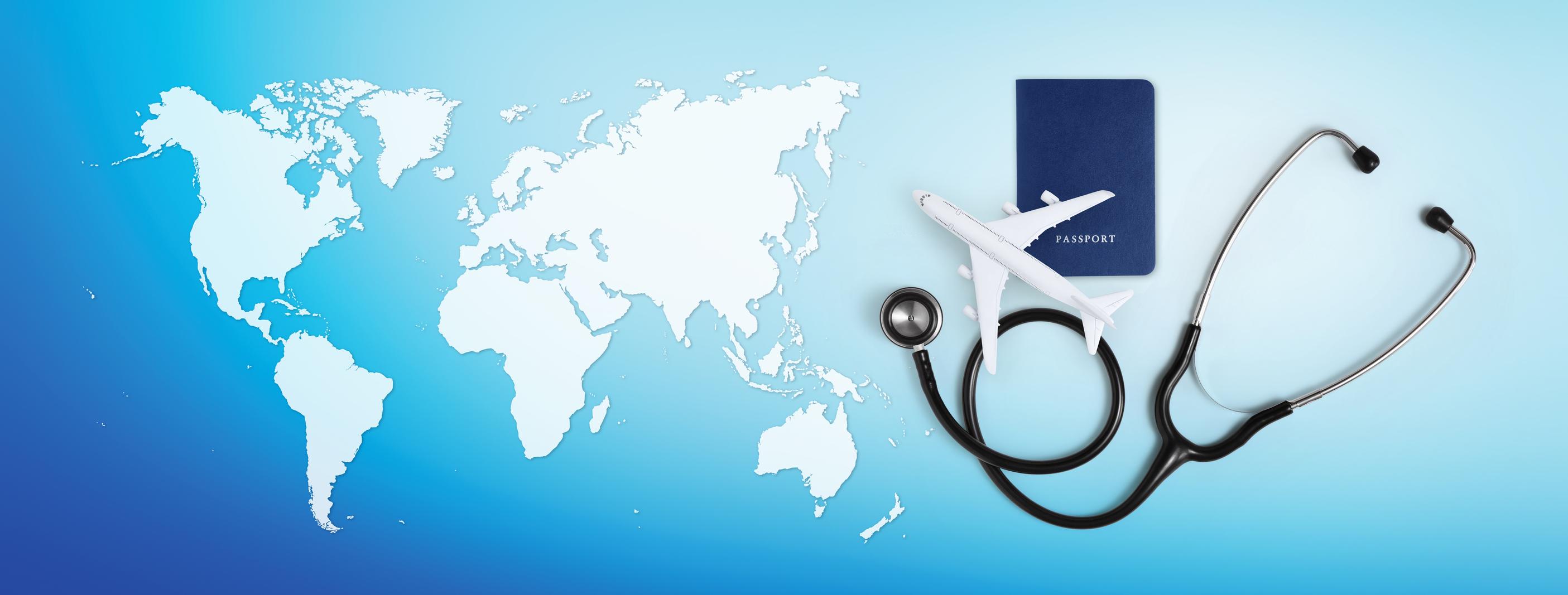 Travel Cancellation covers you for expenses incurred if you have to cancel your trip before departure. This insurance often needs to be purchased within 3 days of paying the entry fee and purchasing your flights.
Travel Cancellation covers you for expenses incurred if you have to cancel your trip before departure. This insurance often needs to be purchased within 3 days of paying the entry fee and purchasing your flights.
Travel Interruption covers you for expenses incurred if you have to depart the tour early due to injury/illness. With some policies it also covers the expenses incurred if you have to divert around a country for security reasons. On rare occasions at TDA we change our tour itinerary at short notice for safety reasons. Travel interruption insurance has allowed our participants to recoup the costs of unexpected flights over a country that became unsafe to cycle through.
Having trip cancellation or trip interruption insurance is often the only way to be compensated for the fees you paid for an organized cycling event if it gets cancelled or stopped early. Check what the tour operators refund policies are, but typically almost all companies consider that the entry fees become non-refundable after the trip has started.
Coverage for Covid-19
At the time of writing, there continues to be much uncertainty in the travel insurance market as to coverage for Covid-19. Some travel insurance providers are offering medical coverage for Covid-19 (for select nationalities). There are very few, if any, travel insurance providers offering trip cancellation and/or interruption insurance for Covid-19 related instances.
Here at TDA we will continue to monitor the policies of travel insurance providers related to Covid-19 and will be sending out more information accordingly.
UPDATE May 2021 – We published information concerning COVID-19 travel insurance coverage in a new blogpost here.
In these changing times, this is yet another reason to consider booking your cycling adventure with a reputable tour operator such as TDA who can help you navigate the new travel insurance and health norms.
Countries with Travel Advisories
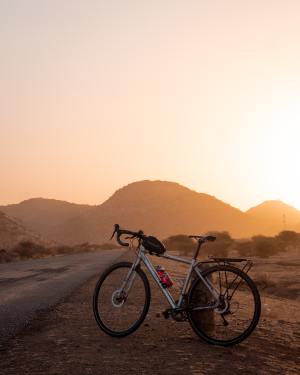 Some insurance policies do not cover areas where your respective government has an advisory against travel there. These travel advisories change often and differ depending on which country you are from. We recommend checking your own government’s information and confirming with your insurance company that you are covered in all countries.
Some insurance policies do not cover areas where your respective government has an advisory against travel there. These travel advisories change often and differ depending on which country you are from. We recommend checking your own government’s information and confirming with your insurance company that you are covered in all countries.
Note – some insurance companies will cover you for medical expenses incurred in areas with travel advisories, as long as the expenses are not related to the reason for the travel advisory. So, for example, if you have a policy that includes medical coverage but excludes coverage in Sudan for anything related to terrorism, you could still be covered in Sudan if you fell off your bike and needed medical attention.
If you are struggling to find the right insurance policy, you are welcome to reach out to us for recommendations on insurers that specialize in higher risk areas and/or countries with travel advisories.
Please note insurance policies can change without notice, so whichever policy you decide on, be sure to confirm all details directly.
Baggage Insurance
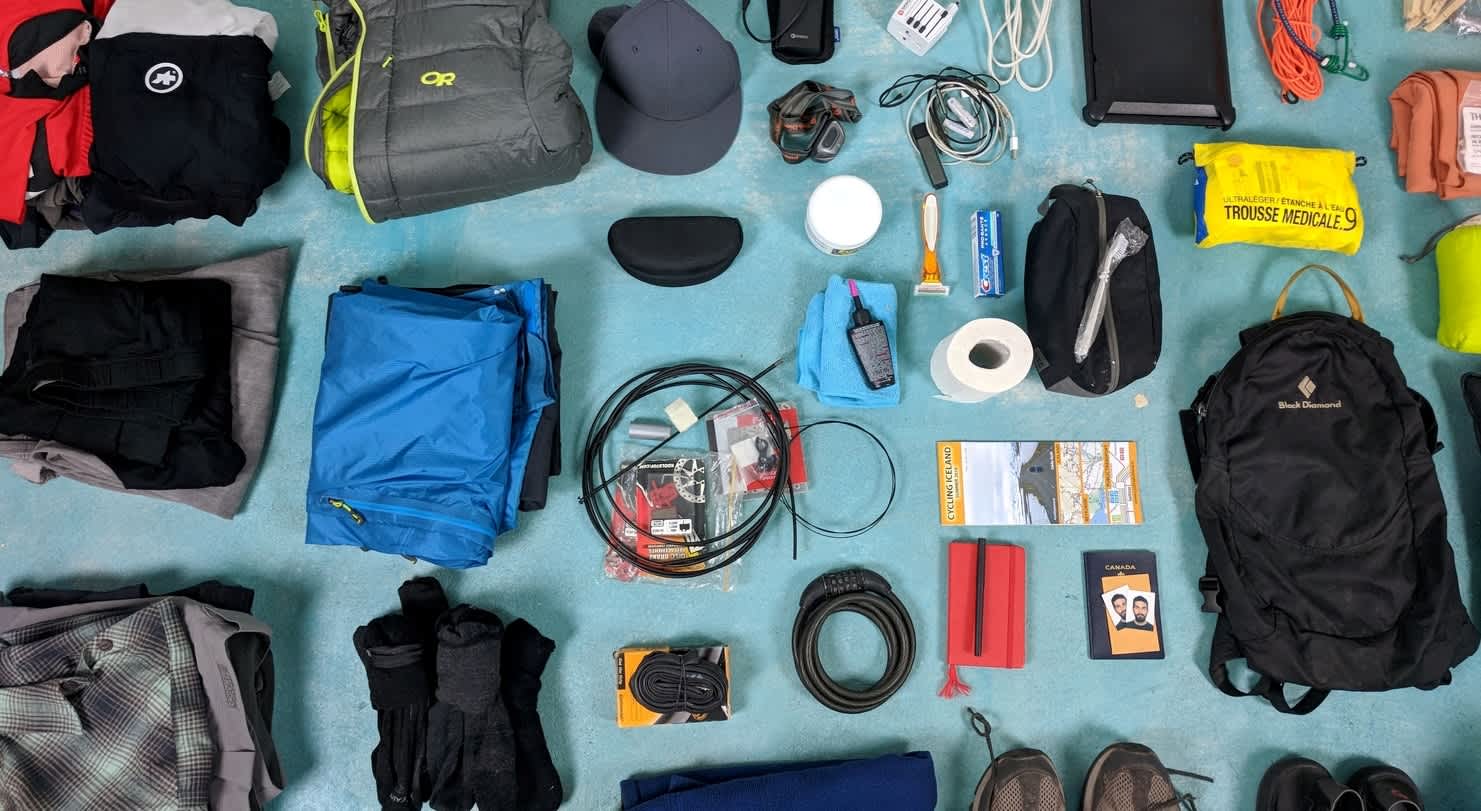 Your baggage insurance should include coverage for everything that is of value to you. Some policies specifically exclude sports equipment, like bicycles, and sometimes only cover them if being ridden and do not cover them if damaged while being carried on a vehicle (like our support vehicles).
Your baggage insurance should include coverage for everything that is of value to you. Some policies specifically exclude sports equipment, like bicycles, and sometimes only cover them if being ridden and do not cover them if damaged while being carried on a vehicle (like our support vehicles).
Tour operators typically have coverage for their support vehicles, but rarely cover the contents and hence this is why many (like us) recommend you get baggage insurance which includes your bicycle.
Some home owners, or those with insurance that covers the contents of their home from loss, damage, or theft might be able to specifically cover their bicycle under this home insurance. This insurance typically covers the bicycle even when it is not in your house.
Exclusions and Conditions for Adventure Activities
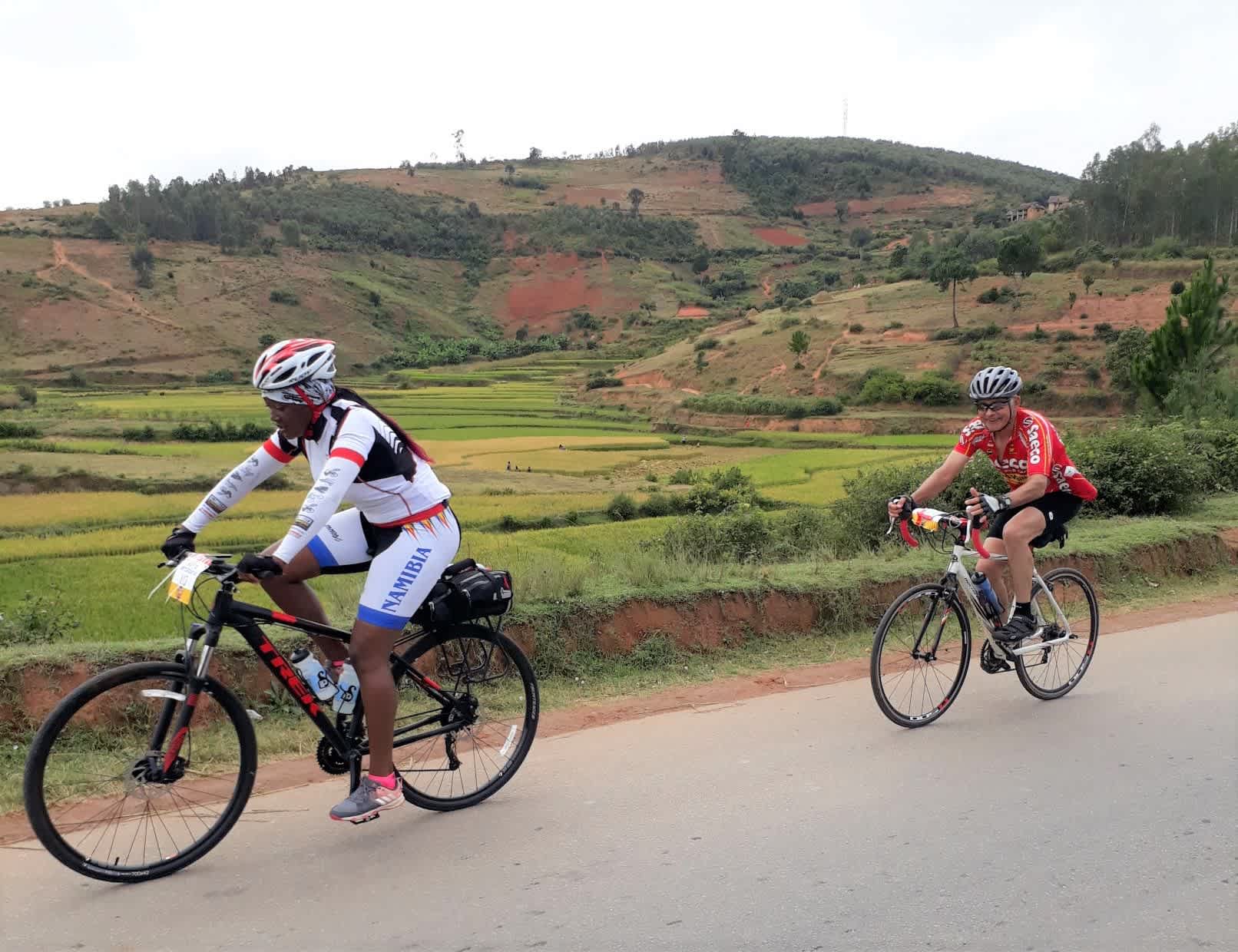 Some insurance policies do not cover bicycle touring (or more often – bicycle racing). Some do not cover you over a certain altitude. If you are cycling the Himalayas or the Andes, for example, you’d want to double check altitudes you’ll be cycling at and what is covered in your policy. Age and any pre-existing conditions might be factored into the price, and some high-risk events – rock climbing, or scuba diving, for example, may come with conditions attached.
Some insurance policies do not cover bicycle touring (or more often – bicycle racing). Some do not cover you over a certain altitude. If you are cycling the Himalayas or the Andes, for example, you’d want to double check altitudes you’ll be cycling at and what is covered in your policy. Age and any pre-existing conditions might be factored into the price, and some high-risk events – rock climbing, or scuba diving, for example, may come with conditions attached.
Some insurance policies that cover adventure sports only cover organized events led by qualified tour leaders. This is a benefit of signing up for tours like the ones we offer.
World Nomads specializes in adventurous travellers and they offer many adventure sports coverage add-ons. They also clearly explain the exclusions and conditions associated with the basic policy.
Filing a Claim
 Hopefully you pay for your insurance, do you tour and never use it – then get home and say what a waste of money! But if you do need to use it, a good insurance policy can be priceless. The trick is figuring out which insurer has the best coverage and the best claims department. These are the people who are tasked with managing your claim in the hours and days after an accident, theft or other event that required a call to your insurer.
Hopefully you pay for your insurance, do you tour and never use it – then get home and say what a waste of money! But if you do need to use it, a good insurance policy can be priceless. The trick is figuring out which insurer has the best coverage and the best claims department. These are the people who are tasked with managing your claim in the hours and days after an accident, theft or other event that required a call to your insurer.
I have personally seen it all. Some agents you speak with show real concern and empathy with your situation and work quickly and efficiently for you to try to get your claim processed and safely dealt with. Other experiences remind me of trying to reach my bank – you wait on hold, sometimes for hours only to speak with a poorly trained phone operator who shows little interest in your emergency.
The people handling your claim can make a world of difference in your post-emergency care and in helping you to recoup the costs incurred.
Usually you want to file a claim within 24 – 48 hours after the incident occurs. So, in the event of a fall off your bike, the most important thing is to first get yourself to a hospital so you can call and start a claim. Sometimes the insurance company will deal directly with the hospital and pay them but more often you will have to pay up front and then get reimbursed in the weeks or months afterwards by the insurer.
Make sure to keep all your receipts for everything – taxi to the hospital, medications, hospital fees, translation fees, cost of phone calls and so on. Also make sure you keep notes of the dates, times, and locations of where the accident happened. You will likely also need to obtain a police report in the case of a theft or accident involving a local person, whether pedestrian or motorist.
On a tour with TDA, we provide excellent emergency assistance in the minutes and hours after an incident – getting you to the care you need, and helping you open an insurance claim and contact your loved ones.
How to Prepare
An 8 part series to get you ready for your first TDA tour. Click here to read more.
HOW TO PREPARE: An 8 part series to get you ready for your first TDA tour. Click here to read more.
In the past, as a TDA Global Cycling tour leader, I was fortunate enough to have travelled all over the world. I experienced a variety of visa application processes in many different countries. I also had passports lost at courier sorting facilities, managed to leave one at a shop in rural Georgia in the Caucasus region and saw some of our cyclists’ trips interrupted (or ended) due to bureaucratic hiccups. As a result, I have learned a few tips and tricks that I thought I would share with you.
If you are thinking about a big solo cycle touring adventure overseas or planning to register for a tour with TDA, you are likely going to be spending some time researching visas and entry requirements for certain countries. Here is a list of things to keep in mind when you start that research.
I have broken this down into three main categories. Click the topic below to jump to it directly.
Definitions and Basics
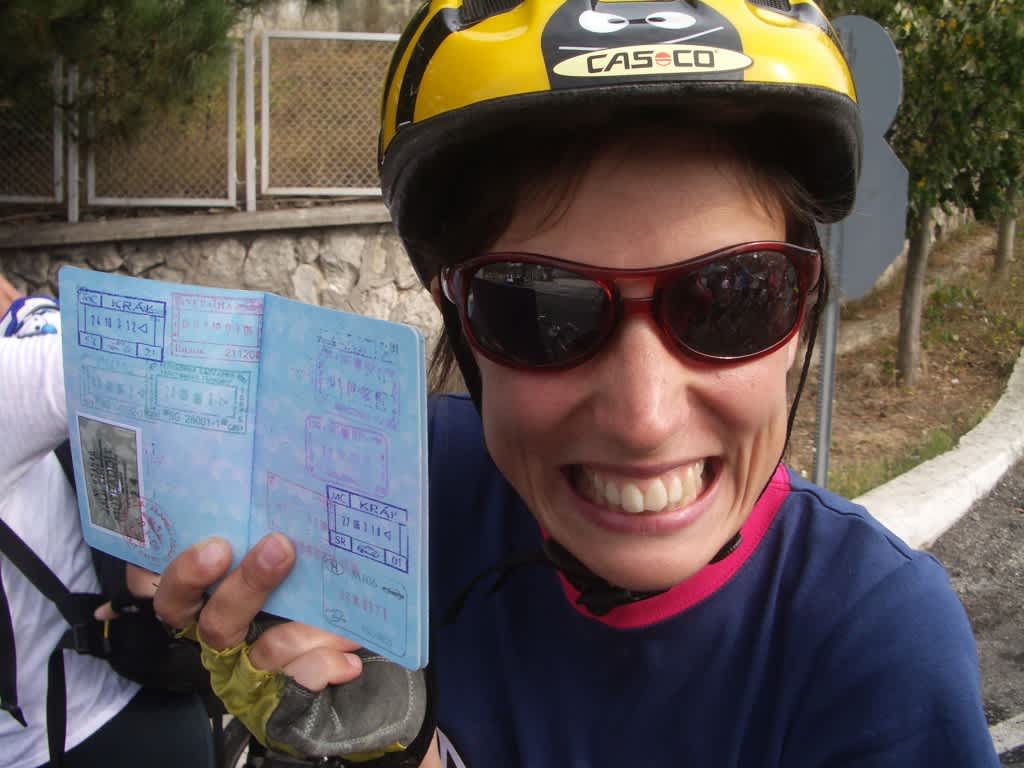
Passports
If you are traveling to another country to start your bicycle adventure, you almost definitely need to have a passport. Check the expiry date. If you need a new one, remember that the application process can take weeks or months in some cases so don’t wait until the last minute. Keep your passport secure and undamaged. In Canada, our passports are technically the property of the Government of Canada. I have heard of cases where someone has returned to Canada and been threatened with a fine for a passport that was stained or water damaged.
Pages and Expiry
Do you have only a few pages left in your passport and you have a multi-country tour planned? Is your passport due to expire the day you return from your travels? Either of these might be a reason to consider replacing your passport before you travel (and before you apply for any required visas). Most countries have a rule requiring your passport to be valid for an additional 6 months beyond your scheduled date of departure from the country. Others might require a minimum number of blank pages, or you might have underestimated how many pages you will fill on your trip (our Silk Route cycle tour requires a minimum of 8 blank pages and many countries have a stamp or visa that covers a full passport page).
Travel Visa Basics
 No, we are not talking about the credit card in your wallet. A travel visa is an official permission (sometimes it gets physically stamped or affixed in your passport) given by foreign government for you (as a foreign traveler) to enter their country. Not all countries require a visa. Each country has strict rules on when and how to apply, where to apply, what the fees are and any supporting documents that are required. The countries that do require visas usually require them to be applied for in one of the following three ways:
No, we are not talking about the credit card in your wallet. A travel visa is an official permission (sometimes it gets physically stamped or affixed in your passport) given by foreign government for you (as a foreign traveler) to enter their country. Not all countries require a visa. Each country has strict rules on when and how to apply, where to apply, what the fees are and any supporting documents that are required. The countries that do require visas usually require them to be applied for in one of the following three ways:
- In advance – you complete an application form, then mail your passport, application form, visa fee (usually a money order / bank draft, though sometimes paid online) and any supporting documents to your nearest embassy or consulate for the given country (or – in some cases – to a private visa processing company that they work with).
- On arrival – for some countries, you can get your visa when you arrive at the airport or land border. Sometimes you can get it on arrival at the airport but not at a land border, so check this carefully.
- E-visa – a growing number of countries allow you to complete a form and pay online. E-visas are sometimes automatically approved, whereas others require a period of time for them to be approved and then a notice is sent to you (typically by email). For e-visas, there is no need to physically mail your passport or forms away but you need to carry with you a print out of the e-visa confirmation.
Different Types of Visas
In most cases, you will be applying for a tourist visa (as opposed to a business or transit visa). This visa might have options for length of stay (30 days, 90 days) or this might be decided by the authorities based on the dates you indicate. You are likely to chose between a single or multiple-entry visa. Multi-entry (or double entry) visas are required if you intend to exit the country and then re-enter within the validity dates of your visa. These will cost you more, but give you a bit more travel flexibility and usually have a longer validity period.
What is an LOI ?
A letter of invitation (or LOI) is a supporting document that you are sometimes required to submit with your visa application. LOIs are a catch-all term for a variety of letters that can be requested. Sometimes it is simply a letter we provide you (free of charge, of course) stating why you are traveling to the country with our group, what the dates are and the basic details of the tour (sometimes they also require a daily itinerary, though this is rare).
For some countries, you are required to obtain an official letter of invitation from the government or through one of its approved travel agents within their country. For our tours, part of the service we provide is obtaining those letters for you, or connecting you with our local partners in the countries who provide the letters. These more official letters typically come with a service fee from the provider that you would be required to pay. In other cases you might be asked to obtain an LOI from your hotel or from any local tourism provider. Again, in these circumstances, we help you through this to make sure you have all the appropriate paperwork included when you submit your application.
Application Process
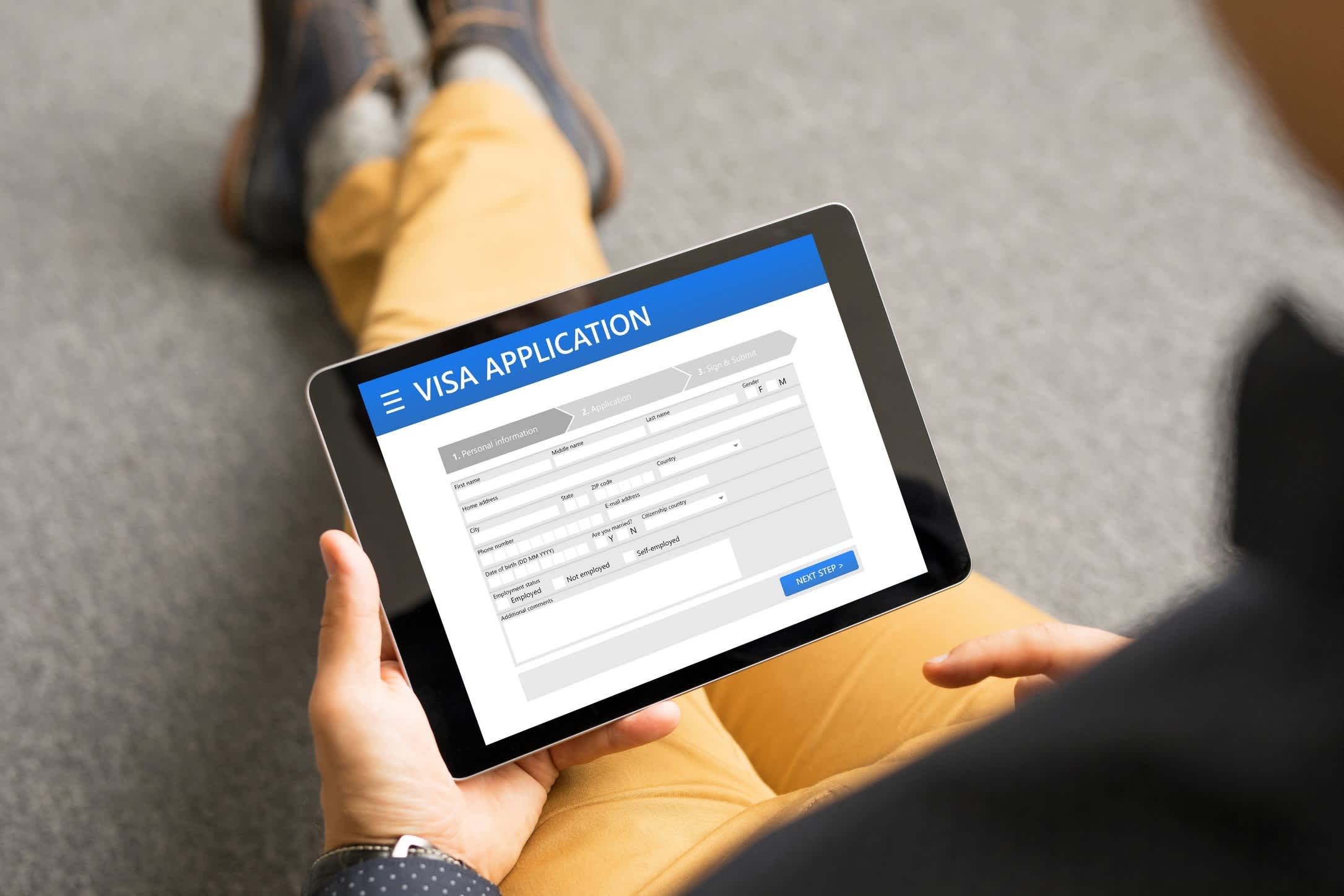
When to Apply
Our TDA customer service staff are a huge part of helping you through the application process. For some countries, the timing and the details are crucial. Take for example, Sudan and Ethiopia. Up until recently, they both required you to apply for visas in advance. But if you applied too early your visa would have already expired by the time you arrived to the country. Sudan gives you a certain number of days that your visa is valid and it starts from the day you enter the country. Conversely, Ethiopia gives you a validity period that starts on the day the visa is placed in your passport. An important, but subtle difference to watch out for.
Save Time with Forwarding Envelopes
TDA pro tip – if you are applying for multiple visas through several embassies in one city (eg. in Washington, Ottawa or The Hague) you may be able to have your applications forwarded between embassies without having to send it all back to you each time. Always confirm with the embassy first, but it is sometimes an accepted practice. You enclose an explanatory note and include pre-paid and pre-addressed envelopes within the first application so the embassy can then pop it in the mail to the next embassy. This saves crucial time when you have multiple applications to be approved.
This used to be more crucial step for our tours, but over the years as more e-visa options became available, this is required in only a few cases now. Always check with our office before applying.
Check the Information Carefully
Your visa was approved. Great! It arrives back to you, but something isn’t quite right. I have seen validity periods that expire before we even enter the country, dates the don’t exist (February 30th?), and badly misspelled names. Never assume the embassy/consulate got the details right. Their administrative slip up could mean you get turned away at a border. Check the following:
- Does the spelling of your name on the visa match the spelling on your passport ID page?
- Are the dates of entry/exit and the duration of your stay (your validity dates) correct?
- Does it indicate a point of entry and is it correct? (not all visas indicate this)
Completing the Forms
 Complete the form in full (putting ‘n/a’ in fields that don’t apply) but don’t put in any more detail than they ask for. It invites more scrutiny and review and inevitably slows down your application.
Complete the form in full (putting ‘n/a’ in fields that don’t apply) but don’t put in any more detail than they ask for. It invites more scrutiny and review and inevitably slows down your application.
For those registered on our tours, we encourage you to check in with us and we can help you fill in the details you are unsure of. The form might ask for a local contact or host. In most cases you would simply put ‘n/a’ or not applicable but at other times we can provide that person or organization’s name.
For your ‘local address’ simply putting the name, address and phone number of the hotel or campsite in the capital city will suffice. We will often have that information readily available to share with you.
In some cases, the application will ask you to include a copy of your itinerary, flight details and hotel booking confirmations. These can be a bit harder to pull together since we often don’t have departing flight tickets (when we plan to exit at land borders) and no hotel bookings if we are camping, or when these are not booked online. We can share advice as each situation might have its own set of solutions. Often making a temporary flight or hotel reservation is enough to meet their requirements – even if you might eventually change your plans and no longer require that booking. Just make sure its a fully refundable or a no-deposit booking so you don’t incur cancellation fees.
As a general rule, do everything you can to fulfill all their bureaucratic requests. All they want to do is process it and move on to the next person, so don’t make your application stand out from the others.
Entry/Exit Dates
It’s often a good idea to give yourself a few extra days when indicating the entry and exit dates on your application form. Normally they will approve you for a certain number of days you are allowed to be in the country, but they may also indicate a date when that validity starts (or ends) so by entering a few extra days before and after, it gives you flexibility on when you can arrive/depart and also decreases the chance that they make any errors that limit your time in their country.
Using Visa Services
TDA is your visa service in a sense and that service is included in your entry fee. We will help you through the process but you will be responsible to fill in the forms and mail passports to embassies (where required) with our guidance and advice.
One of the great advantages to joining a TDA tour is we take a lot of the stress out of applying for visas. We know the system. We know the tricks and techniques. We have developed the local partners in various countries, and generally, we just smooth over what can be a daunting task if you have never had to do it before.
In some circumstances, using a visa service such as VisaHQ or iVisa could be helpful but sometimes it’s simply an added step and added expense. So check with us first, and hopefully we can save you some money and help you apply directly.
When You Arrive
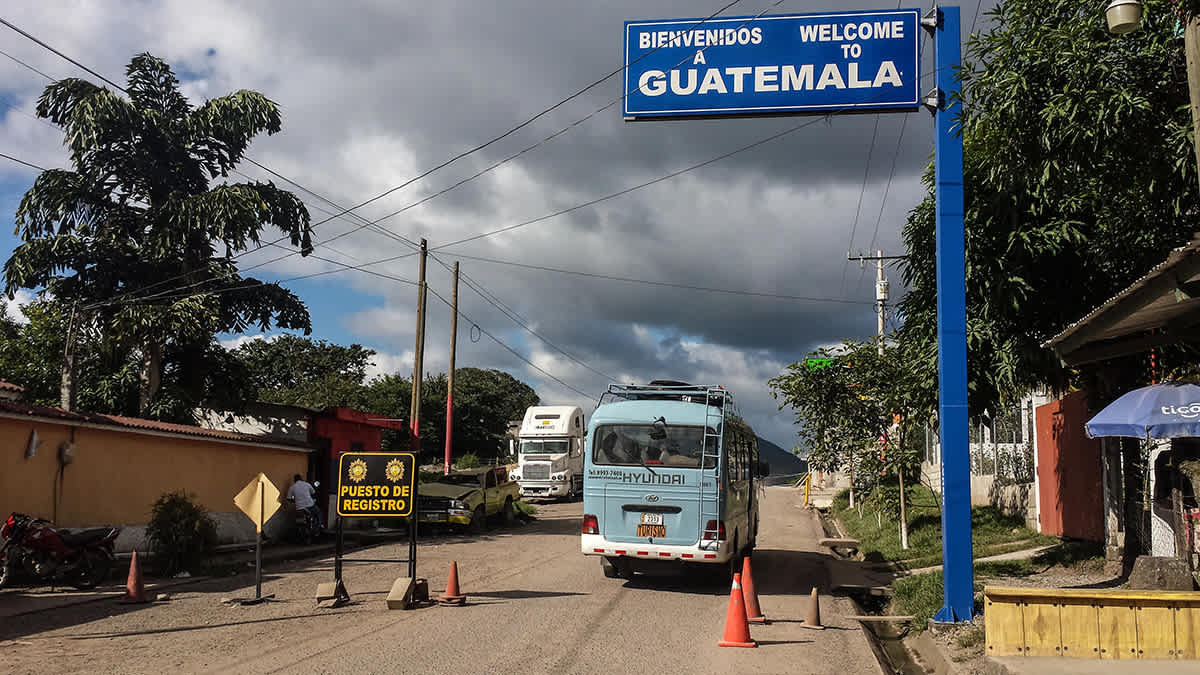
Crossing Land Borders
It’s important to note that some embassy websites that state that visas are available “on arrival” are only referring to airport arrivals and not to land border entries. Check the wording carefully and make sure you have the necessary requirements before arriving at any land border.
Also remember that you are exiting one country and entering another. This normally means it’s at least a two step process: get an exit stamp from country A then proceed to country B (sometimes across a no-man’s land between the two official border posts) to get your entry stamp.
Entry stamps are some sort of official stamp/seal with the date and sometimes with the passport control officers signature or initials. The stamp is usually placed on top of, or next to the visa. The stamp validates your visa and (in some cases) starts the validity period you are allowed to remain in the country.
(Note – be careful with photography and video at border areas. Follow all signs and instructions and don’t do anything that might reduce your chances of being allowed into the country.)
>>Related blog: Border Crossings in Central America
Other Permits Required
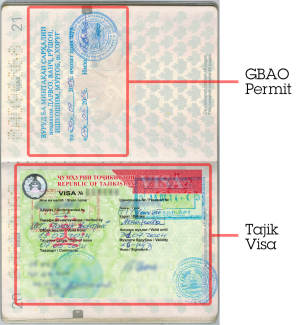 Let’s say you are planning a cycling trip in the Pamir Mountains of Tajikistan. You jumped through all the hoops and you got your visa. Great! You are loving your cycling experience and you reach the Pamir region only to get to another regional checkpoint where you are asked for your GBAO permit. You have no idea what that is, and they won’t let you continue without it. These sort of surprises can quickly ruin a cycling holiday.
Let’s say you are planning a cycling trip in the Pamir Mountains of Tajikistan. You jumped through all the hoops and you got your visa. Great! You are loving your cycling experience and you reach the Pamir region only to get to another regional checkpoint where you are asked for your GBAO permit. You have no idea what that is, and they won’t let you continue without it. These sort of surprises can quickly ruin a cycling holiday.
Always double check on the embassy’s website to ensure there are no regional permits, vaccination certificates, activity permits or other further permissions or payments required in advance.
Health Checks
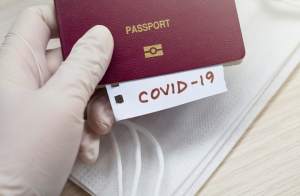 Vaccination certificates (like those for Yellow Fever) are sometimes required in order to enter a country. Even with a valid visa, you may be denied entry if you don’t have a certificate showing that you have been vaccinated or showing that you are not arriving from a country known to have high cases of Yellow Fever (for example).
Vaccination certificates (like those for Yellow Fever) are sometimes required in order to enter a country. Even with a valid visa, you may be denied entry if you don’t have a certificate showing that you have been vaccinated or showing that you are not arriving from a country known to have high cases of Yellow Fever (for example).
TDA suggests that you check the entry requirements for any country you are travelling to.. or better yet, ask your family doctor or local travel medical clinic so that they can recommend vaccines and medications.
Traveling internationally during the Covid-19 pandemic may require proof of a recent negative Covid-19 test. Eventually you might be required to show some sort of immunity passport and/or proof of vaccination ?.
Once you arrive, every border crossing or airport is a little different. In the post-Covid-19 world, there are likely going to be temperature checks, health questionnaires, contact tracing apps you will be required to download, and/or requirements for further in-country testing.
How to Prepare
An 8 part series to get you ready for your first TDA tour. Click here to read more.
HOW TO PREPARE: An 8 part series to get you ready for your first TDA tour. Click here to read more.
Traveling with your bicycle to join a tour in another country may feel daunting at first. We want to spend some time reassuring you that this journey typically goes very smoothly– especially if you plan ahead and follow the advice below.
People often wonder if their bicycle will get lost or damaged in transit or how they’ll move two bags and a bike box through the airport. In this blog, we demystify the process and help you feel assured that it is very doable– with the one day of transiting rewarded by weeks or months of cycling adventures on the bicycle you love and know best.
First, Pack it Up Right
The first step is to pack your bike properly so that when it’s being moved around by those gentle and considerate baggage handlers ( 🙄 ) you don’t have to worry knowing your bike is ready for a rough ride, if necessary (all joking aside, the vast majority of the bike boxes are treated with care and arrive in excellent condition). If you haven’t already, start by reading our blog on packing your bike which includes a very thorough how-to video.
Travelling with a Bike in 3 Steps
Once that is done, then we break the rest of the journey down into 3 parts:
- Booking a Flight and Getting to the Airport
- Checking In and While In Transit
- When You Land and Finding a Taxi
1. Booking a Flight and Getting to the Airport
 There are a lot of things to consider when booking a flight when you are taking a bike along. Different airlines have different fees for bringing your bike with you. In most cases it is considered ‘oversized checked baggage.’ You might have to pay because its over-sized, overweight or both. On some airlines the bike box is the same fee as any other piece of luggage. Depending on how many pieces you have, you might be paying for an extra bag anyways (an experienced cyclist for one of our tours can fit everything in one duffel bag and one bike box but those with a bit more bulk might need two duffel bags plus the bike box).
There are a lot of things to consider when booking a flight when you are taking a bike along. Different airlines have different fees for bringing your bike with you. In most cases it is considered ‘oversized checked baggage.’ You might have to pay because its over-sized, overweight or both. On some airlines the bike box is the same fee as any other piece of luggage. Depending on how many pieces you have, you might be paying for an extra bag anyways (an experienced cyclist for one of our tours can fit everything in one duffel bag and one bike box but those with a bit more bulk might need two duffel bags plus the bike box).
Consider the overall cost of your ticket including the charge to bring the bike. This will mean reviewing each airline’s baggage rules and fees. One airline might be a few hundred dollars cheaper, but with the fees for your bike, it ends up to be more in the end.
Another important consideration at anytime, and especially when flying with your bicycle, is how many connections do you need to make on your way to the final destination. Typically the fewer connecting flights, the better. This reduces the chances of damaged or lost baggage.
Also – does your ticket include more than one airline? You might have a ticket that pieces together a route using two different carriers (eg Toronto to London Heathrow on British Airways then London to Nairobi on Kenyan Airways). If that’s the case you need to check if you will need to pay twice for the bike box – once to each airline.
Getting to the Airport
Once you have your flight ticket, we suggest booking an airport taxi in advance. Make sure to tell them you have a bicycle in a box plus other luggage so they send an appropriated sized taxi.
Schedule the taxi considering traffic, and extra time needed to deal with your oversize baggage and any potential delays that might cause. Airlines normally ask you to arrive three hours in advance for an international flight, so I would stick with that or even consider arriving earlier. Once you are finished checking in, it gives you more time to have a drink or some food and relax before the flight.
2. Checking In and While In Transit
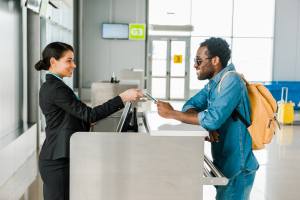 You should be able to check in online 24 hours before your flight. At the same time you should be able to pay your baggage charges, including your bike charges. Many airlines offer a discount if paid in advance and, if nothing else, it will save you the extra headaches at the airport.
You should be able to check in online 24 hours before your flight. At the same time you should be able to pay your baggage charges, including your bike charges. Many airlines offer a discount if paid in advance and, if nothing else, it will save you the extra headaches at the airport.
Check Your Bags to the Final Destination
Confirm with the airline whether the bike will be checked all the way through to your final destination. This might seem obvious but sometimes if you have to go through customs before transferring to a domestic flight, they will make you recheck your luggage, or in some cases for security reasons they require luggage to be offloaded, re-scanned, and rechecked before boarding your connecting flight.
Oversize Baggage Area
At many airports, once you are checked in, you are asked to take your packed bicycle to an over-sized luggage area for security check and for it to be sent through for loading onto the aircraft. There is a chance that instead of putting your bike box through an x-ray, the security officials will want to open it up and look through it. They might even ask you to remove it from the box (a good reason to have it packed properly with as few loose items as possible). At some airports, this step is necessary as the oversize security scanners are not large enough to scan your bike box.
This is another reason to give yourself extra time and be sure to bring packing tape with you so you can reseal the box afterward.
Save Yourself the Hassle

Plan ahead so that between the front door of your house, and the start of your cycling adventure on the other side of the ocean there is as little lugging of the bags as possible. You will pick them up to put them in the taxi at your house, then onto a baggage cart, then onto the baggage belt and that’s really it. On the other end, you should arrange it again so it immediately goes on a baggage cart and straight into the taxi.
Porters, the taxi driver and hotel staff will fill in the other gaps (and they should be tipped accordingly) but essentially you want to make this as seamless and stress free as possible by planning ahead and having change or a credit card ready for luggage carts, and small bills for tipping those who assist with your bags and bike.
3. When You Land and Finding a Taxi
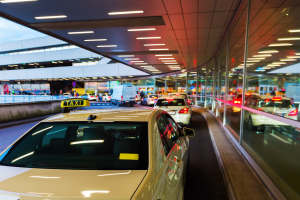 Once you arrive, find your way to the baggage claim area. Your bike might come on a separate belt or at an over-sized luggage area. Ask around if you are unsure.
Once you arrive, find your way to the baggage claim area. Your bike might come on a separate belt or at an over-sized luggage area. Ask around if you are unsure.
As soon as you get the bike box, check it carefully for damage. Are the bottom corners crushed? Are the hand holds ripped out? Is the top open? If you see any significant damage, take a picture from a few angles, then open the box and do a quick inspection of the bike. If you notice anything broken or damaged report it at the baggage desk. But if you only notice something later on when you are re-assembling the bike, it’s also not too late to report the damage and seek compensation from the airline. Make sure to keep all your boarding passes, baggage tags and take photos of the damage.
Lost in Transit
You wait and wait and your bike doesn’t show up. Oh no! But don’t panic. This does happen from time to time. If the airline says your bike is delayed, give them the address of where you are staying, and they will need to deliver it to you when it arrives. Almost always the bike was loaded on the next available flight and it’ll be delivered before you have time to panic too much. Sometimes later the same day, but more often the next day. This is a good reason to plan your schedule so that you have a day or two (we recommend two days on our tours) in the city of your arrival before you set out on the cycling adventure.
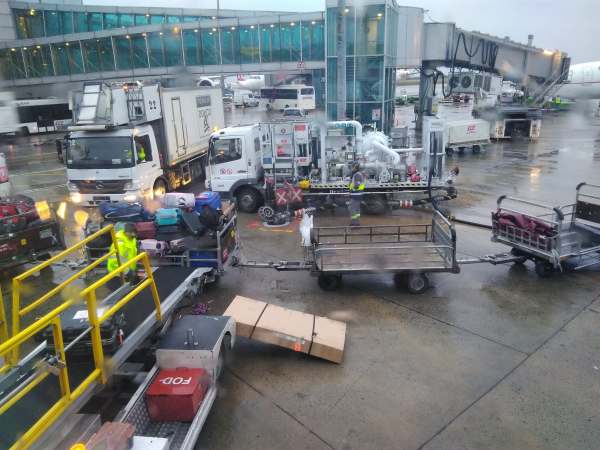
Get the phone number of the baggage desk and/or the airline so you can call them directly to check when the bike will arrive. They will usually ask you to complete a lost baggage form. If the airline says it’s delayed, but later on says that it is lost, contact your travel insurance (if you have baggage coverage) though this is extremely rare. In fact, in almost 20 years at TDA, it has only happened on a couple of occasions.
Pre-Arranged Shuttle
After a long flight we are all a little groggy and not as sharp as we normally are. This is a great reason to arrange in advance for a shuttle or taxi to be waiting for you. There is nothing like the joy and relief of seeing a friendly person holding up a sign with your name on it in a new place where nothing at first seems familiar.
Most cities all over the world have shuttle or taxi services that can be booked in advance – usually using online reservation platforms. In some cases, the hotel you are staying at might have a free shuttle or can arrange it for you at a fee or at the very least can recommend the best options available from the airport.
Remember that anything you arrange in advance will be more expensive than simply flagging down a taxi when you arrive – you are paying extra for the convenience and for a worry-free arrival. But remember to ask for an oversized van or taxi and carry a booking confirmation or receipt with you.
Re-assembling your Bike
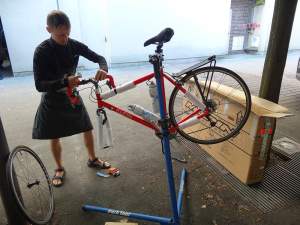 On a TDA tour our tour mechanic will help you re-assemble your bike and readjust the gears as necessary. We also ensure that you will have a bike box at the end of your ride and our mechanic will again be there to help get it ready for the flight back home.
On a TDA tour our tour mechanic will help you re-assemble your bike and readjust the gears as necessary. We also ensure that you will have a bike box at the end of your ride and our mechanic will again be there to help get it ready for the flight back home.
If traveling alone, most hotels will allow you to take the box into your room and you can assemble it there. Otherwise ask them if its possible to use the parking garage or any unused conference rooms and service areas where you could assemble your bike and store it safely.
How to Prepare
An 8 part series to get you ready for your first TDA tour. Click here to read more.
Hi Everyone! We hope you are all well.
During these extraordinary times, when many of our bicycle tours are on hold or have been rescheduled, we are switching gears and looking for your help in producing some inspiring blog posts, video interviews and social media discussions. I am putting out a call for submissions for a brand new initiative – TDA Community News.
We want to strengthen our global cycling community and use your talents and knowledge to entertain, inform, uplift and educate each other. We have established a diverse following with over 17,000 newsletter subscribers and and well over 20,000 followers on one or more of our social media platforms.
This is an appeal for your best stories, your most stunning photos, your most entertaining video commentary and your weirdest cycling or travel memories. The content doesn’t even have to be exclusively about cycling. Would you like to help out and use this unique situation to our advantage?
How to Contribute
1. Post photos or videos to Instagram
You can post to your account using the hashtag #tdacommunitynews. Share the back story of your favourite photo or video and tell us why it was so significant to you. We will be sharing as many of these as we can on our Stories feed.
You can also send us the content. Each week we will choose a selection to post to @tdacycling. For example, here is my post last week where I recalled my first experience being a Tour Leader for our cycle trips across Europe in 2005…
View this post on Instagram
2. Send us your videos and blogs
We’d love to share your thoughts and feelings with our audience. Send us your ideas and commentary with a selfie video or blog post. Show us what life is like for you during the current crisis. You can upload them here (recommended for video), or simply email them to us. We will review all the content you send and plan to post as many as we can, either on our website or on social media.
Here is a great example that TDA alumni Jessica shared with us from New York City. It is an example of how some residents are trying to uplift each other during this difficult time. TDA Founder Henry Gold also reflected on the current situation and tried to put it in perspective, recalling the much harsher struggles of his parents during World War Two. And Operations Manager Miles MacDonald shared his memories of leading tours over the previous years.
3. Set up a time for a Skype video interview
 We have so many interesting people who follow us, both past riders and aspiring participants. They would love to hear stories and insights from other cyclists and travellers – especially these days. Why not share some of your experiences with our audience? I would love to do an interview with you.
We have so many interesting people who follow us, both past riders and aspiring participants. They would love to hear stories and insights from other cyclists and travellers – especially these days. Why not share some of your experiences with our audience? I would love to do an interview with you.
We will send you a few short questions in advance and give you time to consider your answers. The Skype interview shouldn’t take more than 15-20 minutes of your time. We’ll ask a little about you and how you are adjusting to the current situation. We might also have you recall a favourite memory from a past trip – be it cycling or otherwise.
Thanks for contributing to #tdacommunitynews! We are looking forward to your submissions.
]]>What comes to mind when you think of cycling in India? Is it crazy traffic on busy urban streets? Or is it quiet country roads filled with cows, their owners wearing bright turbans and wide smiles?
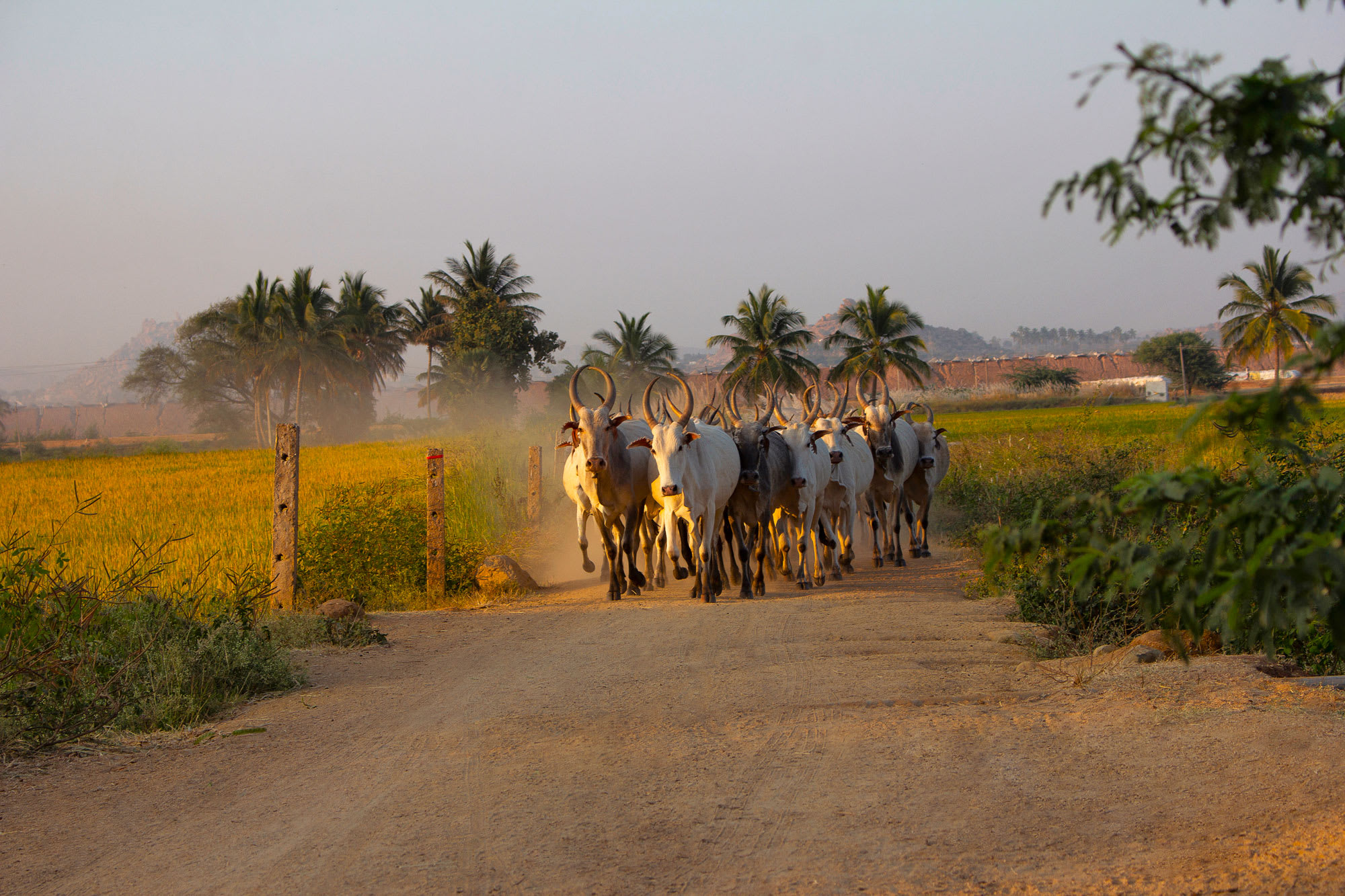
In our experience, India offers a bit of both…and so much more. It is a hugely diverse and confounding place. We hope these videos will show you that India is certainly never boring for the first time traveller and definitely not worth dismissing as a cycle touring destination. There is traffic, but we avoid it where we can, and where we can’t, the riders adapt and learn to quite literally ‘go with the flow’ alongside local cyclists, animal carts, cars, goats and motorbikes.
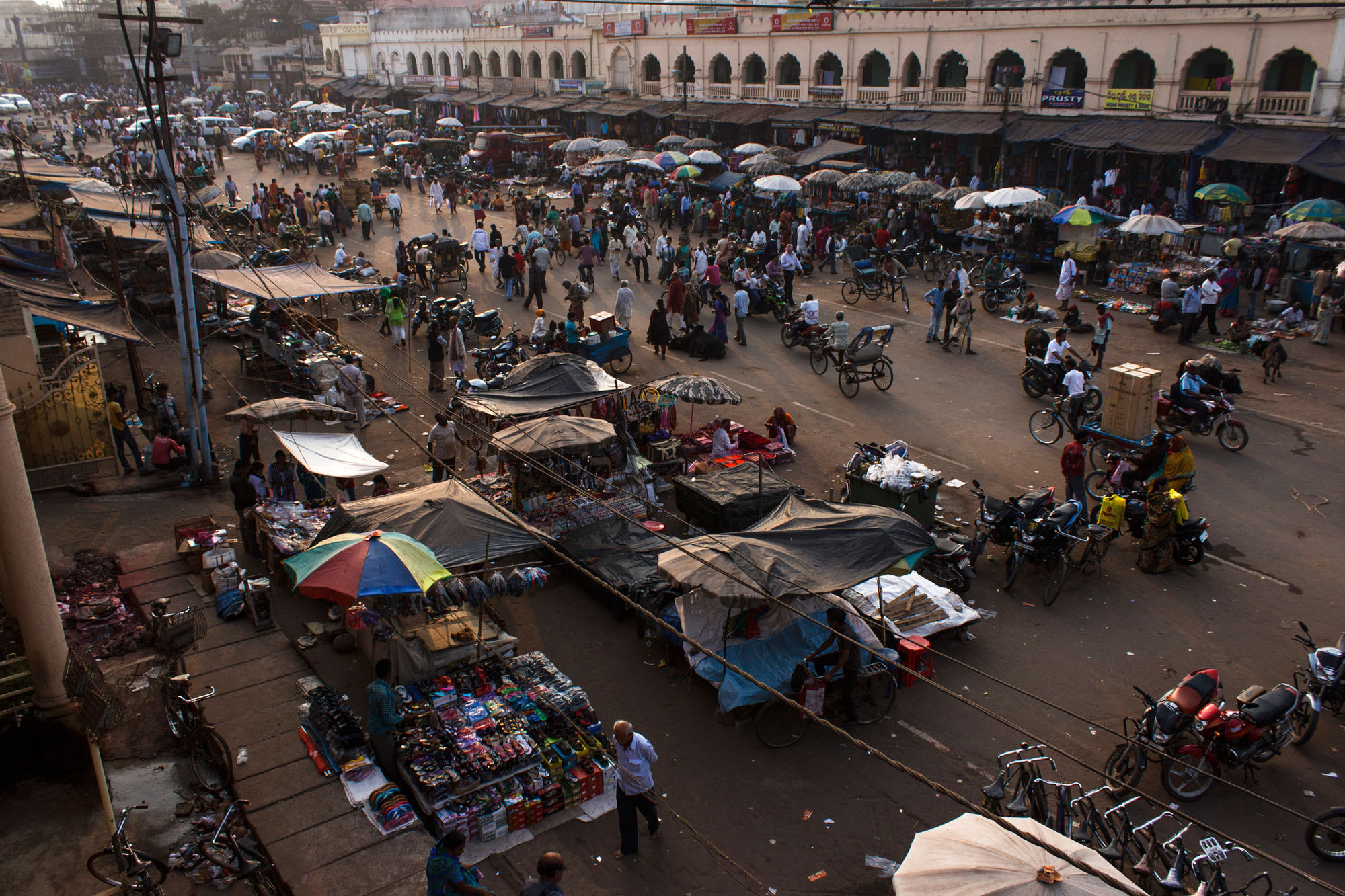
In this video series (covering the three sections of the Hippie Trail cycling tour), filmmaker Nirmika Athalye takes us along for a ride with the cyclists on the 2019 edition of the tour. In the very opening sequence, we hear one of the cycling participants say “the thing with India is that what people are eating and what people are doing… I don’t always recognize.” The beauty of working with Nirmika is that, as an emerging Indian videographer, she has the advantage of recognizing the food and understanding the culture on a deeper level than our participants. She also proved quite worthy of interpreting the traveller’s experience and allowing the participants themselves to share those moments on camera.
Enjoy the show and please leave us a comment with your thoughts and feedback below or on our YouTube page.
Part 1 – New Delhi to Udaipur
In 2019 this section, known as the Royal Rajasthan Ride, started in New Delhi and soon entered the state of Rajasthan with its vibrant desert cultures and deep history.
(Note – that for the 2021 edition of the Hippie Trail, the Royal Rajasthan Ride will begin in Agra in order to avoid some of the worst traffic between Delhi and Agra)
Part 2 – Udaipur to Mumbai
On the section we call Temple Caves & City Lights, cyclists pedalling through the lesser-travelled states of Madhya Pradesh and Maharashtra faced challenging climbs, but were treated to the awe-inspiring temple sites at Ajanta and Ellora. They continued to the coast of the Arabian Sea and enjoyed our brilliant, traffic-free entry into Mumbai by ferry.
Part 3 – Mumbai to Goa
South of Mumbai, on the section known as the Konkan Coast, the riders tackled a hilly coastline with spectacular views and rural fishing villages. They reached the end of the Hippie Trail in Goa – once an enclave of ’60’s era hippie travellers.
A special thanks to our videographer Nirmika Athalye for her great effort and determination to film, interview, and edit this 3-part series and to the cycling participants who took time after their rides to sit down with Nirmika and share their thoughts and feelings.
RELATED
TOUR
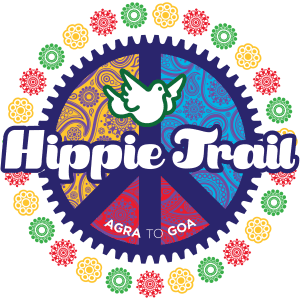
Hippie Trail
"Turn on, tune in, Drop out" It was 1967 - the Summer of Love - and Timothy Leary had this advice for his young followers at the Human Be-In taking...
HOW TO PREPARE: An 8 part series to get you ready for your first TDA tour. Click here to read more.
How do you train for a long distance cycling tour? Can you actually train for a tour that spans a continent and lasts several months? Can you ride yourself into shape during the first week of an expedition?
These are some of the questions that might come to mind for someone considering signing up for one of our tours. We always tell our participants to train for their tour, but we sometimes struggle to suggest just how to train, and for how long. So we reached out to some of our seasoned veterans – cyclists who have participated in all different levels of our tours – from Touring to Adventure, and Expedition level tours. Some have done multiple tours and are registered for tours coming up later this year.
Covering everything from core workouts, to base training, to loading your bike with heavy phone books (I’m not kidding!), these cyclists might just have the right training strategy that will work for you.
This is a rather long and detailed post, so use the links here to skip to the tips you are most interested in.
- Keep Fit Year-Round
- Got an Old Phone Book? Adding Weight to Your Bike
- 20 Minutes, 4 Days a Week
- Yoga as Part of Any Training Plan
- Start with a Base and Ride Yourself into Shape
- Start with a Base and Build Towards Specificity
- It’s Never too Soon to Start, but Don’t Overtrain
- Core Strength, Mental Strength
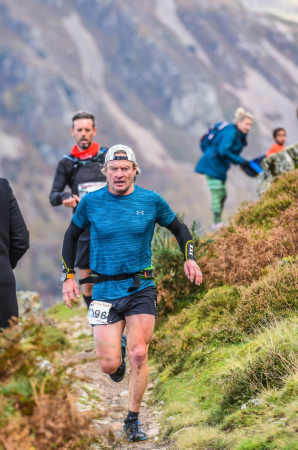
1. Keep Fit Year-round
2016 Tour d’Afrique participant Paul says “I have raced in different sports all my life. From alpine skiing to long distance triathlon and cycling. I just love racing over training. So I keep fit all year round.”
By making fitness a lifestyle, he was able to transition quite comfortably to the daily distances and demands of our flagship tour. When fitness is not such a major hurdle, it allows participants to focus on the other, equally important factors – eating properly and adjusting to a new diet, living the camping life, and adapting to the temperatures, the cultures, and the lifestyle of cycle touring.
Similarly Geoff who recently completed The Odyssey from Athens to Amsterdam (one of our Touring level rides) says “My ultimate training tip is to make training a regular occurrence; a habit.”
As the tour approaches, however, he does increase the training. “I like to be well conditioned and fit before I start a major event or race. This means a 3 to 4-month prep. Over that period I’ll increase volume and intensity. Cycling volume would peak at around 300 km a week. I know this doesn’t suit everyone. My training (my life) always includes riding, running and swimming.”
One final tip from Paul “I would most definitely use the same bike seat / saddle and riding position for all my bike’s, off road or on road or on your turbo trainer.”
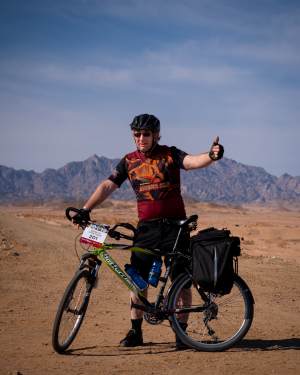
2. Got An Old Phone Book? Add Some Weight When Training
“Find a long hill, load [your] bike with lots of phone books, cycle in 25-40 degree weather. Do at least three hours every week!”
Leonard’s more unorthodox approach to training helped him successfully complete the first section of the Tour d’Afrique in 2019. He’s gearing up for West Africa en Vélo later this year so no doubt his phone books are proving useful once again.
Leonard goes on to say “I usually start about three months before I go on a trip as I usually do a 30 km ride at least once a week with said phone books on front and rear panniers.” This mimics the weight when he is solo touring, and gives him an advantage for tours like ours, where what you carry on your bike is minimal.
“Just to add I have three different rides of approximately 35 km each one [one hilly, one flat, and one mixed]. I do rides every week of the year no matter the weather.”
Matt Caretti (who was the race winner of the Tour d’Afrique in 2006 when it was a timed event) also enjoys the less expected training method. “My philosophy has always been to make training harder than the tour.”
He goes on to say “In preparing for the 2006 Tour d’Afrique, I cycled across the US (California to North Carolina) with about 30 pounds of gear in my panniers and dry bag. I was not shy about what I carried, actually wanting more weight as part of the training. So in addition to building lots of base miles (endurance), the extra weight helped to build strength. As well, I mimicked the length of each stage, varying my daily miles between 80 and 100, and taking a rest day once every 7-10 days… I wanted the Tour d’Afrique to be a pleasurable experience rather than a sufferfest. Yet no matter how hard we train, we will suffer at times. We get sick, dehydrated, fatigued, bored, stressed and on and on. BUT having already exposed our bodies and minds to such hardships prepares us for the challenges ahead. ”
3. 20 Minutes, 4 Days A Week

Mary, who has done the Pub Ride and who is soon to join the Journey to the East, also happens to be a fitness instructor. “I focus more on the cross training four months before a trip, starting out slow and working up.” She says stretching, balance and weight training are essential.
“Stretches can be simple as long as you push yourself to your edge. Balancing can be done with yoga or on your bike. Try riding with one or no hands and pedalling single legged. Weight training – remember you don’t need to lift heavy weights. Do push-ups several times a day. It’s not so much the number of reps as much as the frequency.”
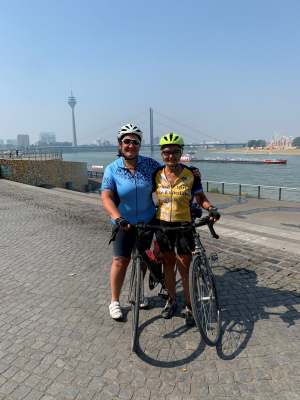
4. Yoga As Part Of Any Training Plan
Lisa did the Orient Express and, like Mary, thinks yoga is great.
“I would add yoga to any training routine – it helps with strength and flexibility and can go a long way to reducing muscle aches – especially in the lower back. I have been using the Sufferfest yoga videos every day for several months now – they are specifically targeted at cyclists and quite short (15 minutes). I definitely notice the difference when I am on the bike!”
“You should notice a difference after a month or so if you are doing regular yoga 3 days a week or more. I have been doing 15 minutes a day 5-6 days a week and it definitely helps a lot.”
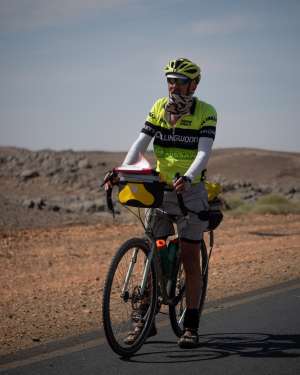
5. Start With A Base And Ride Yourself Into Shape
“Begin the tour in decent physical condition and you’ll ride yourself into tour shape”
Tom should know. He has crossed South America and Africa with us and will tackle the Silk Route in 2021. These are some of our most challenging tours and so we would reiterate the importance of building up that base fitness. The more you prepare your body physically the more you will enjoy the tour.
I asked Tom what his base training entails. “Since, being retired, I have the time to recreate, ski, golf, hockey and the YMCA where I hang out doing yoga, spinning and light weights I’m in reasonably good shape. Maybe 3 months before the tour I’ll step it up and then shut it down a week before the start.”
So once you have the base training done and the tour starts… “Consider the riding as aerobic exercise, day after day, legs and lungs and mental strength. You are capable of much more than you thought possible. Make sure you’re comfortable with your saddle, you’ll be spending 6 plus hours on it every day.”
Tom’s last tip? “I highly recommend butt cream, and a good granny gear.” Spoken like a veteran TDAer indeed.
6. Start With A Base And Build Towards Specificity
 “Start training your ‘base fitness’ when you are several months out and then gradually shift to workouts focused on ‘specificity’ the closer and closer you get to your tour”
“Start training your ‘base fitness’ when you are several months out and then gradually shift to workouts focused on ‘specificity’ the closer and closer you get to your tour”
Loraine completed the 2019 Tour d’Afrique and had some great details to share on her strategy. “Base fitness training is essentially performing a variety of cardio-based exercises (could be biking, swimming, trail running, rowing, cross-country skiing, etc.) at least 3 times a week consistently…They could be as short as 30 minutes sessions. But I’ve found that consistently doing the workouts over time (I use 3 times a week as the minimum) is the biggest factor in building base fitness. If you are a bike commuter, you’ve already nailed base fitness training.”
“As you get closer and closer to your event, your workouts need to become more specific. That is, you are training the muscles and movements you are going to use on the tour. This means you are riding your bike more and more, and for longer and longer distances instead of doing the other workouts. Try to get on the bike consistently for even short 30 minute sessions at least 3 times per week. The most important workout in this period is doing a long ride once a week. You should set your goal to ride the bike for a set number of hours rather than worrying about the distance or speed you actually went during the ride. Spin classes are a great way to get in more consistent riding time, as is getting a bike trainer so you can use your own bike indoors.”
And for those who wait too long and don’t have months and months to train… “If you…are only a couple weeks out, then you have to skip the base and do only specific workouts. Essentially, ride your bike a lot – as often as possible, as hard as possible, and in as many conditions as possible.”
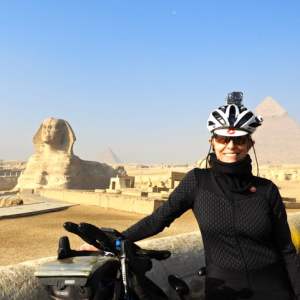
7. It’s Never Too Soon To Start, But Don’t Overtrain
Karen has done both Expedition and Adventure level tours and has this to say “it’s never too soon to begin. It’s possible to train while on tour, but I don’t recommend it. I would say you need a good few months, 3-6 to see results. It depends how often and how hard you’re training, what condition you were in to start with [and] how old you are.”
BUT, don’t overtrain. “Overtraining is a real issue. I’ve learned to vary my training efforts – mix up climbing days with intervals, active recovery with max efforts. I like Zwift for that reason – it has training plans that keep me honest.” And don’t forget recovery “If you don’t eat and drink the right things at the right times, stretch or [use a] foam roller, and get enough sleep, you’ll find progress frustratingly slow.” Check out her blog here.
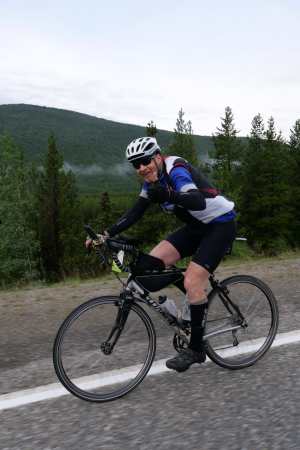
8. Core Strength, Mental Strength
Chris has done over 10 TDA tours and is the first to complete the 7 Epics. His philosophy? “Tour cycling is much less challenging and more fun with a strong core, so join a health club, gym, or simply begin to perform core strengthening exercises. Things like sit-ups, push-ups, and planks are great core workouts.”
Chris goes on to say “eat a well balanced nutrient rich diet, cut out the bad stuff. Better going into a tour a little on the lean side as opposed to overweight.”
Lastly, remember that even if you took everyone’s advice and start the tour in really great physical shape, it doesn’t necessarily mean you are prepared mentally.
“Just as important to train your mind as your body. The mind must be trained and the body will follow. Make a plan as to how to deal with things when they go wrong, such as injuries, bike mechanical malfunction.”
I hope you found this helpful. Please add your own training tips for long distance cycling below in the comments. I certainly learned a few things.
Can you ride yourself into shape on one of our tours? Yes. Is it better to get serious about training 3-6 months before the tour begins? Absolutely. Make it a part of your routine and see what progress you can make. Grab your yoga mat, or your phone books and put in the time to make your TDA tour experience all the more pleasurable.
A special thanks to Paul, Geoff, Leonard, Matt, Mary, Lisa, Tom, Loraine, Karen and Chris for contributing these great tips.
How to Prepare
An 8 part series to get you ready for your first TDA tour. Click here to read more.
Have you heard about the cycling tours we run? Have you seen our website maps covered with long squiggly routes stretching across continents? Are you struggling to figure out what the hell it’s like to do this sort of thing?
The process of going from TDA-curious to TDA-committed can be a long and difficult one. It takes some people literally years and years to come to that point. How do you decide to take on a really big challenge? How does a normal person pause their life for 4 or 5 months?
The answers are varied and each person who has done one of our tours will have their own unique take on it. Perhaps the following videos will get you a little closer to registering for a tour. Or, a least, they might give you a deeper understanding of the people who have done a trip with us. Or, hey, maybe these trips are just not for you. That’s good to know too. If you are curious, however, please take some time and watch these 5 videos.
1. A Day in the Life on our Expedition-level Tours
2. Eating (and Cycling) your way Across Asia
>>For more videos, subscribe to our YouTube channel
3. Making Friends with Other Cyclists
4. NO SUPERHUMANS HERE. These are Tours for Ordinary People
5. Always Some Good Bits Among the Bad
We have been talking a lot lately about the South American Epic. It is our longest tour by number of days but we can’t forget that many people will be signing up for two and three week sections of this 5+ month tour. So for those of you starting or ending your South American Epic in Bogota, you might be planning to spend a bit more time in the country and we have some suggestions for you.
With the peace agreement that was signed three years ago tourism has continued to increase in Colombia. It’s no longer just hotspots and UNESCO world heritage site like Cartagena and San Augustin (which we did feature recently as well) but much more of Colombia’s vast natural environments – some of which were recently occupied by FARC – are now becoming safe and more accessible.
>>RELATED POST: Is Colombia Safe for Cycling?
I was recently invited to see some of these newly opened regions by the Colombian tourism board – ProColombia. While none of these regions are on the route of the South American Epic, I thought I’d share with you what I found in hopes that some of our participants of Undiscovered Country and Coffee & Cocoa would consider checking this out before or after their cycling adventure with us (and even full tour riders who plan to arrive early to Cartagena). Domestic flights can get you quite easily to the regions I discuss below from Cartagena and Bogota and local tour operators (two suggested below) would be happy to create an itinerary for you.
Overflight of Chiribiquete National Park
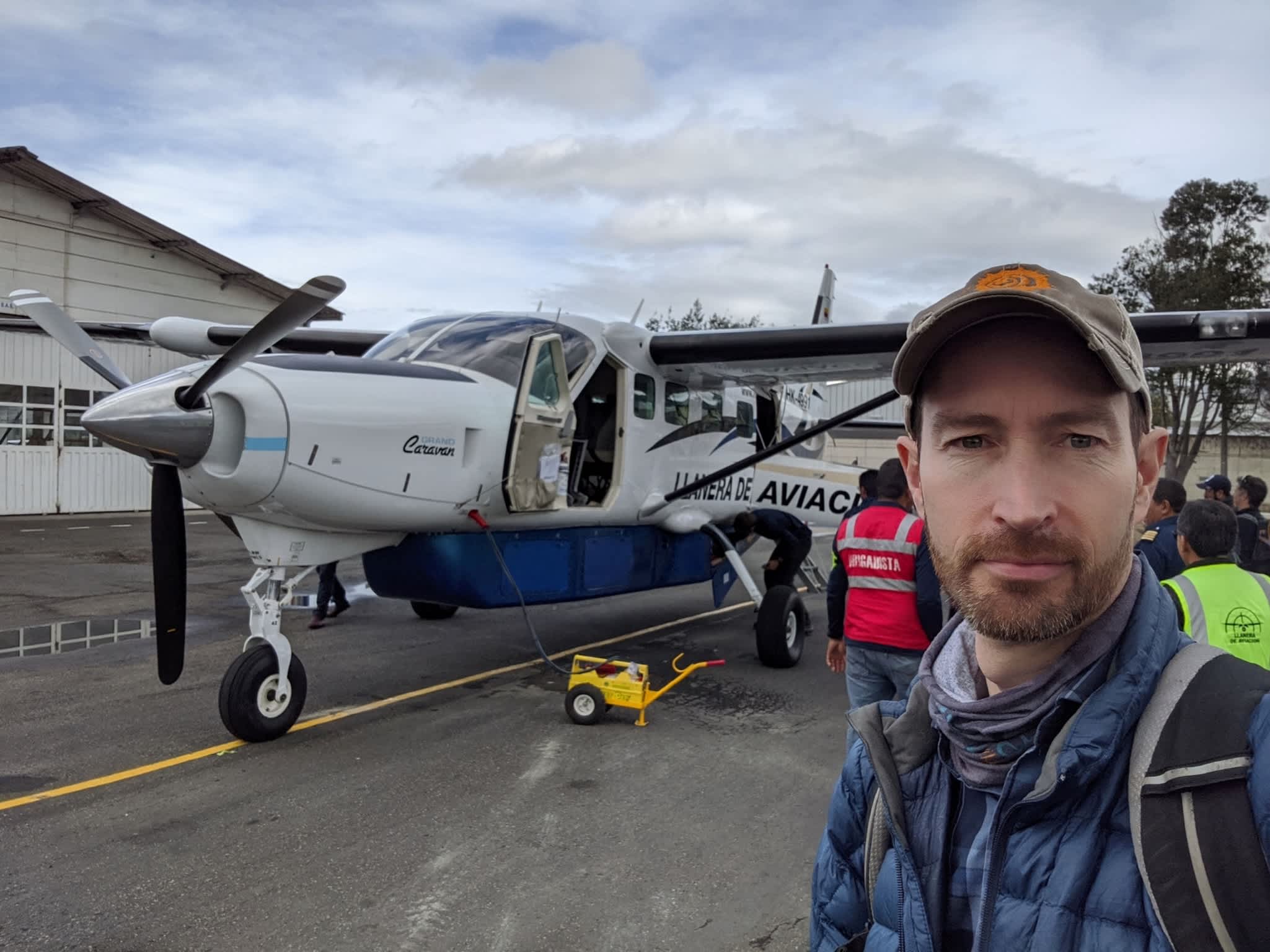
Chiribiquete is the largest national park in Colombia and the largest tropical rainforest national park in the world. It is also unique because most travellers are not allowed to enter the park at all. 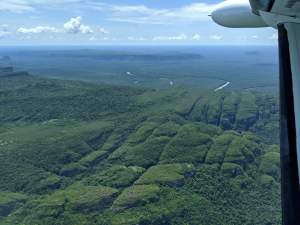 In the past decades, even as FARC guerrillas controlled this region, the government worked with conservationists to expand the park and restrict access to protect tribes within the park who had chosen to remain apart from the modern world. Fascinating stuff – read more about it here.
In the past decades, even as FARC guerrillas controlled this region, the government worked with conservationists to expand the park and restrict access to protect tribes within the park who had chosen to remain apart from the modern world. Fascinating stuff – read more about it here.
So for tourists like us, the way to see it is from the air on overflights organized by local tour operators. The flight gives you an amazing perspective – lush jungle, winding rivers, and dramatic rock formations called Tepui.
Swimming with Pink River Dolphins
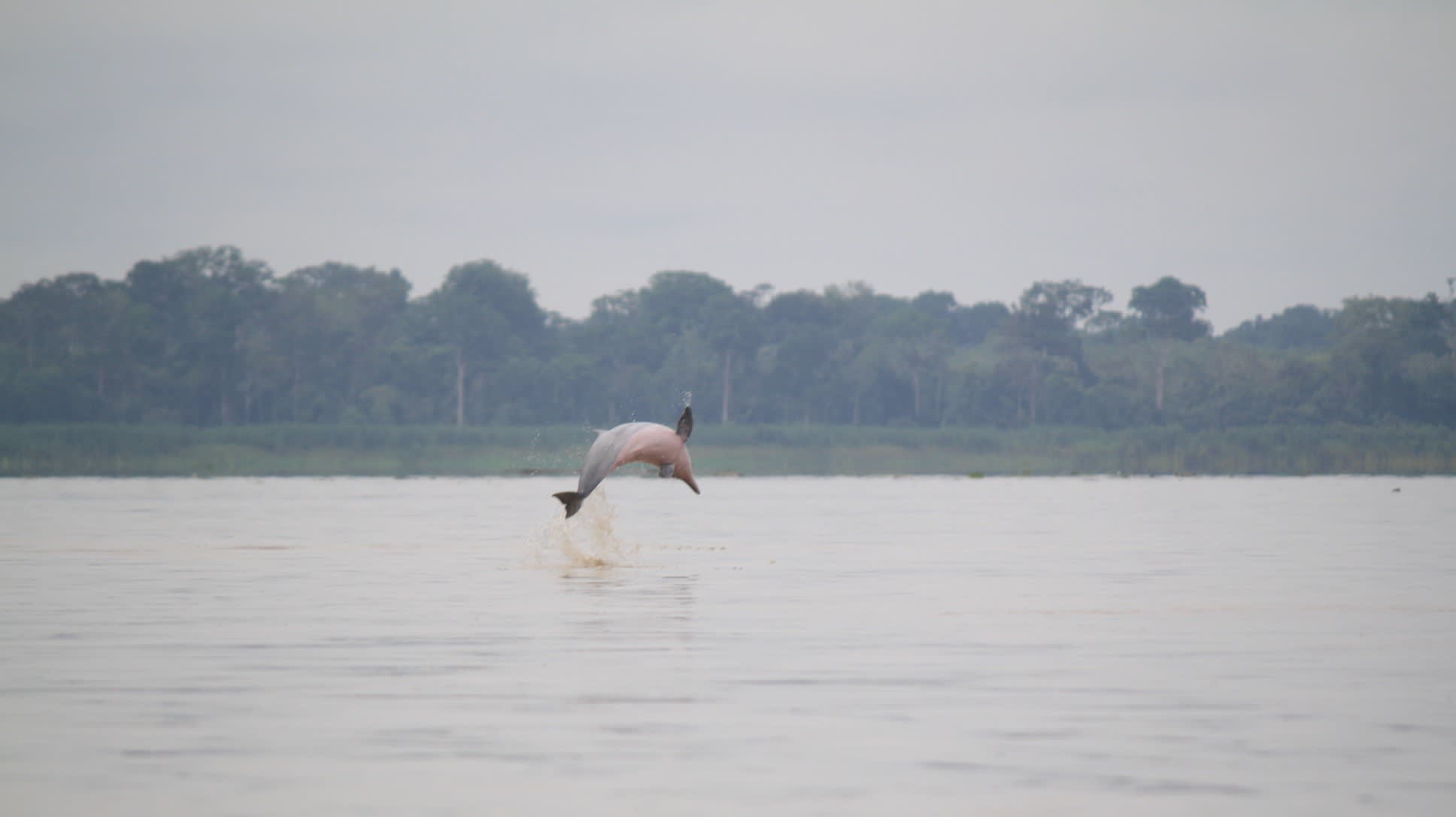
From the town of San Jose del Guaviare we followed the Guaviare River to Damas del Nare – a lake occupied by 8 – 10 river dolphins. Apparently it is rare that these dolphins will stay in one area very long, but this group must like the local cuisine as they have been around for years and it is now a tourist attraction. The operators are careful to limit the number of visits by tourists and warned swimmers to remove sunscreen as not to pollute the water. To be honest these are the ugly cousins of bottle-nosed ocean dwelling dolphins, but its a really curious experience none the less – and a great excuse to explore the rivers, lagoons, and people that live in the area and operate these tours.
Hiking in the Jungle to Puerta de Orion
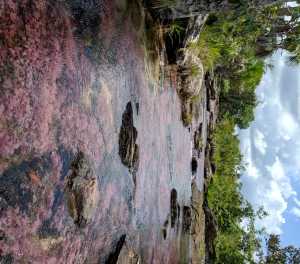 Puerta de Orion (shown in the lead photo of this blog) means ‘Gate of Orion’ and at just the right angle at the right time of the year Orion’s belt is perfectly centred in the hole in the rock and creates a beam of light in the darkness (so they say). But at anytime, taking the stroll through the jungle to reach this point is full of local knowledge shared by local guides on the plant life, and wildlife that inhabit the area (ants that can stitch wounds, plants that react to touch, plants that cure and plants that kill, and much more).
Puerta de Orion (shown in the lead photo of this blog) means ‘Gate of Orion’ and at just the right angle at the right time of the year Orion’s belt is perfectly centred in the hole in the rock and creates a beam of light in the darkness (so they say). But at anytime, taking the stroll through the jungle to reach this point is full of local knowledge shared by local guides on the plant life, and wildlife that inhabit the area (ants that can stitch wounds, plants that react to touch, plants that cure and plants that kill, and much more).
Further alone the trail, we came to Rio La Macarenia with its pink river flowers (macarenas clavijeras). At different times of the year the flowers are different colours. On our walk they were a pale pink growing on the rock bed of the river and bobbing with the water that rushes overtop of them. It was quite lovely. They could be clearly seen through the crystal clear river.
Witnessing Ancient Art on Ruta Rupestre
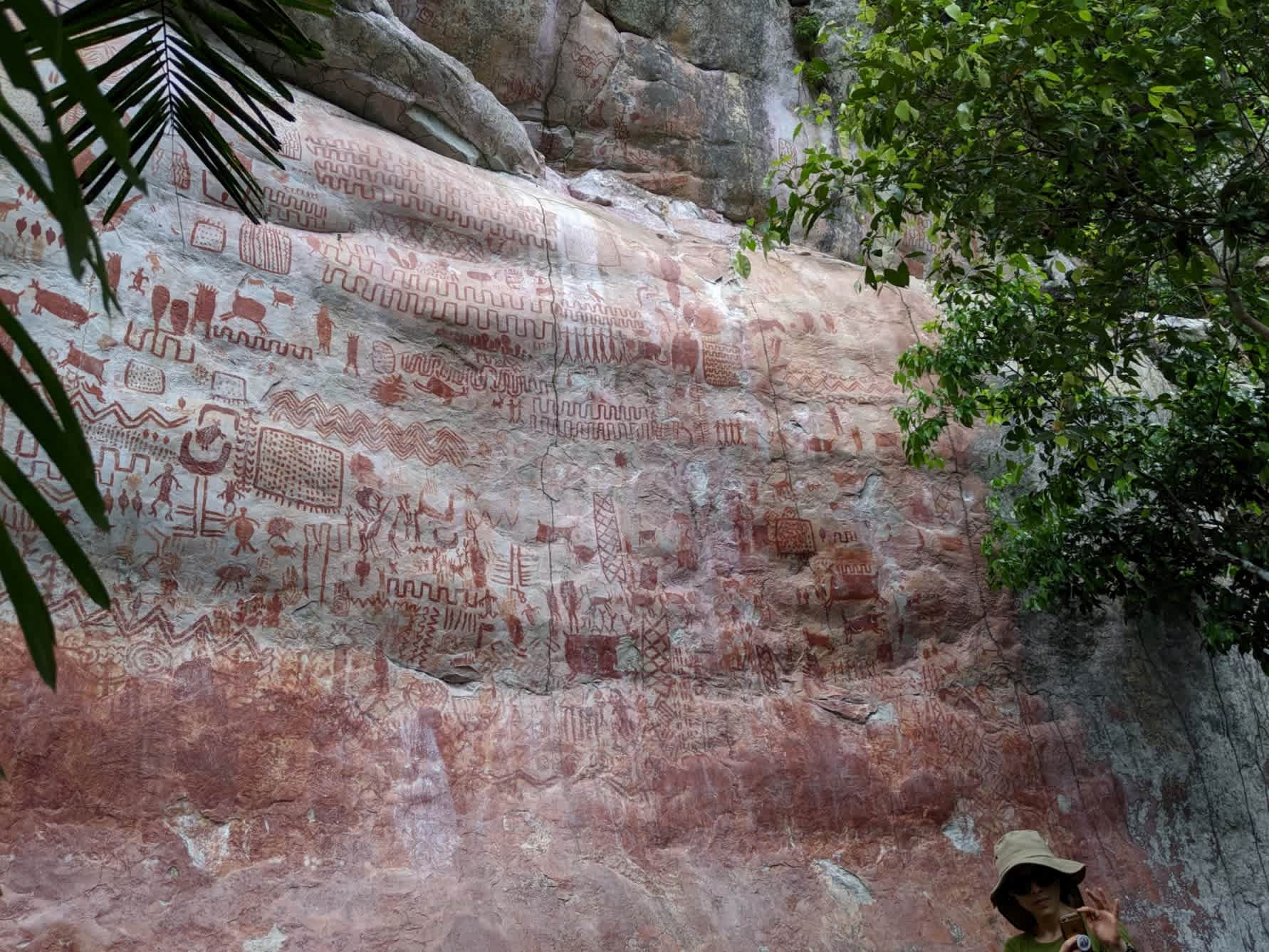
One day we did a 5 km walk uphill in dense jungle to see these incredible rock paintings which are only recently being properly protected, documented and tested to find out exactly how old they are. Even without ancient rock art the scenery was stunning, and the thick foliage, thick air, knotted vines, and green canopy of the jungle made for an eye opening experience for a northern climate dweller like myself.
RELATED
TOUR

South American Epic
This challenging expedition offers you the best opportunity to explore the vastness and diversity of South America by bike. In keeping with the TDA...
Learning What Coca Farmers are Doing Since the Peace Agreement
Probably my favourite part of all the activities we did was meeting Edilson and learning about how he has turned from being part of the illicit cocaine production system, to being a strong anti-drug advocate. Tourism has also been a big part of what people hope will make the peace agreement long lasting. Edilson can now invite people to his farm from all over the world to see what he used to do, what he is doing now, and meet some of his rescued animals like the ones pictured below.
https://www.instagram.com/p/B3Qz-ignD47/
Thanks very much to ProColombia for bringing me to see these fascinating places. Thanks also to Colombia Oculta for the overflight of Chiribiquete and Frontera Travel for all the rest of the experiences on my list above.
]]>When we announced the 2020 Trans-Europa, it included a new route in Spain and a new finishing point at the rock of Gibraltar, making the Trans-Europa a truly cross-continental tour and the longest supported cycling trip in Europe. This just might be the year for you to jump on board.
If you can’t rustle up the three months to cycle it all, here are 5 reasons to consider joining the newest and final section – El Toro.
1. Barcelona
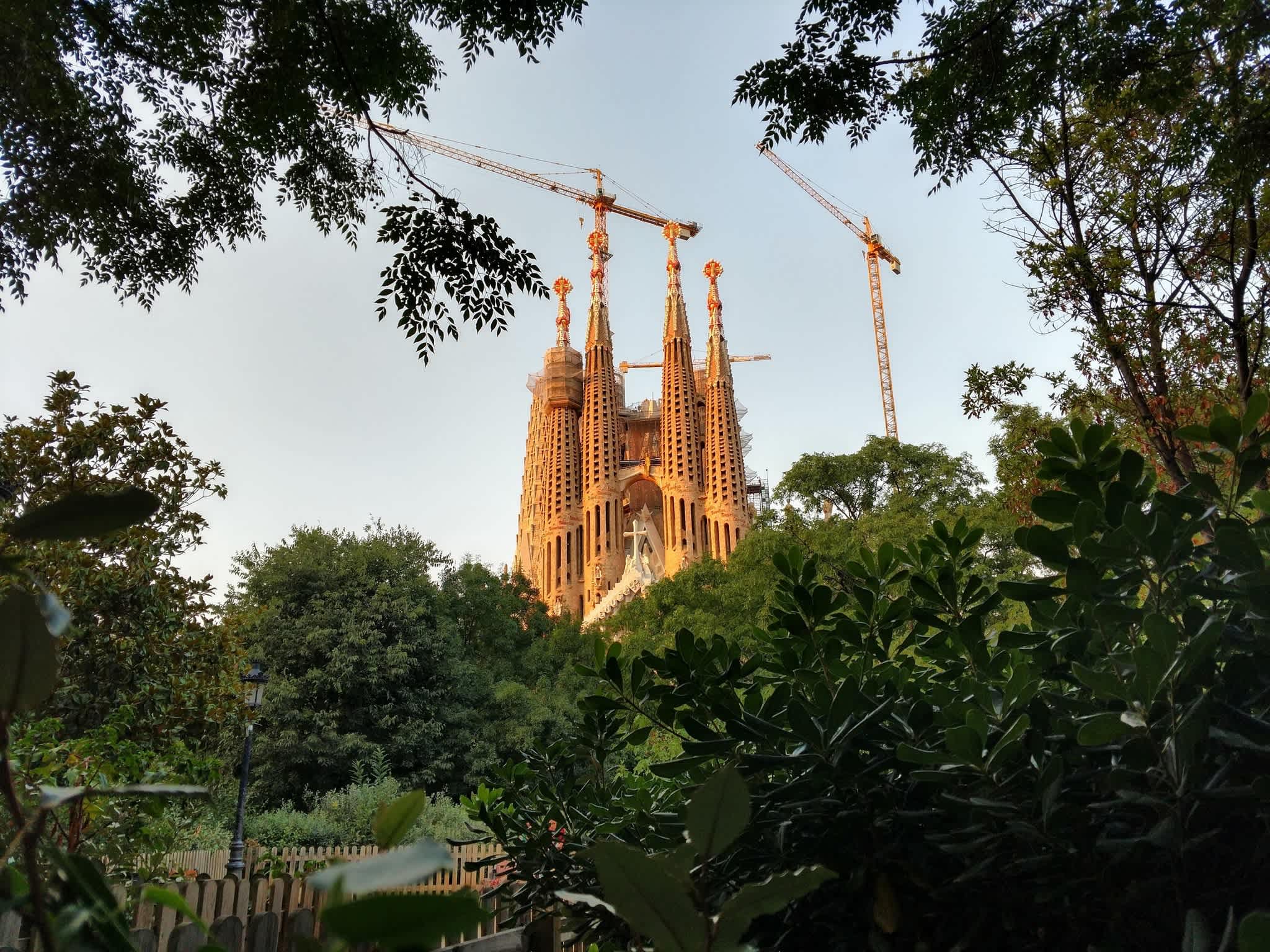
Barcelona makes a great starting point for this amazing new section – beaches, seafood, bars, culture and street life await you. The art of Antoni Gaudi dominates the city and its proud people are more likely to tell you they are Catalonian than Spanish.
“Barcelona is an enchanting seaside city with boundless culture, fabled architecture and a world-class drinking and dining scene.” – Lonely Planet
On my first visit, I was amazed with how walkable the city is and how much it has to offer – great beaches right in the city and amazing museums like the Museo Picasso.
>> Related: 36 Hours in Barcelona: A Cyclist’s Guide
2. Valencia, the Homeland of Paella
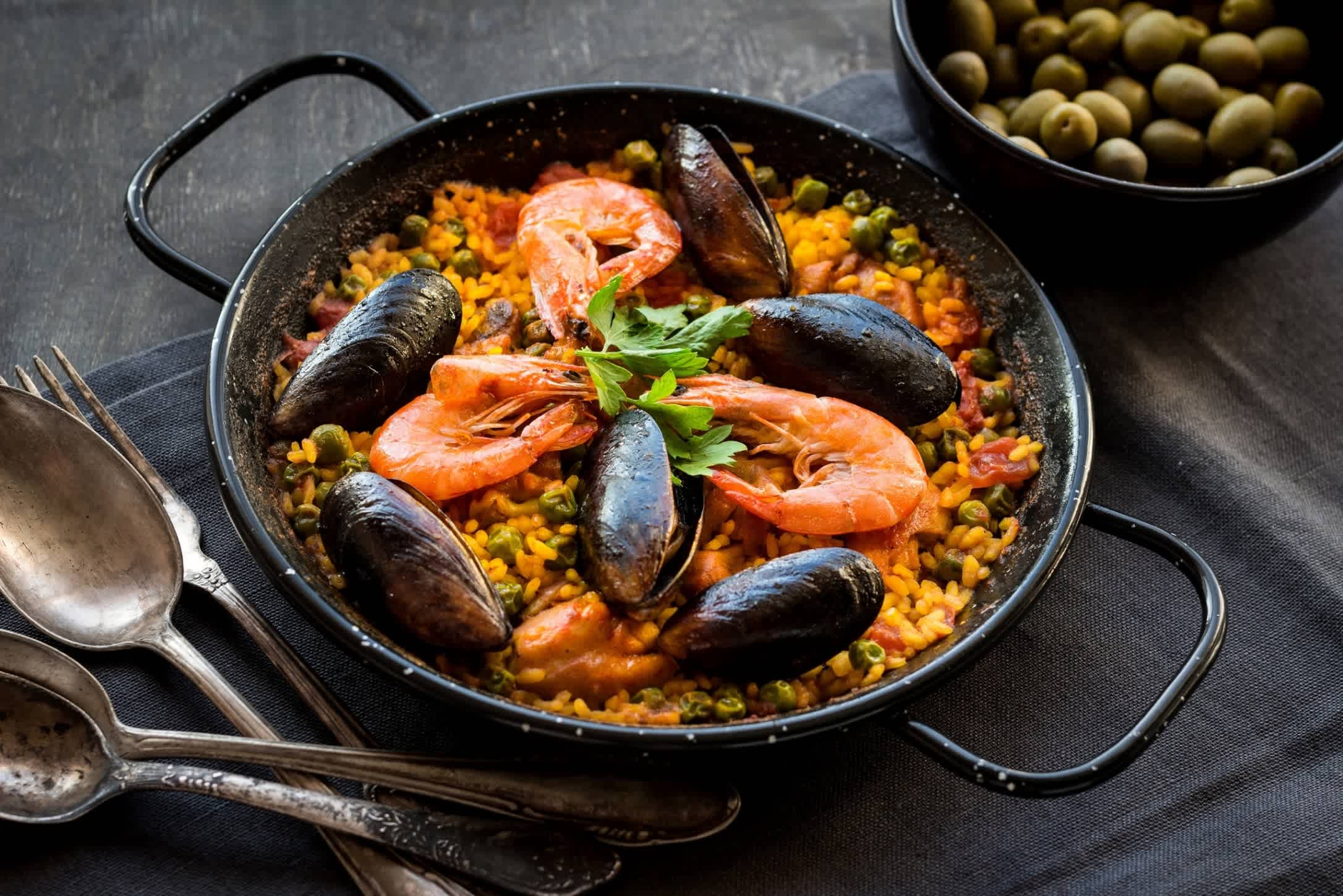
My time in Spain felt like an unending, but very enjoyable, search for the perfect paella, the yummy saffron and rice-based dish that you will find across Spain.
The region around Valencia is known for growing fruits and vegetables. Of course, oranges are grown here, but did you know Valencia is also “Paella’s homeland” according to Lonely Planet. I never had the chance to visit Valencia, but it’s a stop on the new and improved Trans-Europa.
3. Alhambra and Moorish History
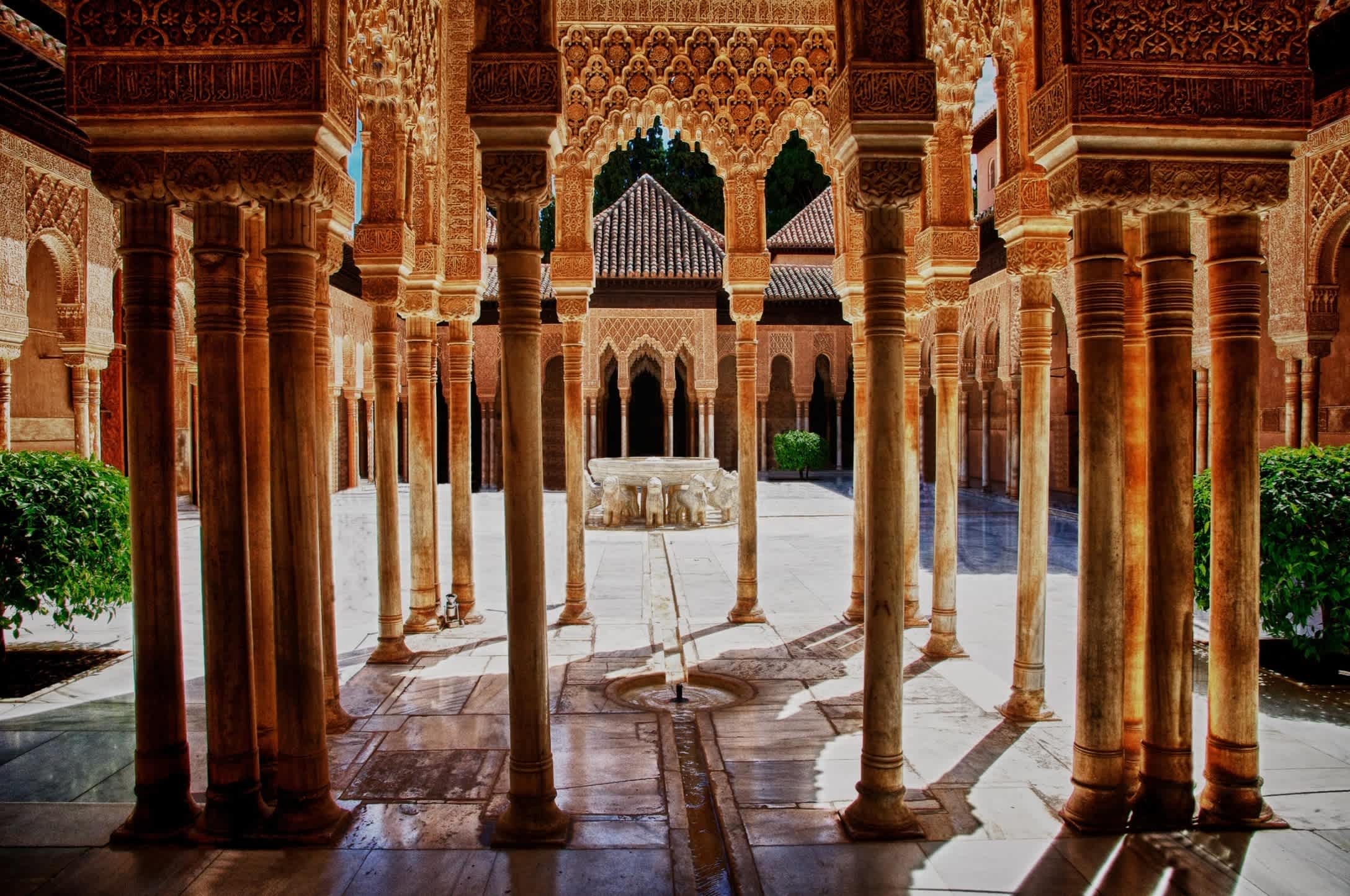
Most of the Iberian Peninsula, which makes up modern day Spain and Portugal, was ruled by the Moors from 711 until 1492 when the Moorish Kingdom of Granada surrendered to the Christian armies of Spain. The Alhambra became a Royal Palace and remains one of the most popular attractions in Spain.
4. Bull Fighting (and more) in and Around Ronda
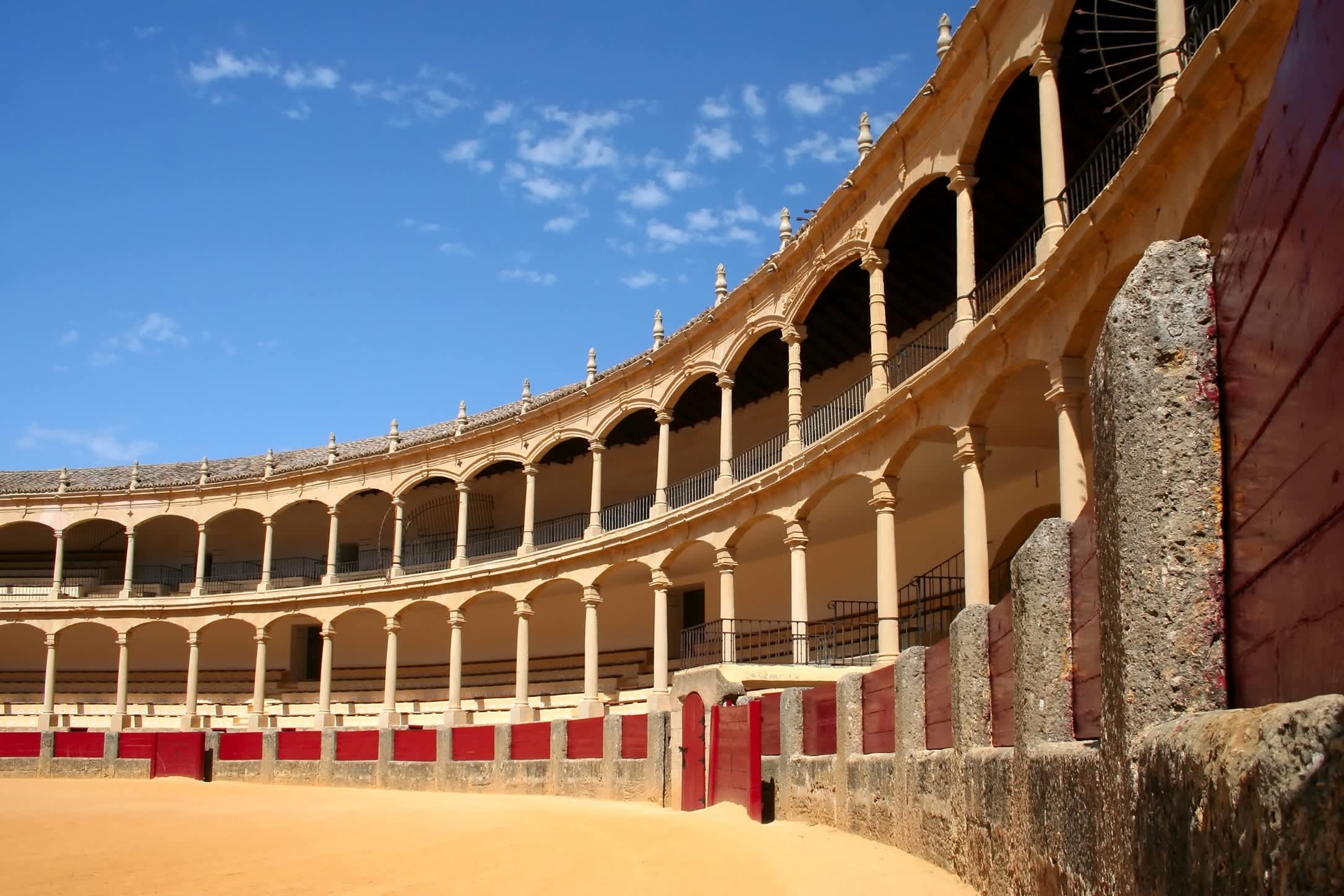
Some consider Ronda to be the birthplace of bull fighting. Home to the oldest bullring in Spain, the city was also a destination for some famous writers. Ernest Hemingway visited often and Orson Welles’ ashes are buried there. If bull fighting isn’t your thing, than you can spend some time in El Torcal de Antequera – a nature reserve known for its unusual landforms. According to Wikipedia, it is regarded as one of the most impressive karst landscapes in Europe.
5. Nothing Like Shoulder Season in Europe
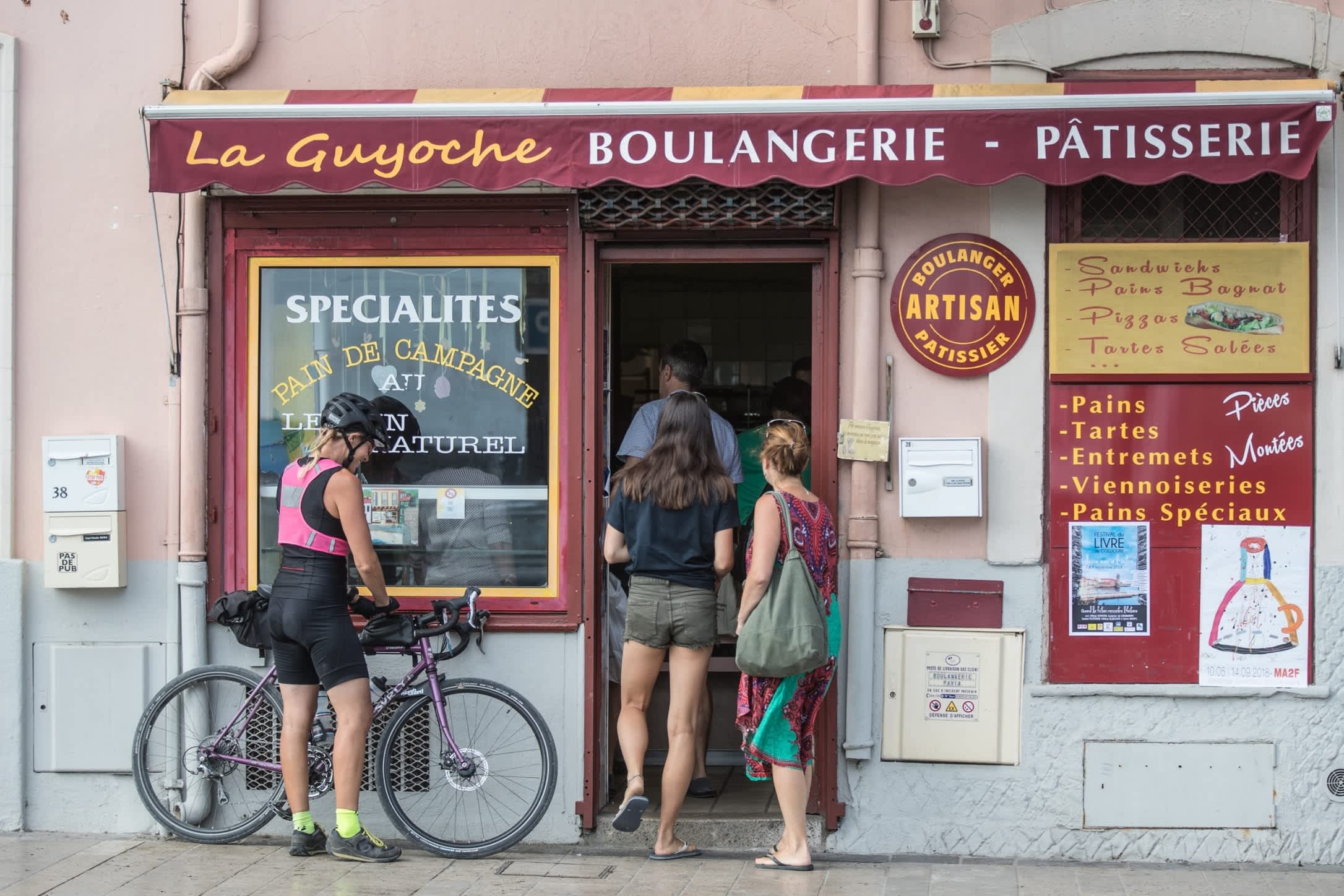
Cities like Tarragona, Valencia and Granada are all very, very busy during the summer months. On the Trans-Europa, you’ll feel travel-savvy visiting in late September, with its cooler temperatures and uncrowded beaches.
]]>For the uninitiated, using terms like freedom, or describing cycling (and cycle touring) as an art form might induce some eye rolling. Oh please, you might say. Freedom? Really?
We have been so fortunate to have the opportunity to work with three talented young filmmakers who have captured some very thoughtful commentary on cycle touring, and what it is all about beyond pedal strokes and sips from a water bottle.
What you will see in the videos below and what makes cycle touring so addictive, so transformative for some, is the fact that it can really make you feel free. In our first video below Tom Perlmutter and Peter Cox talk about how cycle touring allows them to live in the moment and how it allows them the selfish satisfaction of not worrying about the past or the future.
Give these videos a moment and decide for yourself whether it’s all hyperbole or if there are grains of truth in what they are saying.
1. I’ve Lost All Concept of Time
“If you ask me what day of the week it was today I wouldn’t be able to tell you…. we live very much in the moment of now.”
2. Entering a Meditative State
“I think it’s a meditative state that I sort of get into and the miles just sort of fly by… I’ve been trying to do 20 minutes of meditation everyday at home. I find it very hard to fit that into my schedule and here I can do it all day long on the bike and I can still want more of it.”
3. I’m Happy Everyday
“I’m not doing dangerous things, but I always like to do adventures. To take in the feeling of how the country is. If you go by car… you don’t have this close feeling of how it is.”
4. Where the Cycling Takes Me
“Going in this really remote place where I would’ve never been otherwise. So far away from what we have at home. It’s another world.”
5. What I think about while cycling
“The riding a bike is an art in itself. Cause your on a bike you got plenty of time to yourself and it’s free time to think about what you like.”
6. That’s Freedom
“You can’t see it in a car, you can’t see it in a place… the pace of the cycling is the perfect way to see the transition from north to south. You get on your bike and everything goes away.”
After the Cycle Tour Ends
It is sustainable? Can you live like this after a cycle tour ends? After the adventure recedes and life and responsibilities return? Probably not. But did the experience have value? Did you grow as a person? Will it make you a better person? That’s up to each individual I guess. (cue the eye rolling now)
]]>After inquiring with our Operations Manager, our South American Epic tour leader, the Ambassador for Colombia in Canada, and a Colombia based cyclist/filmmaker the answer to the question is an enthusiastic YES!, followed by a more measured but it will be tough. That is about the simplest way to sum up cycling in Colombia. But let me elaborate a bit.
You have likely heard of world class cyclists like Nairo Quintana, and you might have seen a video or read some stories of people cycling through Colombia – either solo or on organized tours (such as our South American Epic) but what is it really like as a cyclist? Is the traffic terrible? Are you going to be kidnapped or robbed by drug cartels or FARC rebels?
>>Learn more about cycling through Colombia on the South American Epic
I have been fortunate enough to ride my bike in many places. Cycle touring through Romania, Ethiopia, Bolivia, Kyrgyzstan and beyond has taught me that very few places are what you expect them to be. I have travelled to Colombia but never on a bike, so I thought I’d ask around and get some further insight about cycling in Colombia by people who really know. I am sure many of you would love to hear what they have to say about cycling in Colombia.
Colombia is Stable and Secure Says Ambassador Federico Hoyos
 Through the friendly Colombia Tourism team at ProColombia here in Canada I was able to pose a few questions to the Colombian Ambassador to Canada, the Honourable Federico Hoyos. He says that “21st century Colombia is a young and vibrant country.” More in his words…
Through the friendly Colombia Tourism team at ProColombia here in Canada I was able to pose a few questions to the Colombian Ambassador to Canada, the Honourable Federico Hoyos. He says that “21st century Colombia is a young and vibrant country.” More in his words…
Tourism in Colombia is steadily increasing year after year, due to a change of image and outside perception of our country. Colombia is an innovative and modern place…added to the fact of stability and security.
Colombia is very well-known for having some of the best cyclists in the world like Rigoberto Urán, Cochise Rodriguez and Nairo Quintana! Due to our beautiful topography, to our mountains, to our very steep slopes, Colombia is a great country for cyclists worldwide. It is going to be tough, it’s going to be exciting, but it is also going to be beautiful because you’re going to see everything: you can see the mountains,the beaches… deserts… in one single country.
Besides, you will sense the warmth of our people who will welcome you with open arms, and you will also get a taste of our food along our roads, which changes from one region to another. And we have great weather too, all year long. It is nice, warm and stable, which of course also contributes to making Colombia a great cycling destination.
Thank you to Mr. Hoyos for taking time out of what is surely a busy schedule to help us with this article.
Colombia is Full of Cycling Enthusiasts says Miles MacDonald
 Miles, TDA Global Cycling’s much respected Operations Manager and experienced world traveler, agrees with the ambassador and shares some helpful safety tips.
Miles, TDA Global Cycling’s much respected Operations Manager and experienced world traveler, agrees with the ambassador and shares some helpful safety tips.
In Colombia, drivers are both used to cyclists, and also tend to go out of their way to give cyclists their deserved space on the road, and that is a great advantage for safe cycling.
From TDA’s experience bringing groups of cyclists to Colombia, and information from local Colombian sources, the security situation on the ground is stable in the vast majority of regions of the country. So it’s good to do some research when planning a route in Colombia. It’s also good to stick to a few good practices that are best followed anywhere in the world.
Miles’ Tips for Cyclists on Staying Safe in Colombia
- Keep your cycling to daylight hours
- Ideally cycle with a friend
- Know where you are going, and read up on the area and roads you’ll be cycling and place where you’ll be sleeping.
- Be wary of crimes of opportunity (such as bike theft from leaving your bike unattended or unlocked)
- Be defensive minded towards traffic
- Be cautious around dogs along the road
- If something doesn’t feel right, trust your instincts
You Have to Surrender Yourself to Colombia Says Gregg Bleakney
Gregg cycled the Americas (North and South!) in 2006 and planted roots in Colombia where he runs his film production company, WhereNext. As he says “Colombia is the holy grail of both storytelling and travel.” His most recent project is The Birders – in search of rare endemic birds of Colombia. He also created this video for us: Why cycle South America – all shot in Colombia.
Just over a decade ago, most of Colombia’s spectacular landscapes were completely off limits to road tripping in a car, and unthinkable on a bicycle. It’s so great to see the guys in our office, most of whom are cyclists, planning and plotting multi-day routes during their lunch break. Most of the time they are traveling on roads that have never been mapped on Strava. It’s truly a period of discovery.
Nothing in Colombia is easy. It’s a place where joy on two wheels is commonplace–but you’ve got to work for it. The more you surrender yourself to Colombia, the more the country will tow you in its wake of joy. My advice is to be like my adopted Colombian street dog, sniff around, talk to strangers, get carnal. Use your time in Colombia to indulge your curiosity.
Cristiano Shares Some Words of Caution About This Friendly Nation
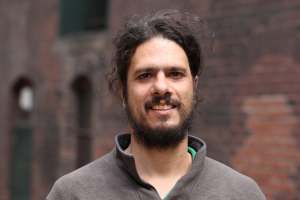 Having been the tour leader for our various tours in South America over the last decade and having cycled throughout South America himself, who better to finish this off than someone with on-the-ground experience.
Having been the tour leader for our various tours in South America over the last decade and having cycled throughout South America himself, who better to finish this off than someone with on-the-ground experience.
More and more international cyclists have been visiting Colombia, whether touring, racing or just attracted by world famous climbs like Paso Letras, which we take on the [South American Epic]
As long as you know where you are going [and avoid known narco guerilla areas] I consider it pretty safe. Having said that, in 2022 there are presidential elections and things could eventually take some kind of a U-turn, [or] improve even more. In my opinion, if you want to cycle in Colombia, now is a great time to do so.
There was a slogan from the government a few years ago that said: ‘Colombia, the only risk is wanting to stay’… the main risk of cycling in Colombia is the same as cycling on any shared road anywhere in the world, motorized vehicles. Also, the ups and downs can be really long and really steep, so it is easy to gain a lot of speed on the downhills.
There is no other country in Latin America with anywhere near the amount of cyclists as in Colombia. I’m not talking only commuters and rural cyclists, I’m talking also about athletes. So in general drivers know how to behave when there are cyclists on the road, when they are not cyclists themselves.
People are extremely friendly! I do not remember one aggressive encounter there ever! People are always smiling. If travelling alone, you will always be invited into people’s houses etc.
>>Read Cristiano’s blog ‘Colombia’s Crazy Cycling Culture’
My Final Thoughts on our Travel Misconceptions
So in conclusion, yes it is safe. And yes, there is many a hill to climb in Colombia. That is the one point everyone – including the Ambassador – all agreed on, so make sure you do some training.
When we haven’t been somewhere ourselves, we have no choice but to base our impressions of a place on a small fraction of reality, and a large amount of assumption. So check yourself and make sure it’s real risk and not just fear holding you back. This is certainly not the first time we’ve written on these topics of perception and risk.
That’s not to say there aren’t risks – there are. You need to educate yourself, and be cautious and clear eyed about any travel to a new place where cultures and customs are different than what you are used to. Use some of Miles’ tips above and once you have done that, take it all in. Pedal hard. Breathe deeply as you experience all that Colombia has to offer.
>>Read more about Colombia: Countless Reasons to Cycle Colombia Now
RELATED
TOUR

South American Epic
This challenging expedition offers you the best opportunity to explore the vastness and diversity of South America by bike. In keeping with the TDA...
